My Passion For Fashion
Sunday, February 28, 2010
This is a guest blog by my granddaughter Rebecca Stewart, 12.
I have always had a great passion for fashion. I find that fashion is like art, your clothes are the canvas, and the accessories are the paint which is the finishing touch for a great piece of art.

This first picture is one my favorite pictures because it reminds me of the picture of Gemma Ward in my Teen Vogue handbook that I keep in my brown pleather tote. The scarf I am wearing is a white printed scarf by Old Navy.

I would choose flats over tennis shoes any day because you feel pretty in them but there is no need to worry about foot problems, which stilettos will cause. I love the neutral metallic color of my Aldo statement flats.
One of my favorite things to do on a rainy afternoon is to bake. Though baking is entertaining, it can be messy as well, so my solution was to find a cute and useful apron, to protect my black clothes from flour dust.

You wouldn’t believe that this blue satin-like dress is actually one of my grandmother's old night shifts she used to wear a long time ago. I just love the icy blue color.

As you can tell I quite enjoy wearing scarves. This one I’m wearing is a floral printed scarf from Old Navy.

These days I have been wearing my turquoise Olympic sweater because the Vancouver Olympic Games are happening as I write. You might not see it but there is an inukshuk on the front of it.

I adore this painting (by Jim Cummins) of my mum, it looks like her. So I decided to wear this Twilight shirt because my mum is a real twi-hard.

This floral dress is one I got in Los Cabos Mexico. I felt it was appropriate to do my hair in a messy updo, to show the dresses halter straps. Behind me is a painting (Jim McKenzie) featuring my Aunt Ale and my mother on a ferry boat in Active Pass.

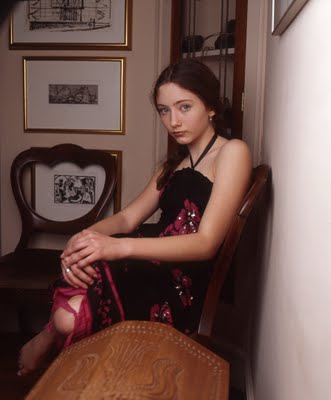
This shirt was given to me by friend Mina and I like the colors. That’s me in the background a long time ago.

 This last photo is not that special but I still thought it would be nice to have it here because it includes my sister Lauren. I am playing the piano while wearing a very baggy button up shirt so I cinched it with a studded blue belt.
This last photo is not that special but I still thought it would be nice to have it here because it includes my sister Lauren. I am playing the piano while wearing a very baggy button up shirt so I cinched it with a studded blue belt.
Dilations Into A Runcible Cat
Saturday, February 27, 2010
The following column by my friend Ben Metcalfe (1919-2003) appeared in the January, 1980 issue of Vancouver Magazine. The wonderful illustration was pointillistically drawn by my friend Ian Bateson (who is very much alive).
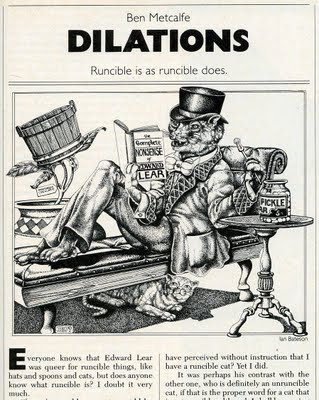
Everyone knows that Edward Lear was queer for runcible things, like hats and spoons and cats, but does anyone know what runcible is? I doubt it very much.
The only possible exception could be myself. At least I have tried to find out, not alone for the sake of disinterested scholarship, although scholars are welcome to the pickings, but because I have a runcible cat.
Since Lear implanted it there in the late Nineteenth Century, the word runcible has been entrenched in facetious English usage; if rarely called upon, always available. Yet no one, not even the fastidious H.W. Fowler, nor his successor Sir Ernest Gowens, nor the great Oxford Dictionary itself, has dared to explore it, define it, or at least venture, if ever so roughly, when and how it could be used.
Except that it became suddenly my own ineluctable portion to enquire into its mysteries root and branch, I, too, might have continued mutely to acquiesce in its existence without knowledge of its meaning.
Which, thinking on it, is not precisely true, for it is the very pith of runcible that one knows its meaning without necessarily knowing that one knows it – something, in other words, that can be learned, not taught. Else how, for instance, should I have perceived without instruction that I have a runcible cat? Yet I did.
It was perhaps his contrast with the other one, who is definitely an unruncible cat, if that is the proper word for a cat that is not runcible, although I shall be coming to that problem shortly.
Certainly, everything else being equal, if you happened upon a runcible and an unruncible cat in the same moment, you would know immediately which was which. I know that I would, although I would not go so far as to say the same for hats and spoons.
Our runcible cat’s name is Mr. Smith. At any rate, that is what we call him. If T.S. Eliot was right about cats, and I daresay he was, Mr. Smith has two other names: his real name and the name he calls himself. Mr. Smith, however, is the only name I can vouch for; and he does answer to it in his way.
Our unruncible cat’s name is Hui Neng, after the Sixth Patriarch of he Ch’an Sect (638-713), the famous Dhyana Master of the Tang Dynasty, which has nothing whatsoever to do with his unruncibility but only with the fact that I was given him by an equally unruncible shopkeeper in Chinatown. He, too – I mean Hui Neng – probably has two other names, both secret, and once had a fourth, Candy, given him by his previous proprietor but rejected by myself as utterly inappropriate.
Now, in this short space, I have already extended the word runcible into two derivative forms; i.e. unruncible and unruncibiliy, both admittedly too loose for comfort, so it is imperative that we look into Lear’s original word lest we wallow in misconstruction.
The word runcible itself is apparently an adjective of sorts, though with subtly plausible affinities to an unused (because unknown?) verb, which may or not be runce, or even runc, and, whatever it is, may or may not be transitive; it is of no consequence.
It may be best at this point, too, that I remark that I am merely a writer, neither a grammarian, nor an etymologist, nor a linguist, but merely a writer.
Be that as it may, the deepest one can dig with satisfaction into the roots of the word runcible in the Oxford, or any other dictionary of the English language is runci.
Before runci, one gets runca, as in runcation, meaning the act of weeding; and words like runch (a kind of weed); runchie (another word for weeds, used generally by rurigeneous, that is country folk); and after runci, runcle ( a kind of beet). All of which take us nowhere, and leaves cats, if not hats and spoons, far behind.
So back to runci…
The first possibility is runcinate, an adjective signifying a surface that is saw-toothed, with lobes curving towards its base, deriving from the Latin runcina, meaning plane, but apparently often mistaken for a saw.
This characteristic might well occur in spoons, I suppose and (although God know how) also in hats. But while it is more or less true that a cat’s tongue is more or less runcinate, it does not seem quite enough to justify calling the whole cat runcinate, let alone runcible. For would not that make all cats runcible? And is it not the whole point that all cats are not runcible?
Hui Neng would certainly testify to that. And I imagine that Lear would agree. So much for runcinate.
The second, and last, possibility is runcival, meaning several and mutually unrelated things, but interesting at first sound because, if one were to imagine a Spaniard enunciating runcival, one would certainly hear him say runcible, for Spanish-speaking peoples, especially Castillians [sic], cannot, or at any rate do no, sav V, but turn it into B, as in Biba Zapata!
Would that Edward Lear had been even remotely Spanish, and at least half our quest would be done. He was, of course, not.
Neither is it recorded anywhere that he was afflicted by one of those charming impediments not unusual in the speech of the English educated classes, the most common of which turned the R into a W, as in Wichard, or Wonald, or Wuth. Or wuncible? But, of course, that wouldn’t do; and in any case he was, again, not.
Perhaps, where there is plenty of room for speculation, runcival, or rouncival as it was commonly spelled after its first appearance in the Sixteenth Century, wormed its way into Lear’s yeasty mind, fermented there and gave off a more esoteric form.
It is a curious enough word in its own right, thought to derive from the place name, Roncevalles (bramble valley), a tiny, lovely place in the Pyrenees not far from Pamplona. And, while today it means only a large variety of garden pea, it was once used to denote giganticism, robustiousness, a heavy fall or crash, a form of alliterative verse, a witch, and was perhaps the best of all possible nouns for a woman of large build and boisterous or loose manners. Curious indeed, and precisely the word for Judy LaMarsh, but not for our Mr. Smith. And least of all for Hui Neng.
Yet Mr. Smith is undeniably runcible in the precise way that Edward Lear unquestionably meant the word to signify, whether or not it seethed up out of his awareness of runcival.

How so, if he is not pea-like, alliterative or witchy, and not even rarely falls heavily about the place like a big, boisterous woman (although he is big); how so is Mr. Smith or any cat runcible?
It is not because of the word, of that much we can be sure.
Cats do not fit themselves to ready-made words, not runcible cats, that is. As the line comes before the meaning in calligraphy, so does the runcible cat appear before the word.
People and most others – Hui Neng, for example make themselves look like available words; such as beautiful, slim, clever, rich, adorable and popular. Not so a runcible cat.
For a runcible cat there is no word, wherefore he is runcible. It is as simple as that. Or as the scholars say, Q.E.D.
Edward Lear, however, knowing that people need words whether or not they understand their meaning, and being the greatest wordsmith of us all, smithied us a word that clearly means everything and nothing at once.
And he employed it with such aptness as left nothing to doubt. As in…
His body is perfectly spherical,
He weareth a runcible hat.
Or…
They dined on mince and slices of
Quince,
Which they ate with a runcible spoon…
Or…
He has gone to fish, for his aunt
Jobiska’s
Runcible Cat with crimson whiskers!
Runcible is as runcible does, of course, notwithstanding the fact that no one knows what it does, and that probably goes for hats and spoons as much as it does for cats, although I do not claim to speak for hats and spoons in this case. Only cats.
Four Men Of Impecable Good Taste
Friday, February 26, 2010
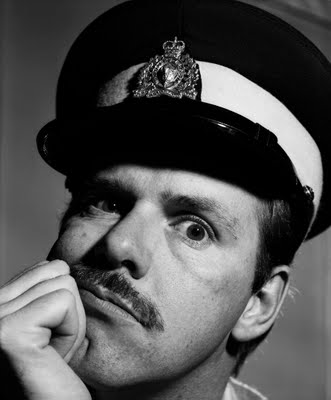
I fell for the first Canadian I ever met. I married Rosemary Healey in Mexico City in 1968. I knew nothing of Canada.
She told me of a man called Pierre Trudeau who was the Canadian Prime Minister and she played me records of Gilles Vigneault. I wasn’t fazed by the first ( I did not understand Rosemary’s hero-worship of the man) nor was I impressed by the singing of the second. My mother had harped for many years about an “ugly French Canadian patois”. The few Canadians I had been exposed to had been the rowdy French kind in Acapulco and Veracruz. My mother had told me, “They are French Canadian,” as an explanation for their loud behaviour.
Then my Yorkshire friend (and godfather of my eldest daughter) Andrew Taylor brought a record album that had a deadpan and depressing looking man on the cover. He sang a melancholic song called Suzanne and an even more depressing So Long Marianne. On another day he insisted on playing a record by a woman called Joni Mitchell. I was into Joan Baez and Carole King. I was not interested.
I did not find Canadians in the least exciting with the exception of my lovely wife. I was much too busy admiring her shapely legs and feeling how lucky I was. I was impressed on how she planned to go to the hospital to have our first daughter on a Friday so as to go back to work as soon as possible the next week. When my friends asked my about my wife I would invariably say she is of a “hardy Canadian stock”. Very soon Rosemary wore the financial pants of our family.
One day (before we got married) I took her to lunch to a cocina economica (a cheap Mexican home-style restaurant with a fixed daily menu) and I was shocked to see her use a toothpick. I had to explain to her that this would be considered uncouth by most of my friends and my mother. She never ever used a toothpick again.
When we finally decided to move up to Vancouver with our two Mexican-born daughters I remember distinctly that my youngest daughter’s godfather, Raul Guerrero Montemayor, a polyglot who had been educated in Switzerland, told me, “I am sure you will do well in Canada but don’t forget that the fact that Canadians are mostly white does not necessarily make them civilized.” He used the more encompassing Spanish term “educado” which includes culture, manners and education.
It was in Vancouver that through my early introduction to CBC Radio I found that the correct pronunciation was not New-Found-Land but Newfun-Land. I was hooked to the CBC then.
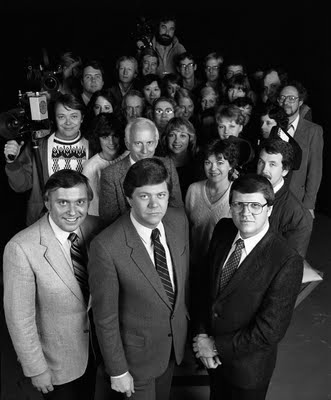
For many of my years here (well into the early 90s) I felt like a tourist in a beautiful city (in spite of its architecture I would tell my visitors from down south). I did become a Canadian citizen but having been born and raised in Argentina and then in Mexico made it difficult to experience the kind of exuberant feeling displayed these last weeks during our very own Olympics.
Time has warmed me to Leonard Cohen and Joni Mitchell and I am proud that Trudeau was a Canadian statesman. I enjoyed his deft manipulation of language. But more than anything I admired Trudeau’s intelligence and class. Rosemary was right all the time.
Of late I have been thinking a lot about class and good taste. I cringe at many of the Olympic shenanigans reported by the much too gushy Vancouver Sun. I prefer the understated and not complete (at least not 100%) acceptance of the 2010 Winter Olympics when I listen to Rick Cluff’s Early Edition on CBC Radio 1. I have been listening to him daily as I take my Rosemary to her Sprott-Shaw computer classes downtown at 8 A.M.
It was on Monday, listening to the banter between Rick Cluff and Steve Armitage, that I was finally feeling awfully proud about being Canadian. Here are two men with beautiful voices (rare in contemporary radio) discussing with wit, class and intelligence the possible final medal count for Canadians. I lightly object to Cluff’s description and insistence on the term “veteran sportscaster” to define Steve Armitage. I don’t think Armitage needs any such definitions. He is simply a superb sports journalist and not at all like the male, hockey shouter/sportscasters of “our” NBC/CTV Olympic network.
We Canadians may be understated. We may be reluctant to brag and we may be defined by others as being colourless, bland and boring. I am beginning to understand that fallacy.
But I see that my initial opinion upon listening to that Leonard Cohen album back in Mexico may have been a bit much too sophisticated for this now reformed unsophisticated Latin. Canadians grow on you in the same way that Canada has grown on me.
For many years I boasted that I had never ever seen a single complete episode of the Beachcombers. I have always been quick to opine that I loathe TV. Part of the reason is that there is a lot of good television if you look for it and I have always been afraid of TV addiction.
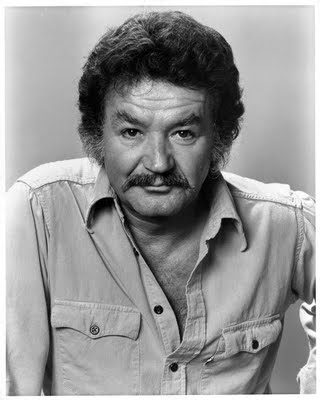
CBC once assigned me to go to Gibson’s Landing to photograph the Beachcombers’ cast. I talked to one of the producers on the phone and made it a point to brag on my ignorance about the show. “I know who Bruno Gerussi is because I have seen him in Super-Valu and McCain’s Pizza TV ads. But clue me in on the others in the cast.” I was truly stupid and ignorant and rude! The man (I don’t remember if it was Marc Strange, Philip Keatley or Hugh Beard) told me on the phone, “I’ll meet you at Molly’s Reach.” I remember saying, “Molly’s Beach?” I had not yet learned to mask my supposed superiority!
Yesterday I attempted to figure out the subtlety of Canadian hockey figuring that the slower version (as compared to the men's) Canadian female team might help. It didn’t and I am still in the dark on this Canadian game. During one of the ads (this was during the Canadian/US final) I channel surfed one up from channel 9 to channel 10 which was showing an old Beachcombers. This episode involved the determination that a cow was simply meat and that he (Jackson Davies) could dispatch the animal with no problem. Within seconds there was Bruno Gerussi, Pat Johns and Robert Clothier on the scene bringing me back memories of my day at the Reach. I knew who they were because I had photographed them. In one short interval, where Jackson Davies talks to the cow and ends up shooting at a tin can instead was pure and good TV. They were five or six minutes that somehow justified all the bad stuff surrounding it in other channels. It was understated and it went straight to my heart.
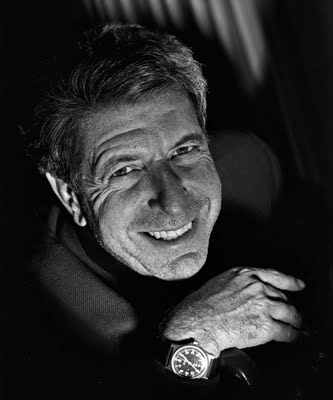
I think I am beginning to understand what it is to be Canadian and I am feeling very proud to be one. My wife, would be too polite (and much too classy) to point out how wrong I have been since I first met her in 1968. I am sure that if I had been the one with the toothpick she would have found a more polite and kind way to let me now about my transgression.
In the CBC TV and Radio group picture which I took around 1980 or 81 that’s (from left to right) Phil Reimer, Bill Good Jr. and Steve Armitage on the front row. I took the picture of Bruno Gerussi for a CBC open house. I have many portraits of Jackson Davies. I could not possibly go wrong with that man. This one is but one of the pictures. And I made Leonard Cohen laugh (by telling him to not even smile) so I could erase for ever that cover of his in Songs of Leonard Cohen.
Another Find From My Grandmother's Trunk
Thursday, February 25, 2010

When we Left for Mexico City from Buenos Aires in 1955 my grandmother gave me a small can of aluminum/silver paint and told me to put our initials on the heavy wooden trunks that had been in our family since the 1920s. For her trunk I was to put the initials DIG which stood for Dolores de Irureta Goyena. Through the years and after many moves the trunks are all gone but one. The one that remains still has my unsteady hand letters DIG and it is that trunk that I have been investigating these days. As we say in Spanish, “Cuando el diablo no tiene nada que hacer con el rabo espanta moscas.” This translates to, “When the devil is idle, with his tails he swats flies.” I have been idle with a persistent cough and rheumatism in my elbows and hands.
Yesterday I found the April envelope with the pictures of the Edwardian or early 20s Latin woman. Today I found the startingly modern (the crop and the angle) photograph of a mysterious undraped woman with her cat.
I am beginning to suspect that my grandfather Don Tirso de Irureta Goyena, a famous man of letters, a defender of the Spanish language and a prosperous lawyer who bought one of the first motorcars in Manila, might have also have had a hidden talent. Could he have been a good amateur photographer? I suspect he might have had an assistant in this venture as he had a Japanese driver. What other tasks did the man have besides driving my grandfather to work?
Why didn’t my grandmother throw these pictures away? At the time, in the late 1910s, they would have been scandalous. This envelope, with the pictures of the woman with the cat had the name Gani y el Gato (Gani and the cat). Who might have Gani been? I guess it will remain a mystery as those who were around at the time are all dead.
I wonder what tomorrow will bring as I examine the contents of my grandmother’s trunk.
April From The Past
Wednesday, February 24, 2010

I found these pictures in an envelope in one of the old chests that used to belong to my grandmother. I have no idea who the woman is nor do I know who took the pictures. One of the pictures looks like an early colour photograph that may have been printed in the early 1920s. I was shocked to find the nudes. I never revealed to my grandmother when she was alive that I was interested in photography. We always talked about art. Both of us painted. She taught me to use pastels. She often told me that the Manila family pictures had been taken by a Japanese photographer. Most of those photographs have a stamp in the back. The ones in the envelope titled April, have no markings that could give me an indication of their provenance.
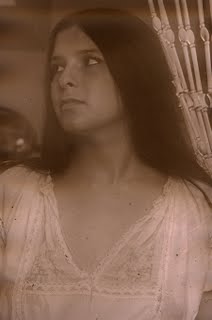
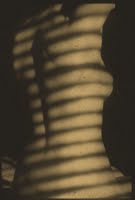
I have done my best to scan these pictures and make them as clear as I can. It is such a shame that there is nobody alive who can tell me who the lovely Latin looking woman is. Could her name be April?

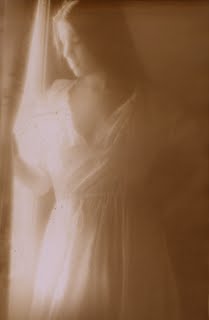
The Cat Out Of The Blog Bag
Tuesday, February 23, 2010

I am not letting the cat out of the blog bag by placing this picture of Rebecca here. A week ago I called her up and asked her if she would like to pose for me in some fashion shots. She was to pick the clothes and then write about them in her very own fashion blog. She liked the idea and immediately said she would do it.
I had a job today to photograph 10 lawyers (a large Canadian tax law firm) today and not having a studio anymore I told my contact at the firm that I was prepared to show up at their office with a portable backdrop. I thought it would be a good idea to try out the setup at home and use Rebecca as my subject. I came up with the idea of the fashion shots and I was going to use a neutral gray backdrop. The idea was to make sure it would work well. I did not do this as I explain belos. But all went well at the tax law firm.
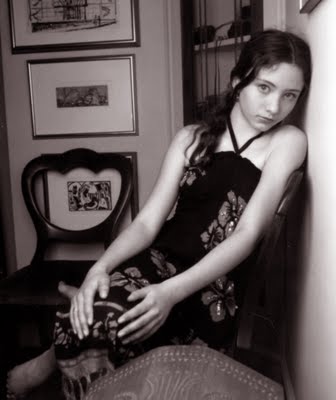
We have lived in our Athlone Street house since 1986 and except for our garden which has appeared in gardening magazines (including the American publication, Better Homes & Gardens) and has been on countless tours (bus loads from different garden clubs, city tours and the last Ballet BC Garden Tour) the house itself has rarely appeared in any of my photos. I decided that I would do Rebecca’s fashion pictures taking advantage of our home which is an eclectic mix of stuff from all over the world. I would take (and did take) pictures of Rebecca using my medium format camera with colour transparency film. The pictures are taken. Now I must wait for Rebecca to write about them.
The pictures here are two Fuji b+w instant prints that will surely look all that much better in colour.
My Olympic Beaver
Monday, February 22, 2010
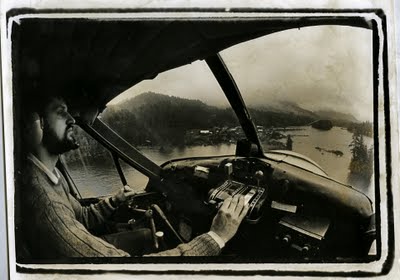
No matter how much metalworking finesse goes into the construction of a prototype airplane, there is a roughness around the edges, a dimpled aluminum skin and a general lack of finish that is the mark of a hand built machine. Details come later. The esthetics can wait. No need for a racy paint job. Let’s see if this thing will fly.
Still the de Havilland Canada DHC-2 Beaver prototype that Wing Commander Russ Bannock climbed into shortly before 10 A.M. on August 16, 1947, was a handsome airplane in its own way: a sturdy-looking, squared-off, pug nosed fuselage, fronted with a big, flat, no-nonsense radial engine with its bulk set on thick landing-gear struts that gave it the look of a heads-up bulldog ready to leap off the ground.
The Immortal Beaver – The World’s Greatest Bush Plane by Sean Rossiter, 1996, Douglas & McIntyre

This blog has been in my mind for the last week but it finally put itself in front of me when Rebecca on Saturday said that there was a very big squirrel in the garden that just might be eating Rosemary’s bulbs. Just to be cute I told Rebecca that it was not a squirrel but our resident beaver and that it had good teeth. In the presence of her mother Rebecca (12) alluded to other qualities of beavers and I kept my mouth shut being happy that at long last Rebecca has moved on from innuendo jokes on flatulence.
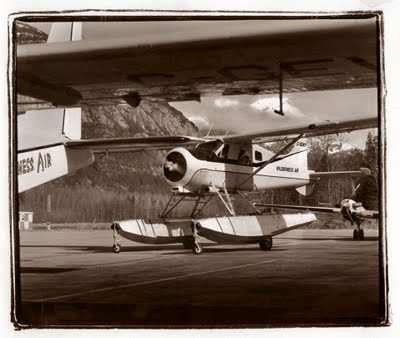
Today Sunday (I am writing Monday’s blog today) I was enjoying my New York Times in bed (on paper, not on a computer monitor screen). I heard a noise and matter-of-factly I told Rosemary, “That’s a de Havilland Beaver.”
With a modified (restricted) air space over Vancouver since a bit before the Olympics began the sounds over our house (we are at 41st and Granville and thus not far from the Vancouver Airport) have radically changed. We no longer hear as many commercial jets. There are three distinct airplane sounds over our house which must be some special corridor. One is the almost unceasing sound of helicopters that must be ferrying officials, politicians, athletes and Olympic guests from the airport or from Richmond Olympic facilities.
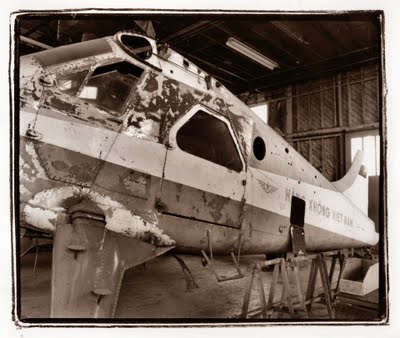
Helicopters of the blacker kind made my Strathcona- resident friend Mark Budgen, finally move to Oliver, B.C. for the duration of the games. It seems that these big black helicopters would fly back and forth early mornings over his house and rattle his dishes. The same noises have driven my friend Ian Bateson batty. His design firm Baseline is in the Vancouver Block on Granville and Georgia. Oliver does not beckon as he has to make ends meet and continue his work.
I seem to have better luck. While the helicopters are a pain the sounds of the other two types of aircraft are much to my liking. A pair of F-18s keeps booming around in the mornings and then there is that Beaver. It could be one or many. But I have taken possession of them, and converted them to my one Olympic Beaver.
It occurred to me this morning that Sean Rossiter’s comparison of the Beaver to “a heads-up bulldog ready to leap off the ground” is open to my own re-interpretation.
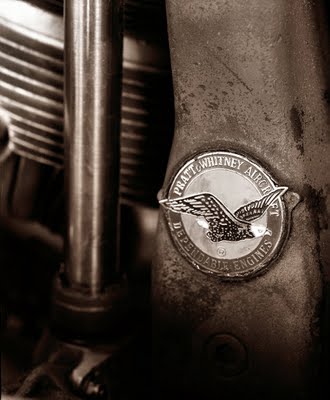
Casa (short for Casanova) has been at home now for a week. He is Rosemary’s 17 pound cat. Casa (he is as sturdy looking as a de Havilland Beaver) has quickly ingratiated himself with his owner and has quietly finessed himself into an appreciation by my snobbish, female cat Plata. They now sleep at the foot of our bed (on an Eaton’s blue blanket) a mere inches apart. When I go up the stairs to our bedroom to check on Rosemary’s progress with her Word and Powerpoint classes (she works in bed with her laptop) I find the big presence of Casa on the bed a comforting one. The world is just fine if Casa is there and that Beaver flies over my house with an equanimity that comes from having done it since that prototype first flew in 1947. When the Olympics are gone I will miss my Olympic Beaver but I know it (he?) will be flying elsewhere with regularity and dependability. Some things don’t change. Thank God.
Some may wonder about the sounds of airplanes to a discerning ear. Most will readily admit that for better or for worse Harley Davidsons sound different to most other motorcycles. The same difference applies to Beavers. There is a primitive put-putness to the Harley sound that is paralleled by the Beaver. The Harley sounds as if is not tuned. My friend Sean Rossiter (not an expert on motorcycles but indeed on airplanes) explained today Sunday that Harleys have symmetrically oposed cylinders, two of them, and that there is no way to make such an engine purr like Rosemary's Casa. He further explained that the Pratt & Whitney radial engine of a de Havilland Beaver is air cooled. He told me that water cooled airplane engines bring with the cooling an inherent noise supression that is absent with the air cooled radial engine. It is the Beaver's sound that for me is a trademark to its very dependability. It is a handsome low frequency sound that does not beat around the bush. Rossiter told me that our beloved Grumman A-6s were very loud because the engines were turbo jets. It seems that the transition to the more quiet turbofan engines passed me by. "F-18s make a lot noise even though they are turbofans because the pilots are making the noise on purpose to make their presence over our Vancouver skies clearly evident." "Do they make more noise when they switch on the afterburners?" I asked him. "Yes." Some years ago when Rebecca was around 7 I took her to an Abbotsford Air Show. "What is your favourite airplane here?" I asked her. "The F-14 Tomcat, " she replied. I asked her why. "Because it is loud." That my Rebecca chose the very plane that somehow has carried the mantle of that other great Grumman plane the A-6 (the Tomcat is also manufactured by Grumman) made me instantly appreciate her more.
We will have to book a flight in a Beaver, soon.
I'll Remember April - In February
Sunday, February 21, 2010

Rosemary came home from Safeway yesterday with something called rainbow, three cheese, tortellini. We were to have that for supper with the girls and with their mother Hilary.
During the day I took some photographs of Rebecca. I had come up with the idea on Friday on having her bring stuff to wear and for her to write a guest blog on her idea of what fashion is all about. Since of late she has moved from the books section of the main branch of the Vancouver Public Library to the teen section where they have teen magazines I have noticed she likes to read teen fashion magazines.
I photographed her in the park and then making sticky cinnamon buns in the kitchen, a photograph at the piano and a few others. Lauren felt left out. I told her I would photograph her on another day.
I circumvented the problem of what to do with the rainbow, three cheese tortellini, by making a white béchamel sauce to which I added some chopped onion, three tablespoonfuls of ketchup, some white wine, a bit of chicken broth extract and a teaspoonful of Spanish paprika. I thickened the sauce with cream and grated some good Parmesan and old white cheddar. The girls had second helpings. Dinner went smoothly. We had Rebecca’s excellent cinnamon buns for dessert.
Before dinner Rebecca had gone upstairs to put on one of Rosemary’s dresses for a shot. Meanwhile Lauren came down wearing a pink dress. “It almost fits me,”she said. Our Mexican housekeeper Clemen had made the dress for Hilary some 33 years ago. Lauren’s hair was a mess. “If you want me to photograph you, you have to brush your hair.” “I don’t want you to photograph me.” She changed her mind and went up to brush her hair. Rebecca told her, “You look silly with your ears showing.”

I took a couple of transparencies. Lauren looked so cute I decided to shoot a couple of Fuji instant pictures. While my Ektachromes are accurately exposed this Fuji instant picture film is all over the map. The highlights had lost their texture so I had to fix them up. The snaps are pleasant to look at nonetheless.
After dinner I told Hilary that we could either watch Robert Mitchum and Jean Simmons in Angel Face or Clark Gable, Spencer Tracy, Claudette Colbert and Hedy Lamarr in Boom Town. That was not to be as Hilary is into speed skating. Even Rosemary was watching. I sadly moved to the living room and put on the 1958 recording of Stan [Getz] Meets Chet [Baker]. I sat down to exquisitely put myself into a melancholy mood. Just a few seconds into I’ll Remember April Lauren came into the living room and danced with a big smile on her face! I was saved from that exquisite melancholy. We scanned both the Fuji prints and here they are!
The Three Czechs

I find the concept of nationality when associated with Sports a somewhat troubling one. I have watched my Argentine football team lose too many games particularly when they played in Mexico City. The excuse, then, was the city’s altitude. The Mexican sports announcers pointed all kinds of other deficiencies in my Argentines. I began to dislike these announcers that my mother (a fan of football) called buitres (buzzards). What really made my blood boil was when my Argentine players would fall to the ground and which this impartial Argentine thought were vicious Mexican fouls. The buzzards discounted these as obvious examples of Argentines doing what they did best which was to dance the tango. The idea of dancing the tango is associated by Latin Americans as an example of soap opera over-acting.
I left all that behind when I came to Vancouver in 1975 were I was introduced to something called ice hockey on my portable b+w TV. In those days few players wore helmets or at least the one who seemed to be the best, Guy Lafleur didn’t. Even I could see he had style and speed as I watched his longish hair sweep back as he skated. I could never understand the function of the Hammond Organ that kept playing the Mexican Hat Dance.
I explained to my Argentine cousins that Canadians played a game on ice in which they would almost kill an opponent with a stick. An official would come and say, “You have been a bad boy, so go to the penalty box and sit there for a few minutes.” My cousins did not believe me and to this day I find the hockey penalty concept as alien and difficult to comprehend as Canada’s parliamentary democracy.
It was sometime around the mid 80s that my friend Paul Leisz took me to a real live Canucks game and I began to appreciate the sport even if I will never understand the subtleties of the game. It is much too fast for me to understand them.
It was also in the 80s when my good friend Mike Varga (surely the best Canadian CBC hockey and sports cameraman in the business) took me into a CBC command van where I was able to see the Hockey Night in Canada director (like a general in the field) direct his many cameramen on a wall-full of TV monitors. His job seemed to be as difficult and stressful as that of an air-traffic controller.
In the 80s, too I was commanded to follow coach La Forge to Edmonton where his Canucks were playing against Wayne Gretzky’s Oilers. I had been further commanded (by Vancouver Magazine’s Chris Dahl) to take action pictures of the game. My experience in hockey photography was as limited as that of boxing. It was nonexistent. I didn’t know where to stand to take my pictures. Mike Varga was in his special booth and he invited me to join him. There was a plastic or glass wall separating us from the Oiler’s bench. Wayne Gretzky was right there trying to figure where he had seen me. I had taken his picture on his 21st birthday in CBC’s Studio 40 in Vancouver.
My knowledge of hockey has not improved since but that did not prevent me from watching the Canadian team play Switzerland and today against the United States. When convenient I try to tell myself that I am Argentine-born so I should not be concerned if the Canadians (not we) lose. They did lose and I am a tad sad. But being older and wiser I am not going to let the emotions of those games of the Argentine football team back in Mexico City affect my morale. It is only a game I say to myself. It is not important.
As I was thinking about hockey today I had a pang of memory overcoming me when I read about Jágr being the best player in the Czech team that lost (also today) to the Russians. I went to my hocke files and found an envelope in which I had written Canucks – The Three Chekes [sic]. When I looked at the pictures I had printed I remembered a bit. The picture must have been taken either 1990 or 1991 (or perhaps a bit earlier) when Jágr had played with the Pittsburgh Penguins (a fact I did not know but found in Wikipedia. Remember I know nothing about hockey). A sports writer for Vancouver Magazine (one that had the credibility of writing for Saturday Night but I do not now remember his name) had concocted a column that was about the three Czechs who must at one time had played together. I know that the man on the left is Jaromír Jágr but I have no idea who the other two may have been. They must have been Czech players for the Canucks.
But as I look at this picture it grows on me. I notice that I used Ilford HP-5 with my Mamiya RB-67 camera. This was the Ilford equivalent to Kodak’s Tri-X. I must have known that I was not going to get much time to take their pictures (in all I took 8 exposures) so I did not pack lights.
I wonder if such a picture could be taken today? Would there be access? To me it looks like three young men in happier and more innocent times.
I am glad to hear (as I watch Olympic Men’s Hockey) that there is no Hammond organ playing the Mexican Hat Dance.
My friend and sports enthusiast Jack MacDermot has this to day about the photograph:
Hi Alex
I'm about 95% sure about this:
It's the 1992-93 Canucks, since that is the season that all three players (if I've properly identified them) played for them, according to the record book.
It could be a year or two earlier if it was training camp or exhibition season because the third player (Slegr) hadn't made the team yet, but had been drafted.
So...
1. My first reaction was "That's Petr Nedved, not Jagr" and upon looking at more pictures online I'm pretty sure that's right.
2. Robert Kron
3. Jiri Slegr (son of former defenceman Jiri Bubla, famously caught in drug deal)
I guess the only way to confirm this would be with someone who knew the team well at that time but that's my best guess.
Hope this helps,
Jack
Addendum: The original writer, Brian Preston has this to add to Jack MacDermot's accurate take on the men in the picture:
I do remember that day. Slegr was the baby faced
rookie but he did progress into a good pro, and did
go on to win a gold medal with the Czechs at the
Olympics in 1998 I believe. I remember Robert Kron
commenting after you took the shots: "We're
hockey players, not strippers." He was having
second thoughts about it. I never did talk to any of
them later to see what they thought of the photos.
Kron was the older (28 or 30 year old) father figure
to Slegr the new arrival who spoke no english yet
and Nedved was also young and considered very
immature. Win, lose, he didn't particularly care,
hockey was just fun to play. A big goofy kid. Now
they're all finished with the game, and middle aged.
It would be interesting to see what their lives are
like now. Probably all back in the Czech Republic I
would think.
And he adds these details:
Funny how a thing you haven't thought about in years can become vivid in the mind again-- I don't remember much of the interview but I do recall Kron told me he became a dad at nineteen and I said Wow, and he said why does everyone say wow here, where I come from that's normal. I remember that because it was in the story I wrote. I find with these old things I wrote nearly twenty years ago I remember exactly what's in the story and not much else-- so the story has replaced the memory, and become the memory. But I do remember watching you work and being impressed with how quickly you got the job done, very unhesitating and confident, which had them responding like players to their coach... you probably could have got them down to their jock straps...
Brian Preston
Victoria
Auntie Winnie's Hands
Saturday, February 20, 2010
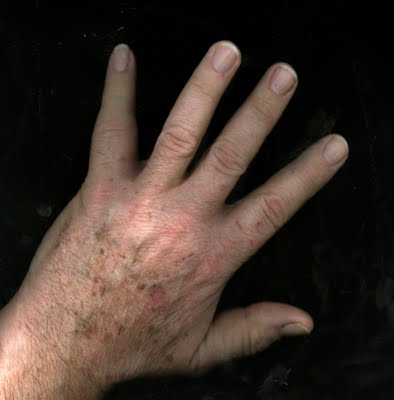
Lolita has been on my mind of late simply because I happen to be reading The Annotated Lolita by Vladimir Nabokov, Edited with Preface by Alfred Appel Jr. As to why I am reading it my readers here may have to wait a couple more days for a full explanation.
I mention Lolita because the idea of an older man interested in young girls is an experience I have never had. When I was interested in 12-year-old girls I was 10 or 12. I have never felt much of an attraction for a woman much younger than I. And as I get older that gulf seems to get wider. The voices of the announcers of the young females on CBC Radio sound like Canadian variations of Valley Girls of yore. They don’t excite me. Give me Barbara Budd from As It Happens if you want to get any kind of a rise from me. I am not interested in re-gaining my youth through interaction with a young woman or a young girl. It seems that a young blonde girl (in combination with a bright red Mazda Miata) is supposed to give the aging man a sense of a new-found youth. I have never felt that. For me it has been quite the opposite.
Many years ago in the beginning of the 70s I was teaching a grade 12 class in a Mexico City private school. I would often say to my class, “I feel so young when I face you.” One day I was taken to task and one of my students said, “That must be because you are surrounded by youth.” My reply shocked them, “No, it is because I am surrounded by prematurely old people set in their ways who must practice all kinds of self-imposed regulations (particularly dress ones) to feel that they fit in.”
I have often wondered why politicians such as Winston Churchill became more conservative with age. I always thought that one could risk more when time is short. And yet there were people like Bertrand Russell and Linus Pauling who became more liberal and forward thinking as they aged. I mention this as one of my blog follwers sent me a missive suggesting that I was stressing much to much the "age thing". Quite to the contrary I want to point out all the advantages. About a month ago I lost all the data on a hard drive. It included a year's worth (2009) of plant scans and a Power Point presentation that my granddaugther Rebecca and I did at the World Rose Convention back in June. I was devastated. But I noticed that as days became weeks the sense of loss was diminishing to the point that I did not feel the loss at all. When John from Powersonic (in Richmond) called to say, "I have retrieved the data (including those plant scans and the Power Point Presentation) from that drive. It will cost you $600." I felt like saying, "John it is not important at all, anymore. Few things at my age are and that's good!"
It did not come as a shock to me when last week at a birthday party at an East Broadway Japanese restaurant honoring my friend Charles Campbell ( a sort of snobbish “I protest the Olympics” sort of party as it began at 7 pm the day of the opening ceremonies) when another friend Maja Grip told me, “For the first time I see that you are aging.” I felt like countering with a kind reply (kind replies come with age) in which I would have said, “For someone your age who never flaunted her charms you are showing today a fair amount of very attractive cleavage.”
It was about 5 years ago that I had a model that I have photographed many times during the years come into my studio. She was a beautiful woman who in the last 10 years has cut her lovely hair and worn clothing she would have never worn before. It is almost as if she wanted to hide her beauty to be accepted for who she is. I would argue that individuality is what makes us be me and not her and part of that individuality is how we look. A world of look-alike clones would be a most confusing one.
As I was adjusting my camera settings she looked at my hands and gasped. “What is it?” I asked. She said nothing. I knew that she had noticed my weathered/age/garden hands and suddenly noticed that I was a much older man. It could have been that my hands were an equivalent to looking at herself in the mirror.
Hands have always been important in my life. I remember my father’s strong but small and elegant hands stained by his Player’s Navy Cut cigarettes. I remember my mother’s beautiful piano hands with long slim fingers and immaculate finger nails. She also had beautiful feet which I inherited. Alas I did not inherit her hands but until that model had noticed my hands in the studio I had always bragged about my gentleman’s hands. They were hands that were soft and uniform in colour with nicely kept nails. I bragged that I didn’t have the hands of a ditch digger.
But garden work and particularly the caring for my beloved roses have changed that. Just the pruning of a viciously endowed rambler, Rosa ‘Albertine” a few days ago has left my hands with scratches, wounds and festering sores.
Rosemary cannot remember when it exactly happened that she stopped being able to trim the nails of her right hand. She comes over to my side of the bed (the left side) and sits on the edge so I can trim her nails (anybody out there, a small portable hand vacuum would make an excellent Christmas present).
I have few memories of my father’s older brother, my Uncle Harry and his wife Winnie. One involves a nighttime dinner at their Acassuso home in Buenos Aires. I could smell Uncle Harry’s predilection for tobacco and alcohol as I watched him whip up some Colman’s mustard. I may have been 7 or 8 but I did notice that he put in a teaspoonful of sugar into the mixture. His hands were big. They looked like a working man's hands. Last year my first cousin Willoughby Blew came to visit us with his wife from Florida. He watched me put sugar into my Coleman’s (now Keen’s) powder and said, “Just like Uncle Harry used to make it.”
It is the other memory of my Auntie Winnie serving us tea in her quintessential English dining room on a sunny afternoon when I noticed her disfigured hands. She could barely lift the tea pot to serve us tea. I have no other image of Auntie Winnie. Her face is a blur but her hands are as sharp in my memory now as the shock of seeing them as a little boy then.
 That memory is reinforced every night when I sleep. I move around and my hands get caught under the pillow. My pinkies throb. I have arthritis. At my rate I will soon not be able to prune my roses as the secateurs will be unmanageable in my hands.
That memory is reinforced every night when I sleep. I move around and my hands get caught under the pillow. My pinkies throb. I have arthritis. At my rate I will soon not be able to prune my roses as the secateurs will be unmanageable in my hands.But I know for sure I will still be able to stir in that sugar into my mustard.
If anybody were to ask me precisely what my style is when I shoot my portraits I would answer, “I like eye contact with my camera and I always try to incorporate my subject’s hands. After our face, our hands reveal the most about us.”
The Dithering Photographer And His Clones
Friday, February 19, 2010

About 10 years ago three photographers (I was one of them, and one of the others was a woman who also became one of my subjects) had a project which we repeated three times. It started at a downtown café called Subi’s. I told the other two that we would pick a fairly attractive female and bring her to the studio for a group shot. Then during a month each one of us would photograph her and make sure that none of us were aware of what the other was doing. At the studio I would plainly tell our subject, “If at any time any of us ask you to undrape you must do it. If there is any objection to this, tell us now.” Then we would have a one night show in my studio. One of our subjects Corrie Clark reneged on our instructions and I had a hard time (I succeeded in the end) in making her undrape.
It took me years to go through the normal channels of not knowing how to convey to my subject that I wanted her to take it all off. I had not discovered the direct approach nor was I aware that for every photographer that wants to have the model take it all off there is a large multitude of subjects who will readily volunteer if asked.
With one model in particular I was particularly indirect and obtuse. I dithered around taking pictures that were not satisfying me in the least. Finally my model said, “Is this what you really want?” and she lowered the straps of her slip and exposed her breasts. I blushed and took my pictures.
Since that one time I have learned to put my cards on the table. There was one young woman who told me, “You can only photograph 25% of this and you can only go as far down as here. I turned off my lights and told her that she could go.
In another occasion I had two very beautiful young women in my studio and to break the ice I told them, “I have two daughters who are both older than both of you. I am not in the least interested in you except as my photographic subjects. I prefer women my age and that is why I am attracted to my wife. I just want to take your pictures.” They looked at each other and walked out of my studio. Since then I have been ambivalent about being direct and in some cases I have chosen to say less and take more pictures instead.
Of late, without my studio, I have given the whole process some thought. I occasionally teach a nude portrait class at Focal Point and with my instructions my students become my surrogates and take pictures my style. This led to one of my students saying to me in the presence of my other students, “What you want to do is to turn us into little Alexes.” He got up and walked out and never did return.
It had all begun when my student had projected some pictures which we critiqued. One of our models had been slightly on the large size. I always tell my students that it is our obligation to make people as good as we can and if possible even better. A lot of this can be done with lighting and camera angles. The moving of the body can diminish neck folds (anathema!) and I tell my students I don’t want to look at armpit folds (double anathema!). The student in question did nothing to hide the model’s pendulous breasts. I pointed this out and was told that there was nothing wrong with pendulous breasts. I asked one of my female students if she would be happy with pictures that showed her breasts as being like that. She agreed that she would not be happy. To finish the argument my student said, “We pay the model. We can make her look anyway we want.”
 It is in such times that I feel like picking up sticks and moving to Trelew in Patagonia and learn to speak Welsh. But that is not a viable option at this moment.
It is in such times that I feel like picking up sticks and moving to Trelew in Patagonia and learn to speak Welsh. But that is not a viable option at this moment. I photographed María de Lurdes Behar three times. The third time she was one of my tub women for a show. The first time around I took pictures when I was still in the height of my dithering period. It was 1990.
After some exposures I finally came up with enough nerve and most of her clothes were discarded. Some of these pictures are extraordinarily beautiful. Because my intention was always to photograph the model undraped I never did look at the pre-undraped exposures with any interest, until now.
At my age I find my drive (that one!) is diminishing and my idea of what is erotic is more in the direction of subtlety. Clothed, is now suddenly much more interesting. I found a couple of pictures of María de Lurdes which I think are beautiful. I hope that anybody looking at them might just agree.
Thursday, February 18, 2010
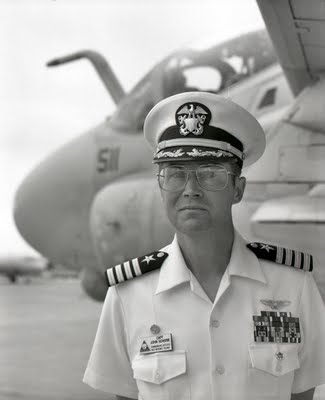
Guest Blog
NAS Whidbey Airshow … Rossiter… 15 August 94
Former Navy pilot Stephen Coonts is working on a follow-up to his novel Flight of the Intruder, from which Paramount Pictures derived the popular Vietnam action movie in which a Navy A-6 crew decide to buck the president’s bombing guidelines and attack Hanoi. Coonts’s novel contains some of the best evocations of military flying since Pierre Closterman’s WWII memoir The Big Show appeared in 1951. Both books remove the romantic veneer from the war in the air, at least partly because bombing is so much more dangerous and morally ambiguous than air-to-air combat.
The movie was distributed to carrier air groups during the Gulf War, when it might have been expected to boost morale. It was, after all, the first depiction of the nerd of carrier aviation, Grumman’s A-6 Intruder. To real-life A-6 flight and ground crews, though, the flyboy caricatures they saw of themselves were a grave slight. Like most aviation pictures, Flight of the Intruder is in trouble as soon as the action returns to the carrier deck.
Maybe Paramount will do better with Coonts’s new book The Intruders. The actual A-6 community is more complex is infinitely more interesting than director John Milius’ portrayal. Certainly more professional. Capt. John Schork’s bomber-pilot war stories are less about combat than accounts of the ongoing battle with fear of celebrations of sheer technique. Peace stories you might call them.
The Naval Air Station Whidbey Island’s executive officer, Commander Joe Nortz (think of the Tom Skerritt character in Top Gun but with fewer wrinkles), had promised us war stories. Not only would we hear war stories, but the guy telling them would be the base commander. NAS Whidbey’s CO, Schork flies more than a desk. He has flown the A-6 Intruder in three wartime situations, and he keeps himself current.

He told his first story with an arresting special effect: flames reflected in the left sides of his GI sunglasses. The explosives set off to simulate the effects of a pop-u bombing run by an A-6 had ignited the tinder-dry grass across from the air show flight line at NAS Whidbey’s annual Sea-N-Sky Festival last July. It was burning out of control.
The fireman supporting the A-6’s air show demonstration of bomb delivery techniques had put on a more impressive display than anybody had intended. Every once in a while a staff officer in immaculately-pressed dress whites would appear out of nowhere to whisper a firefighter’s progress report into Schork’s ear while he coolly offered his interviewer vivid reminiscences of two decades in the cockpit of the Navy’s deadliest combat airplane.
“The thing that really sticks with you is, we go out and fly low-level, high speed terrain-following through these mountains”- Schork makes an almost imperceptible motion with his right hand, past the fire raging 200 yards away, to the Cascade Mountains ---“and no matter how long you fly the airplane, you never lose the thrill….
“The only thing between me and the rocks and trees is good electronics and training. Every time I do it – and I’ve been doing it for 20 years – it is a thrill. There are few jobs,” he adds, quite unnecessarily, “where you get that kind of exhilarating feeling.”
Schork grew up in nearby Oak Harbor and is still among the most proficient A-6 drivers at the base. The Thursday before we met his name was spelled out on the base’s E for Excellence scoreboard as the current winner of the Norden Picklebarrel Award as the most accurate bomber pilot in attack squadron VA-128, NAS Whidbey’s training unit. (Norden is a maker of bombsights; a pickle barrel is what a good bomb sight enables you put your bombs into.) “I’m a little embarrassed, “Schork said, sounding pleased as punch. “The trophy is for the young guys, not old-timers like me.” Not only Schork was the most accurate pilot in its Replacement Air Group, Attack Squadron 128, But NAS Whidbey, his command, was the best installation in the Navy worldwide. He was having the month of his life.
Schork is a compact, thoughtful and intelligent man with a self-deprecating sense of humor who calls himself the worst quarterback in the history of Oak Harbor High. He has none of the professional warrior’s mannerisms. Maryanne Kilkenny, wife of VA-196’s executive officer, who returned from a six-month cruise aboard the carrier Carl Vinson last Sunday, calls Schork “a wonderful man,” an uncommon encomium in the military. (VA-196 “Main Battery,” by the way, is the outfit portrayed in Flight of the Intruder.) In every way except bulk he personifies the airplane. The two, man and airplane, have matured together since he first flew the A-6 in combat over Saigon the day the city was being abandoned to the North Vietnamese.

This year’s Sea-N-Sky Festival had an almost nostalgic undertone to it. NAS Whidbey exists as the largest naval air station on the Pacific coast – 9,000 on active duty and 2,500 civilians – because of the Grumman A-6 and EA-6b Prowler, its electronic warfare derivative. Working together with the lengthened, crew-of-four, EA-6B jamming enemy anti-aircraft artillery (AAA) and SAM radar, and the two-seat (pilot, bombardier-navigator) A-6 dropping bombs, the Intruder-Prowler team are the fleet’s sharp point. There is also a tanker version, the KA-6D. Several of NAS Whidbey’s squadron carry battle honors from the Gulf War and subsequent enforcement of the no –fly zone over Northern Iraq.
But there is no room in the Navy budget for further development of the Intruder/Prowler design. Thirty-four years after it first flew and a little more than three decades since it entered service, the A-6 is facing retirement. Three generations of naval aviators devoted their careers to it. Throughout its service life, they have celebrated it by pointing out that no other carrier-based combat aircraft could, as they put it, reach out and touch someone – anytime, anywhere. VA-196 is scheduled to be the last A-6 squadron in the Navy. It will be decommissioned in 1996.
Whidbey, identified as “Intruder Country” on one of its cavernous hangars, where the shriek of A-6s is thought of as “The Sound of Freedom,” wonders what could possibly replace the A-6. “It’s not so much the airplanes themselves,” says blonde and pregnant Kathy Roberts, even though her husband “loves it” and carries a picture of one in his wallet. “Does he carry a picture of you?” she is asked. “I don’t know!” she exclaims. “It’s not the airplane,” she says, “It’s the mission. It’s the whole responsibility of what he does.”
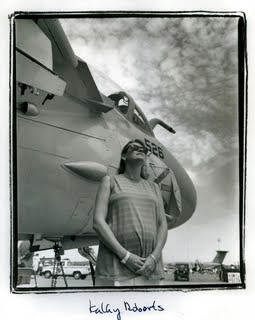
When it first flew in 1960, the A-6 was the smartest airplane in the fleet. An expensive airplane to begin with, 43 percent of the $25 million-a-copy (1990 dollars) Intruder’s cost was accounted for by its electronic equipment – an unheard-of proportion of brains to brawn. It had an onboard computer driving cathode-ray tube (CRT) displays for both pilot and bombardier-navigator, a feature introduced to commercial aviation on Boeing 757-767 airliners 15 years later.
Although the first four A-6 Intruders lost in combat over Vietnam were listed as having been downed by anti-aircraft artillery, aviation historians believe three of them were more likely to have been destroyed by their own bombs. The price of pioneering in warfare is usually high, and it was at least mitigated by excellent British Martin-Baker ejection seats that saved the lives of all eight crewmen, two of whom became prisoners of war.
One solution was to use explosives to actually blow the bombs off their racks under the wings. Another was to “pop-up” from the low-level run, climb to 2,000 feet, visually acquire the target by rolling the A-6 inverted, and then aim it at the target. A variation is to release the bombs while climbing vertically over the target. Doing a pop-up imposes a four-G load on the airplane and its crew, whose heads, burdened with helmets and breathing gear, become four times their normal weight. Then again, as the Sea-N-Sky Festival air show commentator, a Confederate Air Force Colonel from Arlington, Texas, explained over the PA, when you bomb while flying straight up, “You can be at home sipping a cold beer by the time the bombs go off.” The pop-up bomb run resolved the suicidal aspects of low-level bombing, which had become necessary because North Vietnam’s sophisticated SAM defenses made conventional high-level bombing out of the question. The technique also happened to create a sensational air show routine, “It looks pretty good from the inside, too,” Schork mentions.
There was an A-6 parked in front of Whidbey’s operations centre during the air show. Frank Silebi was putting in a long hot day in his polished black boots and khaki flying suit by the Intruder’s nose, telling anyone who would listen that he is part of a naval aviation milestone: “the last class ever for the A-6, “three pilots, one bombardier-navigator, doomed to become carrier qualified anachronisms. Silebi was born in Barranquilla, Colombia, but grew up from an early age in Pennsylvania. He can speak fluent Spanish. When Silebi was in flight t training, flying TA-4J Scooter on and off carriers, the withdrawal date for the A-6 was 1999. By the time he had his naval gold wings, the date had been moved ahead by two years. Flying the A-6 is Silebi’s reason for being in the Navy, and for a while he was afraid he might not be trained soon enough to do it. After all he says, “What’s better than flying low and flying fast?”
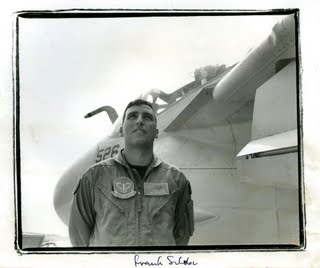
John Schork (43) and the airplane (34) came up together. Their careers are as one. Smart airplane, bright officer. The current Norden Picklebarrel Tropy holder put in three of his four combat tours with VA-95, the Green Lizards, celebrating 50 years of service last October. Schork’s Green Lizard tours have included his top-cover assignment over Saigon. It is now almost 20 years since John Schork made his combat debut ushering in peace over Vietnam in early 1975. The fire of his sunglass lenses lit up to the story as he described his first taste of the Real Thing, the thing he still wins awards training for: “I can remember orbiting Saigon. I could see Tan Son Hhut airbase burning. I can remember the tracer fire coming up against the gathering dusk, and the smoke, and thinking this was a historic evening. We were flying A-6s, loaded with bombs, as cover. Our helos (CH-53 helicopters) were circulating, evacuating people….” In other words, the A-6 was used over Saigon in a fighter’s role, able to fly safely in darkness. The concern was that if any helicopters were shot down that day, the vengeance impulse might extend the war. None were.
“It was a dependable airplane,” Schork says, lapsing into an early obituary for the A-6. “I’ve seen this thing come back with one of the horizontal stabilizers gone. It’s a forgiving airplane. It’s practically impossible to spin the airplane. I can take off at Whidbey and on-leg-it to Washington, DC. I have flown the thing trans-Pacific. We flew a strike from the carrier in mid-Pacific and flew 1500 miles to the Hawaiian Islands, at night, and flew back to the ship. That’s when you realize how big the Pacific is. Each of us had our own tanker. That’s you’re you realize what the airplane can do. “
There are plenty of guys at Naval Air Station Whidbey Island who feel the loss of their airplane will leave the world a less safe place. They don’t come out and say so. That would be unprofessional. Their wives are more straightforward on the subject.
I remember exactly when I fell in love with the A-6 myself. To me the Intruder and its genius brother, the Prowler, consisted of bulbous noses, bug-eyed and strong but sagging bellies: they were flying dump trucks, worthy of respect but hardly killer sex objects. Infatuation has a lot less to do with looks that with timing and circumstances.
It happened four years ago last Saturday. The air show in Abbotsford, British Columbia was over. The star was a MIg-31 Mach 2-plus turbojet dragster, seldom seen in the West until then. It had drawn audible gasps in the finale by flying low directly at the crowds, pulling up, lighting both afterburners, and climbing on twin sheets of flame, scorching the infield. A Mig-31 is fast but cannot turn, and the Mig Bureau’s celebrated chief test pilot, Valeri Menitsky, had wrung everything the big fighter had to give. The Cold War was already history in 1990, although the hour or so I had spent with the genial Menitski, conversing through a dour-faced interpreter, still felt like a handshake over a vast ideological gulf. After getting to know him beforehand, exchanging gifts, watching him muscle his fighter into turns that took him from the Fraser Valley out over the San Juan Islands and return from his routine soaked with sweat, it came as a distinct surprise to me that the A-6 is the mental snapshot I retain from that air show.
Perhaps the guys from NAS Whidbey felt a reply was in order. As we were packing our cameras and empty sandwich wrappers, a hard-edged rolling thunder directed our attention to our left. The A-6 in mottled grey war paint was maybe 30 feet off the runway and going to beat hell. Its wing appeared to be exactly at eye level, with its external tanks hung underneath in shadow, tangential to its potbelly. The red anti-collision strobe was blinking away underneath the cockpit. It was flying fast enough to generate white condensation in a vortex off its upper wing roots, an effect heightened by its unique tadpole shape and wide two-man canopy with its art deco windshield frame.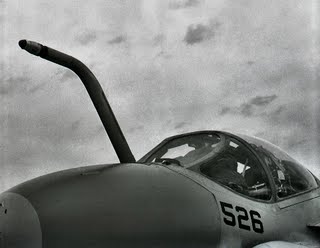 In front of the canopy, the Intruder’s in-flight refueling probe stood up and pointed forward like some trans-sonic insect’s feeler. Nose down, tail up, all business, it looked lethal in a way it never did standing on its landing gear on the flight line. The bombardier-navigator saluted as it passed. The A-6 became a blur in front of our turning heads, pulled up, and in an instant was a T-shaped dot dematerializing through the cirrus.
In front of the canopy, the Intruder’s in-flight refueling probe stood up and pointed forward like some trans-sonic insect’s feeler. Nose down, tail up, all business, it looked lethal in a way it never did standing on its landing gear on the flight line. The bombardier-navigator saluted as it passed. The A-6 became a blur in front of our turning heads, pulled up, and in an instant was a T-shaped dot dematerializing through the cirrus.
Sean Rossiter is the author of The Immortal Beaver - The World's Greatest Bush Plane, The Otter & Twin Otter and The Chosen Ones - Canada's Test Pilots in Action
Sean Rossiter
Captain John Schork the Novelist
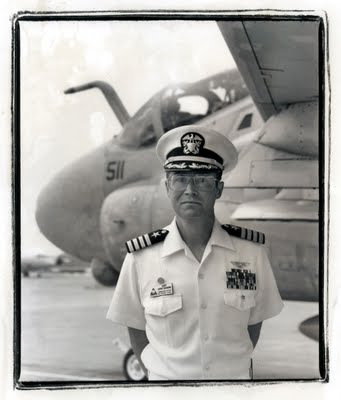
January 27, 1995
Alex Waterhouse-Hayward
5909 Athlone Street
Vancouver BC V6M 3ª3
Dear Mr. Waterhouse-Price [sic],
Thank you for your letter of December 14, which reached me today via Simon & Schuster. I apologize for the delay, but sometimes they take a while.
When I looked at the photos I realized you have a rare gift. You are one hell of [frequently used by this author in his novels with the spelling helluva] a photographer. And you are on a good story, which is much bigger than the demise of the A-6. The aftershocks of the collapse of communism will affect many lives, not the least of which are those people who have made a career of the military. They are the most directly affected, but the devastation is just as total on the families of the engineers and technicians of the so-called military-industrial establishment who are also facing career death.
I would like to tell you this is something new, a phenomenon cause by the fundamental changes in the international scene that make the worlds a safer place for free people, but alas, that is not the case. This is the same process that occurred after the American Civil War, World War I, World War II and Vietnam. Downsizing. Institutional stagnation. Until the next crisis comes along--and it will, it always does—we don’t need or want you folks, nor can we afford you, so good-bye and have a nice life. But leave your name and telephone number just in case, okay? Now back to the problem of the welfare mothers.
Sincerely,
Stephen Coonts

Back in 1984 I had read a new techno thriller called Hunt for Red October by Tom Clancy. There was another novel (far more satisfying for me) also by Tom Clancy, and co-written with Larry bond, published in 1986, Red Storm Rising in which petroleum shortages usher in a scary and most believable WW III.
But it was Stephen Coonts' 1986 novel, The Flight of the Intruder, published, like Hunt for Red October (then considered quite odd) by the Naval Institute which I consumed in one night's reading. Its description on what must be the single most difficult job in the world, to land a jet aircraft on the pitching deck of an aircraft carrier at night, left me amazed. Coonts’(himself a former naval pilot) explanation on the workings of the pilot and his tandem seated BN (bomber/navigator) in the Grumman A-6 Intruder left me with extreme airsickness as I understood that the BN spent most of the time looking down on a radar screen and instruments. If I were to do that in a placid flight on a Boeing 737 I would be sick on the spot! Coonts' descriptions of A-6 Intruder night flights over flack and SAM infested North Vietnam was as realistic as the claustrophobia inducing The Boat by Lothar-Gúnther Buchheim, the cold and misery of Alistair MacLean's H.M.S. Ulysses and Nicolas Monsarrat's The Cruel Sea. The fear in the throat of Coonts' hero Grafton was as real and horrific as the fear and gore of Len Deighton's Bomber.

Since I am now a Canadian citizen I have like most Canadians not been a war mongerer or an enthusiast of war. But it is difficult to deny a childhood of playing with swords, cap gun replicas of Western .45s and waging war with toy soldiers on my mother’s lawn. It is difficult to deny the pleasure and awe with which I enjoyed in the 50s my uncle, Luis Miranda’s collection of war-time Life Magazine. I saw the picture of McArthur returning to Leyte there and ads for Buicks that proudly stated that Sherman tanks had Dynaflow automatic transmissions! It is difficult to deny the influence of four years of high school in Austin, Texas and of many trips to the nearby Bergstrom USAF. It was there that I first saw the towering Boeing B-52 and passed my hands on the sharp edged wing of a Lockheed F-104 Starfighter.
In the mid 60s while in the Argentine Navy I translated into Spanish the operation and maintenance manuals for the then recently purchased Douglas A-4 Skyhawks. I became intimate with these beautiful (for beautiful they are) airplanes and when the Falklands War happened I was more concerned on the loss of what I considered my airplanes than the death of the Argentine pilots who did well enough and died in equipment that had been obsolete back in my days at the navy.
It was difficult to reconcile and understand that my classmates at St. Ed’s in Austin, Texas, as Americans had been part of the Vietnam War that I remember as body count accounts on my weekly readings of Time Magazine. My room buddy John Arnold had been a US Marine who dangled from helicopter cables to save downed flyers in Vietnam. Others from my class died in Vietnam conflicts. My friend grade 9 friend John Straney with whom I had shared my interest in WW II German airplanes and tanks was in the US Air Force in 1967. Of late these classmates have put a face on the body counts and I feel conflicted particularly when I re-read (as I did last week) Coonts’ Flight of the Intruder and its 1994 sequel The Intruders. I cannot so easily dismiss the conservative beliefs of my Texan classmates who own many guns, target practice at least once a week and tell me of their exploits in 'Nam. Who am I to argue after two years of a desk job as a conscript in the Argentine Navy!

Steam catapults make modern Aircraft Carriers possible. Invented by the British during World War II, catapults freed designers from the necessity of building naval aircraft that could rise from the deck under their own power after a run of only three hundred feet. So wings could shrink and be swept as the physics of high speed aerodynamics required, jet engines that were most efficient at high speeds could be installed, and airframes could be designed that would go supersonic of lift tremendous quantities of fuel and weapons. A luxury for most of the carrier planes of World War II, the catapult now was now and absolute requirement.
The only part of the catapult that can be seen on the flight deck is the shuttle to which aircraft are attached. This shuttle sticks up from a slot in the deck that runs the length of the catapult. The catapult itself lies under the slot and consists of two tubes eighteen-inches in diameter arranged side by side like the barrels of a double-barreled shotgun. Inside each tube – or barrel - is a piston. There is a gap at the top of each barrel through which a steel lattice mates the two pistons together, and to which the shuttle on deck attaches.
The pistons are hauled aft mechanically into battery by a little cart called a “grab”. Once the pistons are in battery, the aircraft is attached to the shuttle, either by a linkage on the nose gear of the aircraft in the case of the A-6 and A-7, or by a bridle of steel cable in the case of the F-4 and RA-5. Then the slack in the bridle or nose-tow linkage is taken out by pushing the pistons forward hydraulically – this movement is called “taking tension.”
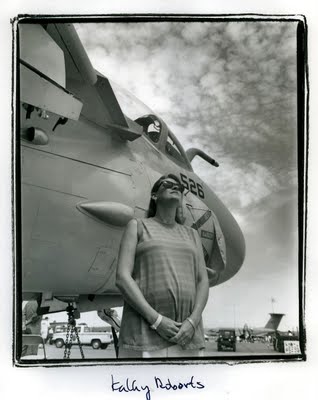
Once the catapult is tensioned and the aircraft is at full power with its wheel brakes off, the firing circuit is enabled when the operator pushes the “final ready” button.
Firing the catapult is then accomplished by opening the launch valves, one behind each tube, simultaneously, which allows superheated steam to enter the barrels behind the pistons.
The amount of acceleration given to each aircraft must be varied depending on the type of aircraft being launched, its weight, the amount of wind over the deck, and the outside air temperature. This is accomplished by one of two methods. Either the steam pressure is kept constant and the speed of opening of the launch valves is varied, or the launch valves are always opened at the same rate and the pressure of the steam in the accumulators is varied. Aboard Columbia, the steam pressure was varied and the launch valves were opened at constant rate.
Although the launch valves open quickly, they don’t open instantaneously. Consequently steam pressure rising on the back of pistons must be resisted until it has built up sufficient pressure to move the pistons forward faster than the aircraft could accelerate on its own. This resistance is provided by a shear bolt installed in the nose gear of the aircraft to be launched, to which a steel hold-back bar is attached. One end of the bar fits into a slot in the deck. The bolt used in the A-6 was designed to break cleanly in half under a load of 48,000 pounds, only then allowing the pistons in the catapult, and the aircraft, to begin forward motion.
The superheated steam expanding behind the pistons drove the length of the 258-foot catapults of the Columbia in about 2.5 seconds. Now up to flying speed, the aircraft left the deck behind and ran out into the air sixty feet above the ocean. When it then had to be rotated to the proper angle of attack to fly – in the A-6, about eight degrees nose-up.

Meanwhile, the pistons, at terminal velocity and quickly running out of barrels, had to be stopped. This was accomplished by means of water brakes, tubes welded onto the end of each of the catapult barrels and filled with water. The pistons each carried a tapered spear in front of them, and as the pistons reached the water brakes the spears penetrated the open ends, forcing water out around the spears. Water is incompressible, water got smaller and smaller, yet as the spears were inserted the escape openings for the water got smaller and smaller. Consequently the deeper the spears penetrated the higher the resistance to further entry. The brakes were so efficient that the pistons were brought to a complet stop after a full-power shot in only nine feet of travel.
The sexual symbolism of the tapered spears and the water-filled brakes always impressed aviators – they were young, lonely and horny – but the sound a cat made slamming into the brakes was visceral. The stupendous thud rattled compartments within a hundred feet of the brakes and could be felt throughout the ship.
Tonight as he sat in the cockpit of an A-6 tanker waiting for the cat crew to retract the shuttle, Jake Grafton ran through all the things that could go wrong with the cat.
The Intruders, Stephen Coonts, 1994
And in a later chapter that sheer bolt does break off prematurely which leads to some of the most exciting writing account on how Grafton is able to stop his plane before it rolls:
Sliding, turning left and still sliding forward…he felt the left wheel slam in the deck-edge combing, then the nose, now the tail spun toward the bow, the whole plane sliding…
And he stopped.
Out the right he could see nothing, just blackness. The right wheel must be almost at the very edge of the flight deck.
He took a deep breath and exhaled explosively.
His left hand was holding the alternate ejection handle between his legs. He couldn’t remember reaching for it, but obviously he had. He gingerly released his grip.
The Intruders, Stephen Coonts, 1994
My fascination with The Flight of the Intruder led me to go to several air shows at the Whidbey Island Naval Air Station near Oak Harbor in Washington State. I went with my friend Sean Rossiter who like me is an airplane enthusiast. At Whidbey Island I thrilled at watching A-6 Intruders fly. And it was in July 1994, my last visit that I found out that the A-6s where being phased out and replaced by F/A-18 Hornet. I talked to pilots who told me that the thrill (and fear!) of piloting an A-6, very low (skimming the trees) at night and in bad weather could never ever be replicated by the Hornet. In fact to this day the Hornet can not match the Intruder’s range and payload. During its existence as an attack plane (A-6s were never used as fighters but to bomb, strafe military installations and ships) the Intruder could carry a bomb payload that was second only to that of the Boeing B-52.
My excitement at seeing the Intruders and taking photographs of the then base commander (who had flown Intruders) Captain, USN John Schork led me to propose to Rossiter that we collaborate on a story and to try to sell it to magazine. We never found anybody interested even though Coonts in his letter to me suggested a few venues. The story died even though Rossiter wrote it. In my files today I found two versions of Rossiter's 6 page story. I called him up for permission to run it. Permission has been granted (story will follow sometime today). Since 15 August 94 when Rossiter wrote his second draft he lost all records of it. The publishing of the story in the blog will be a pleasant and now anticipated surprise for him.

When I re read The Flight of the Intruder (all about Vietnam) and then its sequel The Intruders (no war) I was able to read the technical stuff with far more enjoyment. My ignorance of naval aviation is perhaps the only reason why in my Buenos Aires war games I was never a naval pilot!
The splotches of the pictures here are result of bad fixing of my prints. They are Ilford resin coated paper not known for being all that archival. My b+w negatives of these Intruder people are pristine. I like the look of the deterioration.
Stephen Coonts
And would you believe it, Captain John Schork is now an author of aviation novels!
Captain John Shork
Not related but still within the subject Sukhoi

Guest Blog
NAS Whidbey Airshow … Rossiter… 15 August 94
Former Navy pilot Stephen Coonts is working on a follow-up to his novel Flight of the Intruder, from which Paramount Pictures derived the popular Vietnam action movie in which a Navy A-6 crew decide to buck the president’s bombing guidelines and attack Hanoi. Coonts’s novel contains some of the best evocations of military flying since Pierre Closterman’s WWII memoir The Big Show appeared in 1951. Both books remove the romantic veneer from the war in the air, at least partly because bombing is so much more dangerous and morally ambiguous than air-to-air combat.
The movie was distributed to carrier air groups during the Gulf War, when it might have been expected to boost morale. It was, after all, the first depiction of the nerd of carrier aviation, Grumman’s A-6 Intruder. To real-life A-6 flight and ground crews, though, the flyboy caricatures they saw of themselves were a grave slight. Like most aviation pictures, Flight of the Intruder is in trouble as soon as the action returns to the carrier deck.
Maybe Paramount will do better with Coonts’s new book The Intruders. The actual A-6 community is more complex is infinitely more interesting than director John Milius’ portrayal. Certainly more professional. Capt. John Schork’s bomber-pilot war stories are less about combat than accounts of the ongoing battle with fear of celebrations of sheer technique. Peace stories you might call them.
The Naval Air Station Whidbey Island’s executive officer, Commander Joe Nortz (think of the Tom Skerritt character in Top Gun but with fewer wrinkles), had promised us war stories. Not only would we hear war stories, but the guy telling them would be the base commander. NAS Whidbey’s CO, Schork flies more than a desk. He has flown the A-6 Intruder in three wartime situations, and he keeps himself current.

He told his first story with an arresting special effect: flames reflected in the left sides of his GI sunglasses. The explosives set off to simulate the effects of a pop-u bombing run by an A-6 had ignited the tinder-dry grass across from the air show flight line at NAS Whidbey’s annual Sea-N-Sky Festival last July. It was burning out of control.
The fireman supporting the A-6’s air show demonstration of bomb delivery techniques had put on a more impressive display than anybody had intended. Every once in a while a staff officer in immaculately-pressed dress whites would appear out of nowhere to whisper a firefighter’s progress report into Schork’s ear while he coolly offered his interviewer vivid reminiscences of two decades in the cockpit of the Navy’s deadliest combat airplane.
“The thing that really sticks with you is, we go out and fly low-level, high speed terrain-following through these mountains”- Schork makes an almost imperceptible motion with his right hand, past the fire raging 200 yards away, to the Cascade Mountains ---“and no matter how long you fly the airplane, you never lose the thrill….
“The only thing between me and the rocks and trees is good electronics and training. Every time I do it – and I’ve been doing it for 20 years – it is a thrill. There are few jobs,” he adds, quite unnecessarily, “where you get that kind of exhilarating feeling.”
Schork grew up in nearby Oak Harbor and is still among the most proficient A-6 drivers at the base. The Thursday before we met his name was spelled out on the base’s E for Excellence scoreboard as the current winner of the Norden Picklebarrel Award as the most accurate bomber pilot in attack squadron VA-128, NAS Whidbey’s training unit. (Norden is a maker of bombsights; a pickle barrel is what a good bomb sight enables you put your bombs into.) “I’m a little embarrassed, “Schork said, sounding pleased as punch. “The trophy is for the young guys, not old-timers like me.” Not only Schork was the most accurate pilot in its Replacement Air Group, Attack Squadron 128, But NAS Whidbey, his command, was the best installation in the Navy worldwide. He was having the month of his life.
Schork is a compact, thoughtful and intelligent man with a self-deprecating sense of humor who calls himself the worst quarterback in the history of Oak Harbor High. He has none of the professional warrior’s mannerisms. Maryanne Kilkenny, wife of VA-196’s executive officer, who returned from a six-month cruise aboard the carrier Carl Vinson last Sunday, calls Schork “a wonderful man,” an uncommon encomium in the military. (VA-196 “Main Battery,” by the way, is the outfit portrayed in Flight of the Intruder.) In every way except bulk he personifies the airplane. The two, man and airplane, have matured together since he first flew the A-6 in combat over Saigon the day the city was being abandoned to the North Vietnamese.

This year’s Sea-N-Sky Festival had an almost nostalgic undertone to it. NAS Whidbey exists as the largest naval air station on the Pacific coast – 9,000 on active duty and 2,500 civilians – because of the Grumman A-6 and EA-6b Prowler, its electronic warfare derivative. Working together with the lengthened, crew-of-four, EA-6B jamming enemy anti-aircraft artillery (AAA) and SAM radar, and the two-seat (pilot, bombardier-navigator) A-6 dropping bombs, the Intruder-Prowler team are the fleet’s sharp point. There is also a tanker version, the KA-6D. Several of NAS Whidbey’s squadron carry battle honors from the Gulf War and subsequent enforcement of the no –fly zone over Northern Iraq.
But there is no room in the Navy budget for further development of the Intruder/Prowler design. Thirty-four years after it first flew and a little more than three decades since it entered service, the A-6 is facing retirement. Three generations of naval aviators devoted their careers to it. Throughout its service life, they have celebrated it by pointing out that no other carrier-based combat aircraft could, as they put it, reach out and touch someone – anytime, anywhere. VA-196 is scheduled to be the last A-6 squadron in the Navy. It will be decommissioned in 1996.
Whidbey, identified as “Intruder Country” on one of its cavernous hangars, where the shriek of A-6s is thought of as “The Sound of Freedom,” wonders what could possibly replace the A-6. “It’s not so much the airplanes themselves,” says blonde and pregnant Kathy Roberts, even though her husband “loves it” and carries a picture of one in his wallet. “Does he carry a picture of you?” she is asked. “I don’t know!” she exclaims. “It’s not the airplane,” she says, “It’s the mission. It’s the whole responsibility of what he does.”

When it first flew in 1960, the A-6 was the smartest airplane in the fleet. An expensive airplane to begin with, 43 percent of the $25 million-a-copy (1990 dollars) Intruder’s cost was accounted for by its electronic equipment – an unheard-of proportion of brains to brawn. It had an onboard computer driving cathode-ray tube (CRT) displays for both pilot and bombardier-navigator, a feature introduced to commercial aviation on Boeing 757-767 airliners 15 years later.
Although the first four A-6 Intruders lost in combat over Vietnam were listed as having been downed by anti-aircraft artillery, aviation historians believe three of them were more likely to have been destroyed by their own bombs. The price of pioneering in warfare is usually high, and it was at least mitigated by excellent British Martin-Baker ejection seats that saved the lives of all eight crewmen, two of whom became prisoners of war.
One solution was to use explosives to actually blow the bombs off their racks under the wings. Another was to “pop-up” from the low-level run, climb to 2,000 feet, visually acquire the target by rolling the A-6 inverted, and then aim it at the target. A variation is to release the bombs while climbing vertically over the target. Doing a pop-up imposes a four-G load on the airplane and its crew, whose heads, burdened with helmets and breathing gear, become four times their normal weight. Then again, as the Sea-N-Sky Festival air show commentator, a Confederate Air Force Colonel from Arlington, Texas, explained over the PA, when you bomb while flying straight up, “You can be at home sipping a cold beer by the time the bombs go off.” The pop-up bomb run resolved the suicidal aspects of low-level bombing, which had become necessary because North Vietnam’s sophisticated SAM defenses made conventional high-level bombing out of the question. The technique also happened to create a sensational air show routine, “It looks pretty good from the inside, too,” Schork mentions.
There was an A-6 parked in front of Whidbey’s operations centre during the air show. Frank Silebi was putting in a long hot day in his polished black boots and khaki flying suit by the Intruder’s nose, telling anyone who would listen that he is part of a naval aviation milestone: “the last class ever for the A-6, “three pilots, one bombardier-navigator, doomed to become carrier qualified anachronisms. Silebi was born in Barranquilla, Colombia, but grew up from an early age in Pennsylvania. He can speak fluent Spanish. When Silebi was in flight t training, flying TA-4J Scooter on and off carriers, the withdrawal date for the A-6 was 1999. By the time he had his naval gold wings, the date had been moved ahead by two years. Flying the A-6 is Silebi’s reason for being in the Navy, and for a while he was afraid he might not be trained soon enough to do it. After all he says, “What’s better than flying low and flying fast?”

John Schork (43) and the airplane (34) came up together. Their careers are as one. Smart airplane, bright officer. The current Norden Picklebarrel Tropy holder put in three of his four combat tours with VA-95, the Green Lizards, celebrating 50 years of service last October. Schork’s Green Lizard tours have included his top-cover assignment over Saigon. It is now almost 20 years since John Schork made his combat debut ushering in peace over Vietnam in early 1975. The fire of his sunglass lenses lit up to the story as he described his first taste of the Real Thing, the thing he still wins awards training for: “I can remember orbiting Saigon. I could see Tan Son Hhut airbase burning. I can remember the tracer fire coming up against the gathering dusk, and the smoke, and thinking this was a historic evening. We were flying A-6s, loaded with bombs, as cover. Our helos (CH-53 helicopters) were circulating, evacuating people….” In other words, the A-6 was used over Saigon in a fighter’s role, able to fly safely in darkness. The concern was that if any helicopters were shot down that day, the vengeance impulse might extend the war. None were.
“It was a dependable airplane,” Schork says, lapsing into an early obituary for the A-6. “I’ve seen this thing come back with one of the horizontal stabilizers gone. It’s a forgiving airplane. It’s practically impossible to spin the airplane. I can take off at Whidbey and on-leg-it to Washington, DC. I have flown the thing trans-Pacific. We flew a strike from the carrier in mid-Pacific and flew 1500 miles to the Hawaiian Islands, at night, and flew back to the ship. That’s when you realize how big the Pacific is. Each of us had our own tanker. That’s you’re you realize what the airplane can do. “
There are plenty of guys at Naval Air Station Whidbey Island who feel the loss of their airplane will leave the world a less safe place. They don’t come out and say so. That would be unprofessional. Their wives are more straightforward on the subject.
I remember exactly when I fell in love with the A-6 myself. To me the Intruder and its genius brother, the Prowler, consisted of bulbous noses, bug-eyed and strong but sagging bellies: they were flying dump trucks, worthy of respect but hardly killer sex objects. Infatuation has a lot less to do with looks that with timing and circumstances.
It happened four years ago last Saturday. The air show in Abbotsford, British Columbia was over. The star was a MIg-31 Mach 2-plus turbojet dragster, seldom seen in the West until then. It had drawn audible gasps in the finale by flying low directly at the crowds, pulling up, lighting both afterburners, and climbing on twin sheets of flame, scorching the infield. A Mig-31 is fast but cannot turn, and the Mig Bureau’s celebrated chief test pilot, Valeri Menitsky, had wrung everything the big fighter had to give. The Cold War was already history in 1990, although the hour or so I had spent with the genial Menitski, conversing through a dour-faced interpreter, still felt like a handshake over a vast ideological gulf. After getting to know him beforehand, exchanging gifts, watching him muscle his fighter into turns that took him from the Fraser Valley out over the San Juan Islands and return from his routine soaked with sweat, it came as a distinct surprise to me that the A-6 is the mental snapshot I retain from that air show.
Perhaps the guys from NAS Whidbey felt a reply was in order. As we were packing our cameras and empty sandwich wrappers, a hard-edged rolling thunder directed our attention to our left. The A-6 in mottled grey war paint was maybe 30 feet off the runway and going to beat hell. Its wing appeared to be exactly at eye level, with its external tanks hung underneath in shadow, tangential to its potbelly. The red anti-collision strobe was blinking away underneath the cockpit. It was flying fast enough to generate white condensation in a vortex off its upper wing roots, an effect heightened by its unique tadpole shape and wide two-man canopy with its art deco windshield frame.
 In front of the canopy, the Intruder’s in-flight refueling probe stood up and pointed forward like some trans-sonic insect’s feeler. Nose down, tail up, all business, it looked lethal in a way it never did standing on its landing gear on the flight line. The bombardier-navigator saluted as it passed. The A-6 became a blur in front of our turning heads, pulled up, and in an instant was a T-shaped dot dematerializing through the cirrus.
In front of the canopy, the Intruder’s in-flight refueling probe stood up and pointed forward like some trans-sonic insect’s feeler. Nose down, tail up, all business, it looked lethal in a way it never did standing on its landing gear on the flight line. The bombardier-navigator saluted as it passed. The A-6 became a blur in front of our turning heads, pulled up, and in an instant was a T-shaped dot dematerializing through the cirrus.Sean Rossiter is the author of The Immortal Beaver - The World's Greatest Bush Plane, The Otter & Twin Otter and The Chosen Ones - Canada's Test Pilots in Action
Sean Rossiter
Captain John Schork the Novelist
The A-6 Intruder - My Conflict With War Games
Wednesday, February 17, 2010

January 27, 1995
Alex Waterhouse-Hayward
5909 Athlone Street
Vancouver BC V6M 3ª3
Dear Mr. Waterhouse-Price [sic],
Thank you for your letter of December 14, which reached me today via Simon & Schuster. I apologize for the delay, but sometimes they take a while.
When I looked at the photos I realized you have a rare gift. You are one hell of [frequently used by this author in his novels with the spelling helluva] a photographer. And you are on a good story, which is much bigger than the demise of the A-6. The aftershocks of the collapse of communism will affect many lives, not the least of which are those people who have made a career of the military. They are the most directly affected, but the devastation is just as total on the families of the engineers and technicians of the so-called military-industrial establishment who are also facing career death.
I would like to tell you this is something new, a phenomenon cause by the fundamental changes in the international scene that make the worlds a safer place for free people, but alas, that is not the case. This is the same process that occurred after the American Civil War, World War I, World War II and Vietnam. Downsizing. Institutional stagnation. Until the next crisis comes along--and it will, it always does—we don’t need or want you folks, nor can we afford you, so good-bye and have a nice life. But leave your name and telephone number just in case, okay? Now back to the problem of the welfare mothers.
Sincerely,
Stephen Coonts

Back in 1984 I had read a new techno thriller called Hunt for Red October by Tom Clancy. There was another novel (far more satisfying for me) also by Tom Clancy, and co-written with Larry bond, published in 1986, Red Storm Rising in which petroleum shortages usher in a scary and most believable WW III.
But it was Stephen Coonts' 1986 novel, The Flight of the Intruder, published, like Hunt for Red October (then considered quite odd) by the Naval Institute which I consumed in one night's reading. Its description on what must be the single most difficult job in the world, to land a jet aircraft on the pitching deck of an aircraft carrier at night, left me amazed. Coonts’(himself a former naval pilot) explanation on the workings of the pilot and his tandem seated BN (bomber/navigator) in the Grumman A-6 Intruder left me with extreme airsickness as I understood that the BN spent most of the time looking down on a radar screen and instruments. If I were to do that in a placid flight on a Boeing 737 I would be sick on the spot! Coonts' descriptions of A-6 Intruder night flights over flack and SAM infested North Vietnam was as realistic as the claustrophobia inducing The Boat by Lothar-Gúnther Buchheim, the cold and misery of Alistair MacLean's H.M.S. Ulysses and Nicolas Monsarrat's The Cruel Sea. The fear in the throat of Coonts' hero Grafton was as real and horrific as the fear and gore of Len Deighton's Bomber.

Since I am now a Canadian citizen I have like most Canadians not been a war mongerer or an enthusiast of war. But it is difficult to deny a childhood of playing with swords, cap gun replicas of Western .45s and waging war with toy soldiers on my mother’s lawn. It is difficult to deny the pleasure and awe with which I enjoyed in the 50s my uncle, Luis Miranda’s collection of war-time Life Magazine. I saw the picture of McArthur returning to Leyte there and ads for Buicks that proudly stated that Sherman tanks had Dynaflow automatic transmissions! It is difficult to deny the influence of four years of high school in Austin, Texas and of many trips to the nearby Bergstrom USAF. It was there that I first saw the towering Boeing B-52 and passed my hands on the sharp edged wing of a Lockheed F-104 Starfighter.
In the mid 60s while in the Argentine Navy I translated into Spanish the operation and maintenance manuals for the then recently purchased Douglas A-4 Skyhawks. I became intimate with these beautiful (for beautiful they are) airplanes and when the Falklands War happened I was more concerned on the loss of what I considered my airplanes than the death of the Argentine pilots who did well enough and died in equipment that had been obsolete back in my days at the navy.
It was difficult to reconcile and understand that my classmates at St. Ed’s in Austin, Texas, as Americans had been part of the Vietnam War that I remember as body count accounts on my weekly readings of Time Magazine. My room buddy John Arnold had been a US Marine who dangled from helicopter cables to save downed flyers in Vietnam. Others from my class died in Vietnam conflicts. My friend grade 9 friend John Straney with whom I had shared my interest in WW II German airplanes and tanks was in the US Air Force in 1967. Of late these classmates have put a face on the body counts and I feel conflicted particularly when I re-read (as I did last week) Coonts’ Flight of the Intruder and its 1994 sequel The Intruders. I cannot so easily dismiss the conservative beliefs of my Texan classmates who own many guns, target practice at least once a week and tell me of their exploits in 'Nam. Who am I to argue after two years of a desk job as a conscript in the Argentine Navy!

Steam catapults make modern Aircraft Carriers possible. Invented by the British during World War II, catapults freed designers from the necessity of building naval aircraft that could rise from the deck under their own power after a run of only three hundred feet. So wings could shrink and be swept as the physics of high speed aerodynamics required, jet engines that were most efficient at high speeds could be installed, and airframes could be designed that would go supersonic of lift tremendous quantities of fuel and weapons. A luxury for most of the carrier planes of World War II, the catapult now was now and absolute requirement.
The only part of the catapult that can be seen on the flight deck is the shuttle to which aircraft are attached. This shuttle sticks up from a slot in the deck that runs the length of the catapult. The catapult itself lies under the slot and consists of two tubes eighteen-inches in diameter arranged side by side like the barrels of a double-barreled shotgun. Inside each tube – or barrel - is a piston. There is a gap at the top of each barrel through which a steel lattice mates the two pistons together, and to which the shuttle on deck attaches.
The pistons are hauled aft mechanically into battery by a little cart called a “grab”. Once the pistons are in battery, the aircraft is attached to the shuttle, either by a linkage on the nose gear of the aircraft in the case of the A-6 and A-7, or by a bridle of steel cable in the case of the F-4 and RA-5. Then the slack in the bridle or nose-tow linkage is taken out by pushing the pistons forward hydraulically – this movement is called “taking tension.”

Once the catapult is tensioned and the aircraft is at full power with its wheel brakes off, the firing circuit is enabled when the operator pushes the “final ready” button.
Firing the catapult is then accomplished by opening the launch valves, one behind each tube, simultaneously, which allows superheated steam to enter the barrels behind the pistons.
The amount of acceleration given to each aircraft must be varied depending on the type of aircraft being launched, its weight, the amount of wind over the deck, and the outside air temperature. This is accomplished by one of two methods. Either the steam pressure is kept constant and the speed of opening of the launch valves is varied, or the launch valves are always opened at the same rate and the pressure of the steam in the accumulators is varied. Aboard Columbia, the steam pressure was varied and the launch valves were opened at constant rate.
Although the launch valves open quickly, they don’t open instantaneously. Consequently steam pressure rising on the back of pistons must be resisted until it has built up sufficient pressure to move the pistons forward faster than the aircraft could accelerate on its own. This resistance is provided by a shear bolt installed in the nose gear of the aircraft to be launched, to which a steel hold-back bar is attached. One end of the bar fits into a slot in the deck. The bolt used in the A-6 was designed to break cleanly in half under a load of 48,000 pounds, only then allowing the pistons in the catapult, and the aircraft, to begin forward motion.
The superheated steam expanding behind the pistons drove the length of the 258-foot catapults of the Columbia in about 2.5 seconds. Now up to flying speed, the aircraft left the deck behind and ran out into the air sixty feet above the ocean. When it then had to be rotated to the proper angle of attack to fly – in the A-6, about eight degrees nose-up.

Meanwhile, the pistons, at terminal velocity and quickly running out of barrels, had to be stopped. This was accomplished by means of water brakes, tubes welded onto the end of each of the catapult barrels and filled with water. The pistons each carried a tapered spear in front of them, and as the pistons reached the water brakes the spears penetrated the open ends, forcing water out around the spears. Water is incompressible, water got smaller and smaller, yet as the spears were inserted the escape openings for the water got smaller and smaller. Consequently the deeper the spears penetrated the higher the resistance to further entry. The brakes were so efficient that the pistons were brought to a complet stop after a full-power shot in only nine feet of travel.
The sexual symbolism of the tapered spears and the water-filled brakes always impressed aviators – they were young, lonely and horny – but the sound a cat made slamming into the brakes was visceral. The stupendous thud rattled compartments within a hundred feet of the brakes and could be felt throughout the ship.
Tonight as he sat in the cockpit of an A-6 tanker waiting for the cat crew to retract the shuttle, Jake Grafton ran through all the things that could go wrong with the cat.
The Intruders, Stephen Coonts, 1994
And in a later chapter that sheer bolt does break off prematurely which leads to some of the most exciting writing account on how Grafton is able to stop his plane before it rolls:
Sliding, turning left and still sliding forward…he felt the left wheel slam in the deck-edge combing, then the nose, now the tail spun toward the bow, the whole plane sliding…
And he stopped.
Out the right he could see nothing, just blackness. The right wheel must be almost at the very edge of the flight deck.
He took a deep breath and exhaled explosively.
His left hand was holding the alternate ejection handle between his legs. He couldn’t remember reaching for it, but obviously he had. He gingerly released his grip.
The Intruders, Stephen Coonts, 1994
My fascination with The Flight of the Intruder led me to go to several air shows at the Whidbey Island Naval Air Station near Oak Harbor in Washington State. I went with my friend Sean Rossiter who like me is an airplane enthusiast. At Whidbey Island I thrilled at watching A-6 Intruders fly. And it was in July 1994, my last visit that I found out that the A-6s where being phased out and replaced by F/A-18 Hornet. I talked to pilots who told me that the thrill (and fear!) of piloting an A-6, very low (skimming the trees) at night and in bad weather could never ever be replicated by the Hornet. In fact to this day the Hornet can not match the Intruder’s range and payload. During its existence as an attack plane (A-6s were never used as fighters but to bomb, strafe military installations and ships) the Intruder could carry a bomb payload that was second only to that of the Boeing B-52.
My excitement at seeing the Intruders and taking photographs of the then base commander (who had flown Intruders) Captain, USN John Schork led me to propose to Rossiter that we collaborate on a story and to try to sell it to magazine. We never found anybody interested even though Coonts in his letter to me suggested a few venues. The story died even though Rossiter wrote it. In my files today I found two versions of Rossiter's 6 page story. I called him up for permission to run it. Permission has been granted (story will follow sometime today). Since 15 August 94 when Rossiter wrote his second draft he lost all records of it. The publishing of the story in the blog will be a pleasant and now anticipated surprise for him.

When I re read The Flight of the Intruder (all about Vietnam) and then its sequel The Intruders (no war) I was able to read the technical stuff with far more enjoyment. My ignorance of naval aviation is perhaps the only reason why in my Buenos Aires war games I was never a naval pilot!
The splotches of the pictures here are result of bad fixing of my prints. They are Ilford resin coated paper not known for being all that archival. My b+w negatives of these Intruder people are pristine. I like the look of the deterioration.
Stephen Coonts
And would you believe it, Captain John Schork is now an author of aviation novels!
Captain John Shork
Not related but still within the subject Sukhoi
Tuesday, February 16, 2010

The expense of spirit in a waste of shame
is lust in action; and, till action, lust
is perjured, murderous, bloody, full of blame,
Savage, extreme, rude, cruel, not to trust:
Enjoyed no sooner but despised straight;
Past reason hunted, and no sooner had
Past reason hated as a swallowed bait
On purpose laid to make the taker mad.
Sonnet 129, William Shakespeare 1609

Sometime in spring of 2001 I was approached by Richard Wolfe and Tim Carlson of The Theatre Conspiracy with an offer I could not refuse. They were going to mount a performance of Patrick Marber’s play Closer (June 7-16) and they wanted me to take pictures even before the rehearsals began. Wolfe was the director and Carlson the assistant director. The idea is that our pictures (in collaboration with Argentine painter Nora Patrich) would serve as special promotional photographs, as photographs to be used in the program and the photos and collaborations with Patrich (part sketches and part photographs) would hang the night of the opening in large frames.

The actors Kurt Max Runte (as Larry, seen here in a doctor’s smock) Steve Griffith, Michelle Harrison ( Alice seen here as the stripper) and Sarah Louise Turner ( Anna as the photographer) had not really met. Patrich and I put them into a room of the Marble Arch (we had read the script) and set up the shots. We were in the room for four hours. What was really amazing for me is that I had forgotten that actors can act, particularly on demand with short notice! I would give them instructions and they would do as told. I would only need to shoot one or two frames. Runte and Harrison posed in one of the real stripper booths of the Marble Arch. It felt authentic. The amount of emotion we were able to extract from these four was an experience I will never forget.

I have seen some excellent theatrical pictures in Vancouver through the years but just this time I will beat on my own drum to opine that these pictures are really special.
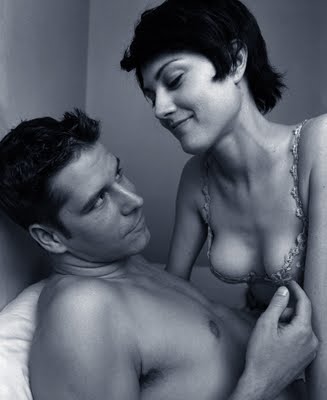
If you read the plot synopsis here you will understand the gist of the pictures and the reason for the camera, the doctor's smock, the mouse and Steve Griffith (Dan) in drag.
Anna. "She has one address in her address book; ours ... under 'H' for home."
Dan. I've cut that line.
Anna. Why ?
Dan. Too sentimental.
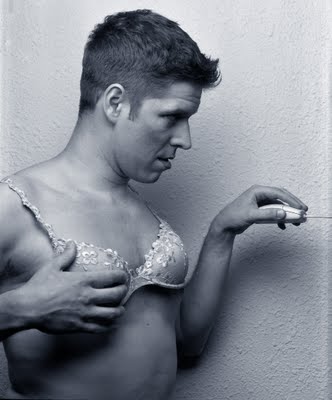

Dan. What do you want ?
Alice. To be loved.
Dan. That simple ?
Alice. It's a big want.
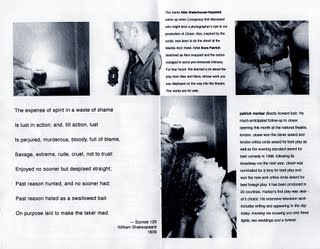

Larry. It's about you, isn't it ?
Alice. Some of me.
Larry. Oh ? What did he leave out ?
Alice. The truth.

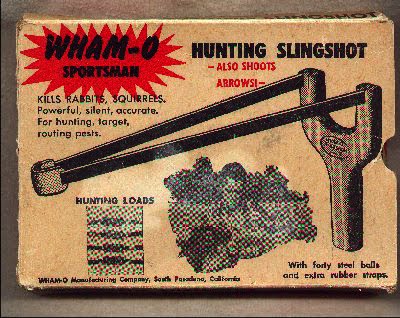
On February 13 I read in my hard copy NY Times:
Walter Fredrick Morrison, who at 17 sent the lid of a popcorn tin skimming through the air of a California backyard and as an adult remade the lid in plastic, in the process inventing the simple, elegant flying disc known today as the Frisbee, died Tuesday at his home in Monroe, Utah. He was 90.
I was not aware that Morrison’s invention before it was bought by the Wham-0 company in 1958 had been called the Flyin’ Cake Pan, the Whirlo-Way the Flyin’-Saucer and finally the Pluto Platter.
I read the obituary with nostalgic interest but I must clarify that I never did master the art of throwing a Frisbee. It may have been sometime around 1959 when the Frisbee arrived to St. Ed’s High School in Austin, Texas. The master of the sailing art was my friend (and now a successful dentist in Houston) Steve Burdick who tried his best to teach me. My expertise with wrist work involved the ping pong paddle. I was one of the best in school in that game. The Frisbee was never my thing and I remember young men throwing them in Kitsilano Beach here in Vancouver in the mid 70s. They often played the game with their dogs. I found the whole exercise kind of silly! My son-in-law Bruce Stewart plays something called Frisbee Golf.
While the Frisbee and I never did get along I had an early relationship with the Wham-O company in 1957 when I was a nerdish freshman at St.Ed’s.
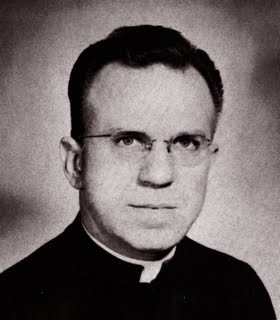
Because I was an Argentine born boy who had lived in Mexico so that my accent was a blend of Argentine and Mexican I was considered an outsider by la Raza (those that were either Mexican of Mexican heritage) while the white Texan/Americans considered me a foreigner (even though I, too was white and spoke English). I was in between and part of neither camps. I was left to my own resources.
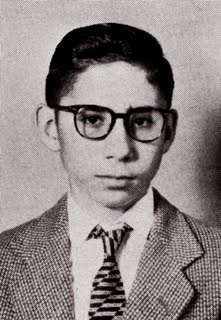 So I took advantage of the efficient American postal system and became a member of a “club” in which I purchased b+w glossies of airplanes including military fighters, vintage WWI and II plus the more recent jet fighters and bombers. The club also had a new section and I began to collect photographs of what they called guided missiles. I remember the BOMARC and the Nike.
So I took advantage of the efficient American postal system and became a member of a “club” in which I purchased b+w glossies of airplanes including military fighters, vintage WWI and II plus the more recent jet fighters and bombers. The club also had a new section and I began to collect photographs of what they called guided missiles. I remember the BOMARC and the Nike.
I also constructed gadgets. My source of materials for these gadgets was an army surplus store on Congress Avenue that was very close to the Congress Avenue Bridge (before the bats settled in). It was at that store that I bought a special compass that I could adapt into a flying-saucer-spotter. The compass could be opened so I was able to put two electrodes on either side of North. The electrodes I connected to a buzzer that was battery-powered. At night I would position the device under my bed with the compass pointing north. The idea behind the gadget is that many in those flying saucer sighting days had read (as had I) Major Donald Keyhoe’s The Flying Saucers Are Real and Flying Saucers From Outer Space. We were thus aware that the proximity of a flying saucer would affect the magnetic field. This meant that a nearby compass needle would fluctuate. If I had built my gadget correctly the buzzer would sound!
What I was not aware until Brother Vincent De Paul, CSC punished me for waking up part of the dormitory one night was that large tractor trailers also modified the magnetic field. Brother Vincent commanded me to disconnect my compass.
I shifted my interests to potentially more destructive and dangerous endeavours.
I purchased a Wham-O sling shot. I remember when it arrived in a little brown package. You loaded the leather pouch with steel balls or copper BBs. I was soon practicing by the creek with glass beer bottles.

When I saw an ad for the Wham-0 blowgun I rapidly lost interest in the sling shot. It arrived in a longish box. It was partly collapsible in that you connected the rear part with the hand grips to a front part. It came with steel darts that were five inches long. The weapon was silent and I soon came to realize that it was dangerous and could be deadly. Do you think the Brothers of the Holy Cross would have taken it away from me? Absolutely not, as far as Brother Vincent was concerned my “toys” made no noise at night! For a while I practiced to see how much my darts would pierce plywood. But the weapon was useless with beer bottles.
I visited the army surplus store and bought a co2 cartridge powered air pistol. I also bought a Spanish American War vintage leather holster (used for carrying a .45 caliber automatic). While many of my classmates became members of the National Rifle Association and joined the Rifle Club run by Brother Stanley Repucci I was never tempted. I perhaps did not know then but I might have already been a liberal who believed in gun control and a Canadian type of socialized health care system. I did not have the credentials to ever be a Texan. But I did practice by the creek to see if I could unholster the gun as quickly as Matt Dillon.
Brother Vincent did not take away my air pistol. It was in the summer holidays before I returned to St. Ed’s for Grade 10 that I ran into my first and last incident with my toys. In Nueva Rosita, Coahuila where my mother taught school to the children of the engineers of the American Smelting and Refining Company, we lived close by to a our American bowling alley. I remember spotting the older man who ran it, Juan standing by the door. Without thinking I put a dart into my blowgun and blew. The dart penetrated the door, inches from his face. My mother took away the blow gun. I was too old for an old-fashioned paliza (whipping).
Addendum: My son-in-law, Bruce Stewart has informed me that he does not play Frisbee golf. "It is called disc golf because if you were to try to catch one of these it would break your fingers."
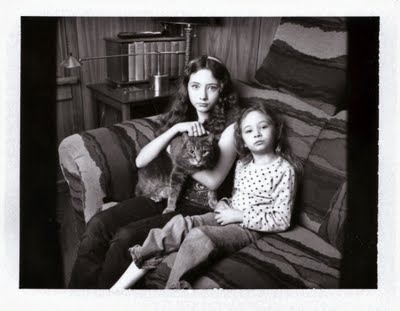
Le Roi est mort, vive le Roi!
Friday was indeed a sad day. I took Toby to the SPCA. I almost felt that Toby was apologetic when he soiled his plastic cage in the car. When Dr. Peter Lekkas saw Toby and noticed how far he had deteriorated after a previous visit a couple of weeks ago he looked at me and we both agreed on the course of action. I told Dr. Lekkas that while he dealt with Toby I was going to cross to the adoption side to see if some cat would appeal to me. That being the case I was going to adopt the cat, right on the spot, take him home and present Rosemary with a fait accompli. I did find a cat but I was not able to take him home.
The cat I saw was in a sterile quarantine section of the SPCA because many of their cats had suffered from respiratory diseases. They had all been kept apart just in case. In order to see the cats I had to slip into plastic booties and then stand for 30 seconds in a strong disinfectant. There was one cat I immediately noticed. He was a very large gray tabby with almost no markings, with strikingly large eyes of an unearthly yellow green. He was pleasant, low key and affectionate. His name was Kassy which was short for Kassynova [sic]. When I told the woman in charge that I was interested in Kassy she asked me, “Which cat is she?”
The folks at the SPCA told me that Kassy, 6, was a one cat household cat and that he was most definitely a house cat. That he was a house cat was evident as the 18 pound cat was certainly overweight. I was further told that he had never been around children. It seemed it was all stacked against me. I told them I wanted to take the cat anyway but I was denied. There is a new regulation that stipulates that if a person wants to adopt a cat in a two-person household the other person has to be there. Dr. Peter Lekkas tried to “fix” the situation by vouching that we were cat people and that I was not married and had no wife! I went home minus the cat.
Rosemary reluctantly told me that we would go the next day with the girls but she didn’t think she was ready for another cat just yet. I was thinking that as our financial fortunes diminish going from one cat (an eventually to none) might be our ticket if we plan to travel and or live in a small apartment.
Both Rebecca and her mother Hilary said I should get another cat that would be Rosemary’s, as Toby had been. Rebecca was precise, “Abi thinks that Plata (my female cat) is a bitch. She wants a cat of her own.”
So we went to the SPCA and all four of us crowded into the room wearing our plastic booties. Kassy sat on our lap, one at a time. He never hissed or in any way showed any inclination to be aggressive with the girls. I said nothing but Rebecca kept harping to her grandmother that this was indeed the cat that was going to be hers.
We left the SPCA with our cat. Both Lauren and I decided that Kassy would go back to his original name but spelled correctly. He would be Casanova and we would call him Casa for short. He is big as a house so the name fits.
During the whole two days Rosemary was so confused and worried about a possible adoption that she never really stopped to consider that I had returned Friday afternoon with Toby in a box. I opened the box in the garden to find a white towel that was wrapped almost in a ball. I could see Toby’s lovely white front paws sticking out. I had no heart to look any further. I dug the hole and put Toby in it. It began to drizzle as I covered the hole with leaves and dirt. As Rosemary said when I went up the stairs, “Toby is home.”
Plata did not know what to do when we arrived on Saturday with Casa. Casa was a bit shy and would hide under the bed (as cats so expertly manage to be in the exact centre so you cannot reach them). But by today Sunday Casa knows where the litter box is. He is friendly with everybody and allows himself to be picked up (if you are able to!) without any fuss. Rosemary had Casa on her chest while lying in bed. She is not too sure about Casa. She likes the traditional tabby cats with lots of markings on the body and those lovely white paws that Toby had. Rebecca pointed out that Casa is indeed a tabby as he has an M above the eyes.
I have a feeling that Rosemary and Casa, Casa and Plata, will be friends real soon. We will not forget Toby.
Today Rebecca called to say she, Lauren and their Nana wanted to pay us a visit so that Nana could meet Casa. We had hot chocolate and tea. I had the opportunity to take this Fuji instant print so that you can see Casa, at home.
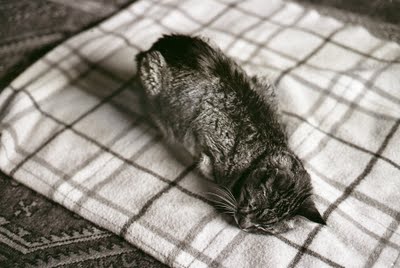
This blog will have Saturday February 13th as the date but I am writing it today Friday a little past noon. I feel I cannot do anything except anticipate with some dread my drive with Toby at 2:30.
Our 19 year-old cat Toby is going on a one way trip to the SPCA today. I will bring him back in a shoe box and bury him in the garden.
To the end Toby has done his best to be a clean cat. This morning he jumped from our bed and he did his business on a pile of newspapers by the bed. A couple of days before he had rolled down the stairs to reach the kitty litter box in the kitchen. That must have hurt! He has done his best. Last night he wanted to jump off the bed but Rosemary was on the phone and prevented him from doing so. The jump from the bed would have been pain. We had to wash our sheets and Toby himself was a mess. I gave him a warm shampoo bath to clean him up. He did not struggle.
I do believe that Rosemary knows her cat has to go. It will be unpleasant tonight and I will not be able to comfort her. I have always maintained that the quickest cure to a dead cat is a brand new one. I am not sure that we are ready to have another cat. The new cat would have to adapt to our female Plata who is fairly high strung. As our life winds down, having pets at home always puts a pressure on having to find someone to take care of them when we travel, even when it is a two-day stay at Ale’s in Lillooet. But a new cat would help bury some of Rosemary’s grief tonight. I will have a look at the cats at the SPCA. Who knows? Will Toby be the only cat (in a box) as I return home tonight?

It is fascinating how the intention of a meaning can vary with a language. Take for example the Spanish term aguafiestas. It literally means a person who waters down a party. My guess it has to do with the idea of diluting the booze or unspiking the punch bowl In English the term party pooper is self-evident and I wonder if there is a continuity of connection with the American term, “as funny (or as popular) as a turd in a punch bowl”.
I don’t want to be an aguafiestas with these 2010 Olympics. Perhaps I will wake up in a few days to experience that spirit our Vancouver Sun writes about. I certainly don’t want to emulate the spirit of that man that visits Rick Cluff’s Early Edition on CBC Radio 1 on Mondays. The man in question has trivialized and cheapened Bill Vander Zalm’s famous use of the word fantastic. That indefatigably tedious man should be pushed down the Olympic ski jump at Whistler. Fantastic! I have a feeling that Cluff would help me push. But I will stop here before I am accused of ranting.
I don’t want to be an Olympic party pooper. Even I, hope that Canada, my adopted country, reaches the gold medal final for men’s hockey. Of the other sports I will pass, and I will diverge to a holding pattern around pleasant matters. One that I re-discovered by accident last night was a file called Bry, Ellen.

Knowingly I have never seen this American actress (born in 1951) in any film. I never saw a single episode of the cult TV series St Elsewhere and I have avoided any TV programs with pointy eared characters that did not feature Leonard Nimoy as Mr. Spock.
I met Bree only once in 1987 in Whistler. I had gone there with Les Wiseman to report for Vancouver Magazine the goings on of a celebrity ski-a-thon. I don’t think that Wiseman ever did write two lines on any of the 2 or 3 ski-a-thons we attended. He found ways of convincing our editor, Malcolm Parry that this was a worthy pursuit and that we should go. The real reason was that the Whistler organizers promised the presence of Brooke Shields. Wiseman had a thing for her. Shields never did show up so we nursed single malt Scotch and sodas and photographed and interviewed as many other “celebrities” we could find. At the time Wiseman had a column for TV Guide. I guess some of what he wrote found a home there. In my case the one big break was a TV Guide cover of that other St. Elsewhere star, Bruce Greenwood.

When Wiseman and I met Bree, neither of us knew who she was. Wiseman consulted with a PR man who clued him in. The cluing did not come soon enough as it seems that I went up to Bry and told her, “We are a couple of ignorant Canadians. Who are you?”
I have very little memory of what transpired after that. Wiseman says Bry invited us to a party up in the mountain yet the picture here has her in a very nice low cut dress.
What I do remember is that when she faced my camera (At the time I had the silly notion of using Hollywood lighting which made it difficult for her to move. I was also kind of new at it and had little knowledge of what I was doing.) she was with me and with nobody else. I had a sense of a woman who was spraying me with either real pheromones or she was projecting some mental version of them straight into my brain. I don’t think I have ever felt quite like that and I have photographed my fair share of women clothed and otherwise. I felt seduced and attracted to her. I had a similar experience, but not as pleasantly intense, when I photographed German actress Barbara Sukowa.

Today, instead of lingering about the Olympics I will think of Bry and again feel lucky that I am a photographer and not a plumber.

Most of my life I have considered myself a connoiseur of non alcoholic drinks. I don’t drink much of the alcoholic variety. I avoid invitations to most weddings by stipulating, “Unless you serve Moët et Chandon I will not attend.” This ploy failed me once in a most pleasant way! As a little boy I had a fondness for chocolate milk. There was a powdered form called Toddy that sponsored my favourite radio program, Tarzán, El Rey de la Jungla. When I was 8, I forced my mother to take me to a parade in downtown Buenos Aires to see Tarzán. I remember he was sitting on the upper part of a convertible back seat and he had a banner across his wide chest (like the ones worn by Miss Universe) that read Tome Toddy (Drink Toddy).
I have a vivid memory when I was 9 of getting of the train in Belgrano with my mother to walk to school. She taught at the American High School and I walked two blocks more to the American Grammar School. On the way there was a little quiosco (a small covered stand) that sold soft drinks and blender juices. My favourite was banana con agua (water and banana, and the banana had to be slightly green)). On that particular day there was a little sign that read “Nueva y refrescante bebida, Seven-Up”. I insisted and my mother had to buy me my first ever Seven-Up and it was not quite 8:30 in the morning.
Most of us who recognized the real thing would have never tried that inferior Argentine cola drink called Bidú. Sipping one of those was as embarrassing as wearing jeans that were not Lees.
Once in Mexico in the mid 50s my favourite soft drink was the no-gas Delaware Punch (pronounced delláwhere ponch, if you wanted the grocery guy to know what you were asking for). I had the strange habit of drinking 3 or 4 of them (one right after the other) using a macaroni as a straw while watching Boston Blackie on our Zenith TV.
In the early 50s some Mexican politician noticed on a routine trip into the country's interior that there seemed to be lots of very young children walking tipsy in the small towns. He investigated and was told that these towns rarely had good, clean running water so the children drank mild pulque (an un-distilled version of tequila) as this was deemed safer.
The politician reported to the President of Mexico and immediately plans were made to develop a softdrink and beer industry in the country. These businesses would be given tax incentives and government help. By the late 50s there was a dizzying variety of interesting Mexican soft drinks (alas Delaware Punch disappeared) and there was more than coca, orange and pecsi (as real Mexicans pronounced Pepsi). It was in these times that the Mexican beer industry came from nothing to become a one of the leaders which such innovations like bottled beer on tap and early versions of the twist cap. There were some small, tubby uncarbonated drinks called Chaparritas El Naranjo. They came in several flavours but my favourite was mandarina. Chaparrita means short and small in Mexican Spanish. A Spaniard, a Mr. Mundet revolutionized the soft drink industry with a pasteurized apple drink called Sidral Mundet. And then there were the Jarritos. Most of us really liked the tamarind flavour one. As a hip teenager I avoided the very Mexican (it was terrible) Mexicola as much as I had avoided that Bidú in Buenos Aires. Mexicola was hyped by Mexican bantamwheight champion Raúl (Ratón) Macías. My mother really liked Squirt and when I married Rosemary in 1968 she insisted on drinking Squirt, too. One thing we do avoid here in Vancouver, besides now drinking few soft drinks with the exception of ginger ale, is to place a large soft drink bottle on the dinner table. Mexican Coca Cola manufactured a very large glass bottle called a caguama. Caguama is Mexican Spanish for a very large turtle.
My Yorkshire-born friend, Andrew Taylor lived nearby our Arboledas home in Mexico City. He was a student so he still lived with his parents in the fashionable gated community called Fracionamiento La Hacienda. His father Colin, was the comptroller for Coca Cola in Mexico. I loved going to visit Andrew because through his father’s connections they were able to serve Twinnings English Breakfast Tea which was much more palatable that my often reused Lipton Tea bags (when I could get them). On one occasion we were invited for dinner. Mrs Taylor was an excellent cook and Colin sat proudly at the head of the table and served us. I chose that precise moment to tell him that Coca Cola was high in phosphoric acid and that many in the automobile industry used his product to remove rust from chrome bumpers. He was not amused
Rosemary and I both agree that our favourite carbonated water is San Pellegrino. We find it slightly more acidic (better!) than Perrier. Every once in a while I surprise her with a Squirt. Hilary is trying to get off her Coca Cola-in-a-can addiction by drinking only one per day. Rebecca loves Dr. Pepper. I still drink my banana blended with lots of ice and water. And yes that banana has to be green.
On September 1998 the Globe & Mail dispatched me to Langley to photograph Robert Kyle, the president of Bev-Source a beverage company. They had just launched a family of 6 drinks called Revolution with Che Guevara on the beautifully painted label. The promotion included T-shirts (I have two of them) and stickums. I have kept three bottles of my original 6 variety. They are as follows:

Sarsaparilla – Rootbeer with attitude
Brainwash Cola – High caffeine cola
Swamp Water – Soda Fountain Blend
While I don’t remember what the other three were I think one of them was a cream soda that had the name Rebel Red. They were good.
If I would tell any of you readers of this blog about the former excisence of Revolution Cola, you would probably not believe me. But the pictures here are the proof.
Today Rosemary insisted on my going through my photo files from A to D. I was to read her names of people I might want to send my promotional postcards so that we can do a Lazarus on my photography business. It was during that search that I found the file Che Guevara Cola. There was another for which there is no room today. The file read Catch-It (Kitty Litter). Now I was dispatched by….
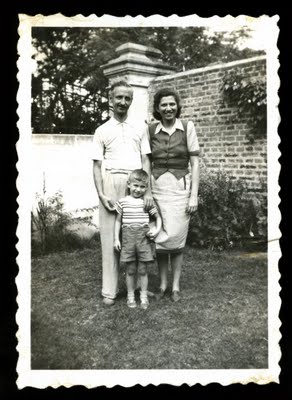
Since I can remember I was not good at sports. In Buenos Aires I was a so-so player in our gym classes. Since this was Argentina I had no knowledge of baseball or something called American football. We played futbol, the English brand, cricket and rugby. I was much too small and thin for rugby so I gave it up. My neurons could never rise up to the challenge of understanding the rules of cricket. This left me with futbol, a sport I never mastered as my two left feet prevented me from ever excelling at it or in that other Argentine endeavour, the tango.
My failure in futbol did not prevent me from playing the favourite street game of the time (I was 8 and 9) called estampitas. You would buy at the corner grocery store these futbol estampitas which were the size, shape and heft of the carboard stoppers of the milk bottles of the time. Here in North America they would have been called trading cards. Estampitas had portraits of the players of the Argentine futbol league. On purpose, the makers of the estampitas issued fewer portraits of the stars. We traded. We traded as we could also buy a comic book sized publication on which we could stick the pictures. The goal was to have all the blank circles in the pages full. We traded but more often we played a came which consisted in tossing (very carefully) the estampitas against a wall from a few metres away. The deal was to get your estampita as close to the line between the wall and the sidewalk. If you got it that close you won all the other estampitas thrown by your friends. I had two left feet but a very good right hand.
Because I was half English, raised as a snob by my parents (in picture here taken in January 1948 when I was 5) to snub at anything that was popular with the masses I was never taken to a futbol game by my father. My father looked down on our neighbours who would loudly play the speeches by Perón and Eva Perón during the festivities of 25 de mayo and 9 de Julio. He also looked down and considered it awfully gauche when they would listen to such Argentine classic futbol games as the one between Boca Juniors and River Plate (Club Atlético River Plate). As soon as there was the goal the announcer would prolong the goal into something like, “¡Goooooooooooooooooool, gol de Boca Juniors…!"
When possible, and on the sly, I did listen to some games. I was struck by some of the expressions the Argentine announcers used. These were hans (for touching the ball with your hands which was an infraction), or penalty. I also often heard corner for the corner kick. In those days they infrequently used the acceptable erm in Spanish which was mano and penal. The latter was a penalty shot to goal. Expressions such as backs and senteroforaward were often used.
I smiled at the concept of the name of one the worse teams in the league called Newell’s Old Boys founded in 1903 in the city of Rosario and still around today. They are the Argentine answer to the Cleveland Indians.
It was my Jewish/German friend Mario Hertzberg, who lived across the street, who would clue me in as to who the best teams were and who were the stars. One day he told me about el gol olímpico. This was a goal which was a corner kick (called a corner even in Spanish until in more recent times it was re-named tiro de esquina). The ball would somehow curve into the goal (or bounce in) without any other player touching the ball.
Which was the first one? Fifteen minutes into an international game between the Argentine National Team and the Uruguyan played on October 2, 1924, Argentine forward Cesáreo Onzari kicked the ball from his corner position and it produced a goal. The Argentine team won the game 2-1. They called it a gol olímpico to make fun of the fact that the Uruguayans were recent Olympic winners (Paris) in futbol.
There were other players who had done this before but until the IFAB (International Football Association Board meeting of 15 June 1924) authorised it for the following season such goals were disallowed. While Onzari is considered the first for the feat because his teamates called it a gol olímpico the very first gol olímpico ocurred in Scotland on August 21 and it was kicked by Billy Alston.
The gol olímpico remains a rare occurrence, often accomplished by fluke rather than intent, and with the goalkeeper usually blamed for an error. The only Olympic goal in the World Cup finals was scored for Colombia by Marcos Coll, beating legendary goalkeeper Lev Yashin in a 4–4 draw with the Soviet Union in 1962.
One of the few perks of being a conscript in the Argentine navy is that in unform I could attend any futbol game for free. In that uniform I saw a clásico between Boca (Boca Juniors) and River (River Plate). I arrived late. I remember being in a colectivo (bus) on my way to the game played in the Buenos Aires barrio called La Boca. I could hear a loud roar from the inside of the bus. When the bus stopped at the stadium and I got off I was able to understand what the roar was. Half of the stadium (30,000?) was shouting in unison an insult to the refiree. They were shouting "¡hijo de puta, hijo de puta!"(son of a whore!). Once in the stadium I had to stand where those with the cheap tickets stood. This was far from the upper stands called the plateas. One of the singular pleasures of going to football match was to drink a chocalate milk conconcotion called a Vascolet. Those in the upper areas opted for beer in paper cups. Bottles had been banned years before for obvious reasons. I was not prepared to what followed. The fans in those upper reaches would piss in the empty cups and then throw them down to where we were. I had to jump out of the way many times.
Another time I went to a game between River and Santos of Brazil. At the time (1965) Pelé still wore the dazzling white uniform of that team. I watched him make a goal which for me surpasses any gol olímpico. On his way to the Argentine goal he was met up by two River defenders. He kicked the ball with his heel so that it arched up into the air and in front of him. He ran past the two defenders to receive the ball which he kicked into the goal before it even hit the ground. There were shouts of of !Off side!" The goal was allowed. I was thrilled. As I went down the concrete platform of the River Plate stadium I noticed that the floor was very wet. I then noted that hundreds of men were pissing against the wall and the urine was simply following the dictates of gravity.
I have no doubt that when I read about Scottish or English soccer rowdies (hooligans!) trashing trains after a football match, that Argentines inherited not only a love for the game but also the ancillary rules of misbehaviour of the Sceptered Isle.
A note on rules of Spanish Grammar. In Spanish, nationalities, argentino, dates, julio are never capitalized. Thus a goal, an Olypic goal would still be gol olímpico no matter what the IOC or VANOC might opine and dictate.

Yesterday, Monday, Rosemary requested a specific menu for dinner. On Mondays I pick up Rebecca and Lauren at school at three and I bring them home and cook them a quick lunch. We had quesadillas (I use German Swiss cheese) and made my fresh salsa with tomatoes, cilantro, a serrano chile, Maldon salt and a squeeze of half a lemon. At six I pick up Hilary at work and bring her home and have dinner. Yesterday was different.
Rosemary requested a special menu because it was our 42nd wedding anniversary. We have long ago relinquished the habit of buying presents for each other. Having the family with us is the real delight even though Bruce Stewart (Hilary’s husband always works on Monday) could not come and our eldest daughter Ale has teaching responsibilities in Lillooet.
The menu was roast beef (which I begin on the barbecue and I slather the meat with molasses) with roast potatoes, carrots and onions. I make a special gravy using white wine. Rosemary is in charge of the real treat for everybody which is her excellent Yorkshire Pudding. While the pudding is really good with my gravy Rebecca prefers to eat hers with my homemade cranberry sauce!
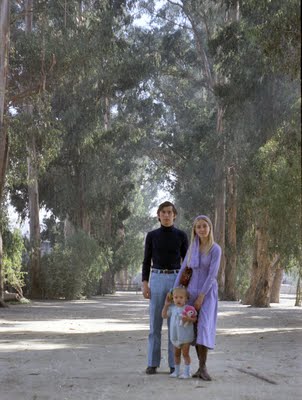
After dinner, Hilary and I finished seeing Carlos Saura’s Carmen which we had begun last Monday. I can safely say that this film has ruined for me the desire to ever see the opera again as the film is based more on the original story by Mallarmé than Bizet’s opera. Hilary and I have now seen two of Saura’s Flamenco Trilogy. We saw Amor Brujo and we will finish with Bodas de Sangre (Blood Wedding) next Monday.
I looked through my early photo files to find the pictures of Rosemary with me and with our two girls. The fist picture was taken by my Yorkshire friend, Andrew Taylor at the Nevado de Toluca in the State of Mexico. The mountains in the background are technically not mountains as they are the inside part of the crater of the volcano called Nevado de Toluca. That edge in the background is at 4600 meters. A sinuous dirt road goes up the outer part of the volcano and through a little canyon you are able to drive into the crates where there is a frozen lake called the Lake of the Moon. Some crazy skiers manage to climb the inside of the crater and ski down in a few minutes to then climb back up in what must at least be an hour!

The car was our first car a blue VW beetle. I am wearing an army surplus jacket that I bought in San Francisco in 1967 (this picture is from 1968). I am wearing a red enameled peace symbol. Not seen in the picture is an enormous darned hole in the jacket. It was about the height of my privates. There is no doubt in my mind that the former owner must have had a terrible death or suffered a much diminished manhood. Rosemary’s hair was blonde and straight. To make it straighter she used an iron and placed her hair on an ironing board.
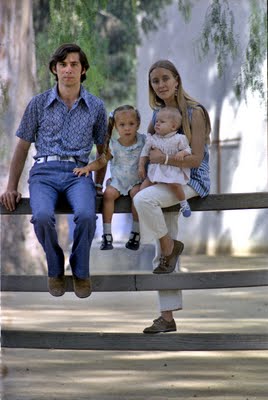
The next picture was a block away from our first house, a little brick house in Arboledas which was on the outskirts of Mexico City. The place of the picture was called the Bebederos as there was a large cement pool where animals from nearby farms or horses drank. The avenue had beautiful eucalypts. I am stiff waiting for the self-timer of my camera to work. That is little Ale perhaps at age 2 so the picture would have been taken in 1970. Rosemary is wearing a beautiful move knit dress that I had bought for her at el Puerto de Liverpool ( a spiffy department store similar to the old Eaton’s). Ale looks to be 2 so the year would be 1970. She is wearing a little dress that my mother had crocheted for her.
In the next picture, also taken at the Bebederos Hilary is 1. I am wearing a metal belt that was in segments linked by black leather. I still have it but, of course it doesn’t fit me.
The last picture is of our little house. I have no memory of the roses. My mother was living with us at the time and she would have hired a gardener to plant them.
We had a pleasant dinner last night. I took the children and my daughter home. On the way I put on Piazzolla’s Buenos Aires- Hora Cero. Rebecca called it psychedelic. It made me extremely nostalgic for my past. I only lived in Argentina for 11 years and then three more in my 20s. But I felt most Argentine and most Latin. The cold damp of Vancouver left me with melancholy and I again had that feeling of not belonging here. It is my wife and my children that keep put in this gray, green, blue land where the water is always cold.
I will never be able to explain to Rosemary or anybody else that I feel love for all the former women of my life. There weren’t many but I never broke up with any of them. Circumstances of geography separated us and I thought of the what ifs and what would have been the ramifications of my life had I bifurcated in some other direction. As I look at these pictures I know that the direction I did take was the best of all the possible ones.
Dubliners call the Natural History Museum "The Dead Zoo" - and they are dead right. If you love animals, you will have an Ace-Ventura-moment of sheer horror when seeing hundreds of what are effectively corpses, albeit conserved by taxidermists. Now called a "museum of a museum" the display is unmistakable Victorian in character and of the "shoot it, stuff it, show it" school.
Ireland Travel
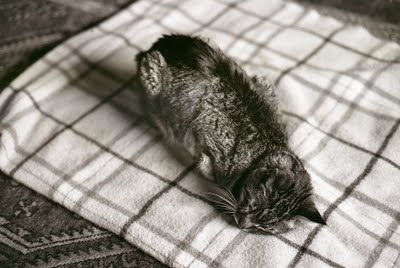
On Thursday I had lunch (he bought) with Tim Bray (a computer language guru who parks his hat via online connections with Sun Microsystems) at Main Street’s Locus Restaurant. We have as I can see three things in common. We are both interested in photography, we both have blogs and we both write into them in a more or less random process. We diverge in that Bray’s ongoing (he is an amateur typographer who insists that the title of his blog should be in lower case) has upwards of 50,000 daily readers.
While my blog may be random in that I rarely know from one day to the next what the subsequent blog will be, once I choose a theme I stick to it even if I diverge a bit within it. Bray’s method is much more flexible. He rarely dates his postings which he calls fragments. He writes his fragments anytime he wants to, be it during the day or at night. He may write his fragments from Vancouver, from Tokyo or from Bremen. He often writes several of his fragments in one day. I find this method much more flexible when I realize I want to write about several disparate themes in one day. Such was the case on Saturday when we went to the Vancouver Aquarium. On the same day Toby our terminally ill cat seem to waver more so into that direction. We could see him fading. I decided to photograph him in the endearing way he sleeps with his head bent down at an angle in what looks like a complete and satisfying calm.

As Rebecca, Lauren Rosemary and I explored the Vancouver Aquarium on Saturday afternoon I remembered reading an essay in one of the Stephen Jay Gould books I have. The one that came to mind was from Dinosaur In A Haystack – Reflections in Natural History (19950). One of the essays is called Cabinet Museums : Alive, Alive, Oh! In it Gould explores the Dublin Museum of Natural History which opened in 1733 and after a royal charter in 1749 from George II, became a museum of the Victorian Age with full and systematic presentation made up of cast ironwork and dark wooden cabinets. In an earlier visit Gould had found the museum full of must and grime. It was an almost abandoned museum that had never quite moved up to Edwardian times. This time around (1993) Gould wrote:
“Not one jot of tittle of any exhibit had been altered, but all the surroundings had been meticulously restored to their original conditions – not just accurately by lovingly as well…The glass ceiling has been cleaned, and the light floods through. The dark wood of the cabinets has been repaired and polished and the glass now shines. The elaborate cast ironwork has been scraped and decorated in colorful patterns reminiscent of the “painted lady” Victorian houses of San Francisco. The ensemble now exudes pride in its own countenance – and I fully understood, viscerally, the coherent and admirable theory behind a classical Victorian “cabinet” museum of natural history.”
Of modern museums Gould writes:
“In choosing to construct a dynamic museums of museums, in asserting the old ideal of displaying nature’s full diversity, in restoring their interior space to Victorian intent in harmonizing architecture with organism, the curators of the Dublin have stood against modern trends in museums of science – where fewer specimens, more emphasis on overt pedagogy, and increasing focus on “interactive” display (meaning good and thoughtful rapport of visitor and object when done well, and glitzy, noisy, pushbutton-activated nonsense when done poorly) have become the norm.”
Gould finishes his essay controversially as he cites that word so difficult to defend in the 21st century. The word is elitism.
“I must therefore end with a point that may seem outstandingly “politically incorrect,” but worthy of strong defense nonetheless. We too often, and tragically, confuse our legitimate dislike of elitism as imposed limitation with an argument for leveling all concentrated excellence to least common denominator of maximal accessibility. A cabinet museum may never “play” to a majority of children. True majorities, in a TV-dominated and anti-intellectual age, may need sound bites and flashing lights - and I am not against supplying such lures if they draw children into even a transient concern with science. But every classroom has one Sacks [Oliver], Korn [Erik], or one Miller [Jonathan], usually a lonely child with a passionate curiosity about nature, and a zeal that overcomes pressures for conformity. Do not one in fifty deserve their institutions as well – magic places, like cabinet museums, that can spark the rare flame of genius?
Elitism is repulsive when based upon external and artificial limitations like race, gender or social class. Repulsive and utterly false – for that spark of genius is randomly distributed across al the cruel barriers of our social prejudice. We therefore must grant access – and encouragement – to everyone; and must be unceasingly vigilant, and tirelessly attentive, in providing such opportunities to all children. We will have no justice until this kind of equality can be attained. But if only a small minority respond, and these are our best and brightest of all races, classes, and genders, shall we deny them the pinnacle of their soul’s striving because al their colleagues prefer passivity and flashing lights? Let them lift their eyes to hills of books, and at least a few museums that display the full image of nature’s variety. What is wrong with this truly democratic form of elitism?”
My thoughts on Stephen Jay Gould’s defense of the cabinet museum came to mind when I compared the obvious delight of my granddaughters at the Vancouver Aquarium with the failure on our part to engage our two teenage daughters into being interested in the displays of the London Museum, the Prado in Madrid and the Louvre in Paris. This was back around 1984. I failed to interest my daughters in the original manuscript of Lewis Carroll’s Alice’s Adventures in Wonderland. I could not understand (I do so now) why they were not impressed by the letters from Admiral Horatio Nelson to his paramour Lady Hamilton; there, was his signature after a most un-heroic sounding, “yours, affectionately…”! Fortunately, both girls (grownup now) remember the magic of the special room at the Prado that houses Diego Velázquez’ Las Meninas.
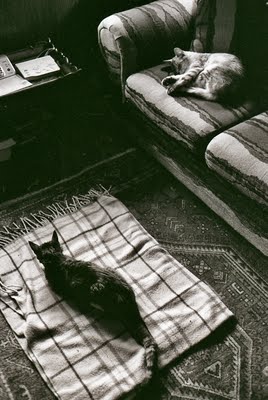
In 2003 when we took Rebecca (she was 5) to Washington DC I changed my museum viewing tactics. In my living room I showed Rebecca a 4 Goyas. One David, one Da Vinci, one Winslow Homer ( Right and Left) and Degas’Little Dancer Aged Fourteen. That is all we saw. This worked as Rebecca has not been turned off to the joys of museum going. We subsequently visited museums in Buenos Aires, Guanajuato, Mérida and Morelia to her delight.

I can now add the Vancouver Aquarium to the list of museums that both our granddaughters enjoy.
My suspicions were confirmed when I looked up the origin of the word museum. As I had guessed it does have all to do with the nine muses. The word museum is from the Latin museum and this word from the Greek μουσεῖον (museion) which means the house of the muses.
Caliope: Epic Poetry
Clio: History
Erato: Lyric Poetry
Euterpe: Music
Melpomene: Tragedy
Polyhymnia: Pantomine
Thalia: Comedy
Terpsichore: Dance
Urania: Astronomy
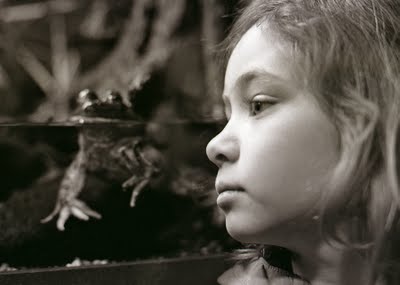
In 1975 when we arrived to Vancouver from Mexico one of the most ubiquitous bumper sticker and car rear window adornments featured a beautifully stylized killer whale in black, white, blue and silver. I immediately purchased my own and took Rosemary and my two daughters Ale and Hilary to the Vancouver Aquarium. In 1975 I smoked cigars and a pipe, thought women in high heel shoes were sexy and bought Playboy almost on a monthly basis.
The Planetarium was another Vancouver icon which we visited with regularity. I was in love with a city which featured mountains, water, bridges and what seemed to be booming museums. At the Maritime Museum I was thrilled by a tour of the RCMP ship the St Roch.
I had had enough of baroque churches and Mexican museums that smelled of antiquity. I was ready for the new, the modern. I was ready for Vancouver.
Slowly over the years I gave up smoking, thought high heeled shoes as devices that made women look ungainly and unbalanced and (yes) unsexy. I stopped reading Playboy. I became blind to the mountains, the water and the bridges except on those sunny days after weeks of gray and rain. I must admit (and this may be the real problem behind the low popularity of the Maritime Museum) that I never feel I am near the sea. I don’t hear or see waves nor do I smell the ubiquitous salt air of a port city such as Veracruz where lived for some years. I became a Vancouverite.
Ale and Hilary, Rosemary and I all enjoyed the thrill of the killer whale show at the Vancouver Aquarium. We never thought of them as being caged animals. It is only of late that I have come to understand (and almost sympathize) with the public relations problem that John Nightingale, the director of the Vancouver Aquarium has and seems to have reduced with a good measure of dogged effort on his part.
In some way I am proud (or at the very least find it significant) that my Rebecca “suffered” the pleasure of being splashed by the huge tail of a killer whale at the Vancouver Aquarium. We went to see one of the last shows before the whales were released or sent to other aquariums. The staid presence of the belugas now seems like watching clowns with painted white faces performing in slow motion in comparison to the excitement of the killer whales.
Is it only a matter of time before the pushed-into-a-corner Nightingale will have to defend the dolphin show. My granddaugther Lauren, 7, declared the dolphin show her favourite experience at the aquarium. Considering that, if anything, dolphins may be smarter than orcas and the presence of the two very cute sea otters who must be every much as intelligent as the pacific octopus I see trouble ahead. Will the aquarium some day feature, and, only feature small tropical fish and sea urchins with one or two sharks that people still manage to hate/love but without anthropomorphizing them into cuteness?
As an idealistic 21 year-old I remember believing that all in the world was black or white and could be reduced to either of both extremes. A slightly older and wiser friend told me that the world was mostly gray. Like my wise friend I see few things now as either black or white.
In a couple of early William Gibson novels, Gibson has a father and son entering a mall where the sons asks something like, “Dad what’s that?” and points to a display on a pedestal. The father replies, “That’s a stuffed horse.” It would seem that Gibson is predicting that someday we will no longer have horses and our memory of them will only be refreshed by the presence of a stuffed specimen.
Three years ago Rebecca, Rosemary and I visited Mexico’s largest zoo which is in Morelia in the state of Michoacán in Mexico. Because of its size, most animals seem to have space to move. When Rebecca spotted a raccoon in a small cage she noted that the animal was turning back in forth with the obsessive movement of an animal that is really caged. She grew angry and felt sad for the animal. Moments later we witnessed in a large compound full of African ostriches, two giraffes running one after the other. It was sheer ballet movement. The grace of these animals was a sight to relish, their necks seemed to follow the pattern of sine waves, with a slight out of phase but similar movement from their legs. When they finally stopped running around after what seemed like a long time, we looked at each other and realized we had experienced something unique.
The question I have for which I do not have a black and white answer is: Can we justify having a couple of cute sea otters in an aquarium so that their image for my granddaughters will not only be the image on a computer monitor? Do they have to experience a real zebra to experience a real zebra? I think I would now answer that affirmatively.
At age 12 Rebecca seemed to know more about the fish and sea animals at the aquarium than Rosemary and I did. She knew all about the belugas and their two offspring (even their names). Rebecca noted how rare this was and how lucky we were to have this happen in Vancouver. Her information has come from the net, school textbooks, magazines, good documentaries and a very important and well organized class trip to the aquarioum. Is all that enough?
My initial response is no. You need the real thing. But then the Vancouver Aquarium at the very least has specimens that are living. They are the real thing from the tiny little red frog that wowed Rebecca to the dolphins that delighted Lauren.
Because I was raised as a Roman Catholic, I can assert that up to about 20 years or so ago I would have told anyone that I had no doubt about the relationship that we humans had with the "lower orders". God had put the animals, the fishes (and even those mosquitoes) for us to lord over and to do with them as we saw fit. We were the humans. We have a soul.
It is only in the last few years that more and more of us (or at least this sort of former Roman Catholic) have modified that ever so selfish opinion that we were the kings of the earthly castle to the idea that we are on this planet together, including those pesky slugs and cutworms that eat my hostas.
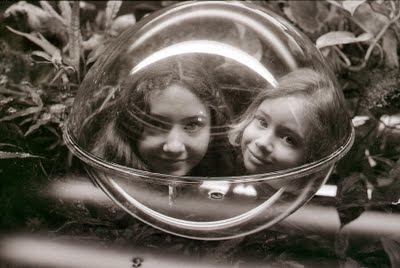
It was Brother Edwin who told us in our St. Ed’s High School theology class that even if Hitler were deemed to be a monster we still had to respect his humanity simply by the fact that he had been chosen by God to be born as a man. “There is an inherent human dignity in all of us,” Brother Edwin would often tell us. I have now modified that and extend it even to those garden pests. We are all in this together.
It was with all the above contradictions that I gingerly entered the Vancouver Aquarium yesterday. Our guide was Rebecca who pretty well directed us from here to there with a luxury of relevant information on what we saw. She seemed to know a lot about the frogs. I had to remind her that one sight that would be absent was a South American (I believe that it was South American.) baby alligator that we had seen when she was 4 and 5. The alligator was a startling cream, yellow and brown. For close to a year when Rebecca would misbehave I would make or threaten to make phone calls to the señor crocodilo as Rebecca called the cocodrilo (Spanish for crocodile). Rebecca smiled and smiled again when she pointed to the entrance to the 4-D film. These are BBC 3-D Planet Earth documentaries in which you are gently misted with water (when whales splash) or feel vibrations under your seat when certain sea animals discharge electricity, etc. This was a thrilling experience. All in all, the aquarium seemed less a museum, less an aquatic zoo, and more an experience that caught the attention of even the most special-effects-blasé kid. This experience might even push a few of these children into more exploration; an exploration into the real thing, perhaps?
It would seem to me that under the tutelage of John Nightingale, our Vancouver Aquarium is relevant in a most active way and I can only applaud the man who has stayed, through thick and thin, when others would have moved on.
Orpheum
Vancouver Syphony Orchestra
Conductor / Performers
Bramwell Tovey conductor
Larry Knopp Trumpet

Repertoire
Gershwin
Strike Up the Band
Grofe
Grand Canyon Suite: On the Trail
Scott Good
Between the Rooms for Trumpet and Orchestra*
Shelley Marwood
In Pursuit (VSO Olympic Commission)
Gershwin
Rhapsody in Blue
Gershwin
Porgy & Bess: Suite
While being told by my dental hygenist on Tuesday that I had a terrible cavity that would necessitate an expensive crown (“Off with the tooth,” I say) I heard a radio ad for a Vancouver Symphony Orchestra concert for today Saturday that features Gershwin’s Rhapsody in Blue.
The concert is a popular one as when I attempted to find four tickets together yesterday I found none except some very cheap one up in the gallinero (chickencoop and as Argentines call the upper reaches of their venerable Teatro Colón) of the Orpheum. I bought the tickets. I will be attending the concert with my daughter Hilary and her two daughters Rebecca and Lauren. We will be sure to bring a couple of binoculars so we can watch Maestro Bramwell Tovey play the piano part of the Rhapsody in Blue.
One would have to be sonically brain dead to not get thrills with the beginning of the Rhapsody in Blue with that vamping and swirling clarinet.
The granddaughters had a sleepover with us last night. Rebecca, intelligently turned me down when I offered to play a recording of Gershwin’s singular concerto. After all I will be watching both girls as they experience that thrill that one can only experience once in one’s life which is to listen to a beautiful composition for the first time.
I prepped up last night by listening to Miles Davis-Porgy and Bess with an orchestra directed by Gil Evans, anticipating tonight’s Porgy & Bess Suite. This led to Miles Davis’ Milestones and then to one of my faves, his Round About Midnight.
My guess is that to the girls upstairs the music sounded like grandfather music. The will hear some more tonight. It is my hope that it will surprise them, delight them and make them more curious to see what else I may have in my living room music library.

I first met Doctor Peter Lekkas (above with Rebecca) about 10 years ago. We are both members of the Vancouver Rose Society. Lekkas has a delightful French accent and has been known to wear 19th century pith helmets. If you mention his accent as being French he will correct you, like that famous detective, “I am not French. I am Belgian.”
Today I asked him, “Have you ever been to Waterloo?” His answer was immediate and with a smile on his face he said, “My brother lives nearby and we have played in Waterloo many times.”
If Lekkas were British he would be considered an English eccentric. But since he is Belgian he is an excentric that drives a shiny red Citroën Deux Chevaux when he wants to drive. He bikes around town in most cases. I would never consider myself to be an eccentric as I am neither British nor Belgian but I must disclose that both Lekkas and I share a love and both own an unusual rose called Rosa ‘Ghislaine de Féligonde’.
Rosemary and I have two cats. One, 19 years old, is the male cat Toby. Toby is Rosemary’s cat. My cat, Plata is 11 and a female.
For some time I have known that the best cure for a dead cat is an instant new cat. Mosca, Rosemary’s black male cat died 6 years ago. At the time Rosemary was confined to her bed as she had had a brutal foot operation. I left Rosemary and Mosca in the morning. Both were watching Hitchcock’s Vertigo. When I returned some hours later the scene was the same. Mosca (right on the fridge) was at the foot of the bed asleep. Minutes later Rosemary screamed that Mosca was not moving and that he might be dead. I ran up and when I picked him up he was as stiff as a board.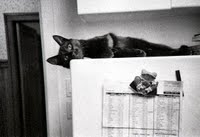 He had been dead for hours. Mosca’s replacement (after I broke my spade handle burying him in the garden) was a beautiful male tabby we called Niño. Within a month Niño died of cancer. Rosemary went to the SPCA in search of a male cat that would share our house with my female white, Polilla (moth in Spanish). We saw Toby and immediately fell for him. He was 14 years old so we decided not to. I returned a few months later and I spotted Plata a beautiful snow leopard like female. I noticed that Toby was still there. I brought Plata home. Plata and Polilla instantly began to fight. Polilla was defending her turf. Then one day I found Polilla outside, eviscerated by a raccoon. She was not a pretty sight. I buried her in the garden, and like clockwork I broke another spade handle.
He had been dead for hours. Mosca’s replacement (after I broke my spade handle burying him in the garden) was a beautiful male tabby we called Niño. Within a month Niño died of cancer. Rosemary went to the SPCA in search of a male cat that would share our house with my female white, Polilla (moth in Spanish). We saw Toby and immediately fell for him. He was 14 years old so we decided not to. I returned a few months later and I spotted Plata a beautiful snow leopard like female. I noticed that Toby was still there. I brought Plata home. Plata and Polilla instantly began to fight. Polilla was defending her turf. Then one day I found Polilla outside, eviscerated by a raccoon. She was not a pretty sight. I buried her in the garden, and like clockwork I broke another spade handle.
Rebecca and I returned to the SPCA. When Rebecca saw Toby she said, “Papi we have to bring Toby home because if we don’t he will be euthanized. We brought Toby home. It didn’t take Rosemary long to fall in love with Toby and for Plata (Plata is in front in picture below with Toby) and Toby to get along just fine. The situation was idyllic.
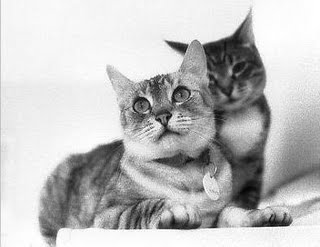
It all changed when Toby developed a thyroid problem. Doctor Margie from Cats Only prescribed some special pills we have forced into Toby’s mouth twice a day. Toby stabilized. Doctor Margie retired. We needed a new vet. Where was I going to find a new vet that I liked that was personal?
To my delight I remembered that Lekkas was a veterinarian and that he had told me that he worked at the SPCA. We have been taking Toby to see him since.
So we talk cats and roses and of Wellington and Napoleon. It has been pleasant. Then Toby began to lose weight. When Lekkas saw him, two weeks ago, he determined that not only was there a problem with the thyroid but also with the kidneys (a normal situation with a cat of Toby’s age). He told us to inject Toby with water every two days as he was dehydrated. He told us to feed Toby as often as he wanted to eat.
Toby got worse. He pooped in our bedroom. He had always been a clean cat. He moved around as if he had feline dementia. Our daughter Hilary and granddaughter Rebecca said we should put him out of his misery. Hilary went as far as to tell her mother that she was selfish in wanting to keep the cat as he was.
On Tuesday when Rosemary arrived from school she was surprised to find Toby at home. “I thought he would no longer be here.” I told her that you simply did not go to the SPCA and tell them to put down the cat. “You need to make an appointment first.” I called and made the date to see Peter Lekkas today. I didn’t think Rosemary would want to come, after all she thought that Toby’s trip to the vet might just be a one way trip. I explained to Rosemary that Lekkas would tell us what to do. “ He didn’t, but he did one better. He helped us make a good decision. Indeed the decision was a Wellingtonian close run thing.

Lekkas looked at Toby and informed us he had lost a kilo in two weeks. But he also said, “Dr. Margie does not believe in euthanizing cats just like that. I don’t think Toby will be around in 6 months. You would be selfish if you wanted to get rid of a cat that is suddenly doing stuff on your carpets.”
With that kind, reassuring smile of his (a Belgian smile, perhaps?) we left for home with Toby. We were both at peace. When we arrived Toby was spunky and ate and ate. I injected him with water and I watched how he licked himself clean, a sure sign that Toby’s demise may not be immediately forthcoming.
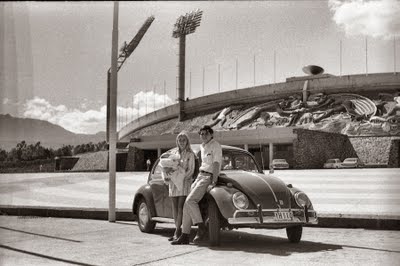
When our first daughter Alexandra Elizabeth was born August 27, 1968 we immediately dubbed her our Olympic baby. We were living in Mexico City at the time. The city and the nation were living with the anticipation and excitement of the Summer Olympics (officially called the Games of the XIX Olympiad) which were to open on October 12th, universally known in Latin America as “el Día de La Raza”. Latin Americans know that for better or for worse, Columbus Day marked the beginning of the mestizo race.
Mexico City was a city of unrest. The Mexican government and its president Gustavo Díaz Ordaz had invested a massive $150 million in preparations for the Olympics, (equal to roughly $7.5 billion dollars by today’s terms) a huge amount considering the poverty that was present then in Mexico. There were student protests all over the country. There were shouts of ¡No queremos olimpiadas, queremos revolución! ("We don't want Olympic Games, we want revolution!"). Finally in September, Ordaz ordered the occupation of the National Autonomous University by the army. In Mexico the often Hollywoodesque concept that a criminal can seek sancturay in a church really applies to a university. The autonomous part of the name reflects a Mexican university’s traditional independence. They have always guarded this right/privilege. It is sacrosanct in Mexico. The rector of the university Javier Barros Sierra resigned in protest on September 23 when students were beaten and arrested indiscriminately.
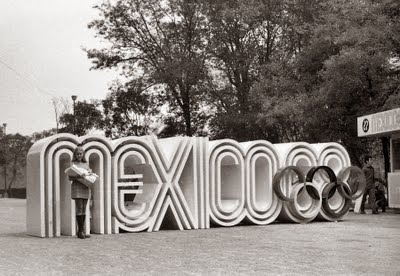
The stage was set for what was called the Tlatelolco Massacre which happened on October 2. At the time there were a few radio stations in Mexico in English that had a direct radio feed from the CBS network in the US. I often listened to the station as I had affection for liberal radio columnist Nicholas Von Hoffman’s corrosive but funny comments (“If you really want to have a kid, adopt a baby goat.”) and Dan Rather's quiet spoken almost gentle Texas accent. CBS radio news was on at the top of every hour. That late afternoon broadcast began something like this, “There have been reports of army shootings at students at the Plaza of Three Cultures (Aztec, Spanish, Mestizo). We take you to our correspondent, live from Tlatelolco in Mexico City, ‘The army has been shooting at students who have gathered here. I see many dead…’
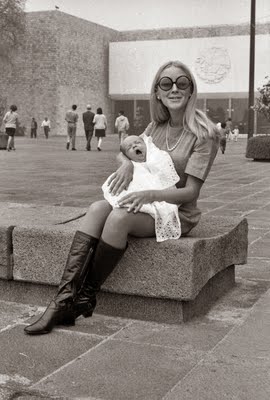 I could hear the gunshots and the shouts. Suddenly I heard a click and an announcer began, “The baseball scores for today are as follows: From the National League…” I switched the dial around and all I could hear was music. The Mexican government censors had taken care of all that after that small lapse in efficiency. It was quite a few years later that subsequent investigations on the massacre determined that snipers of the Presidential Guard had done much of the shooting and that at least 200 students had been killed.
I could hear the gunshots and the shouts. Suddenly I heard a click and an announcer began, “The baseball scores for today are as follows: From the National League…” I switched the dial around and all I could hear was music. The Mexican government censors had taken care of all that after that small lapse in efficiency. It was quite a few years later that subsequent investigations on the massacre determined that snipers of the Presidential Guard had done much of the shooting and that at least 200 students had been killed.
Amidst all this I managed to drive our blue VW beetle to the University where the Estadio Olímpico was being readied for the opening ceremonies. As you can see from the picture here which I must have taken sometime in September, there was no indication of the army or of any activity. It seemed to be dead. But the army was there. I had been stopped by a soldier who told me I could not go any further. I remember teling him that we had an Olympic baby and we wanted to take a picture by the stadium. The soldier laughed and said, "Pase señor." And then he took the picture for us.
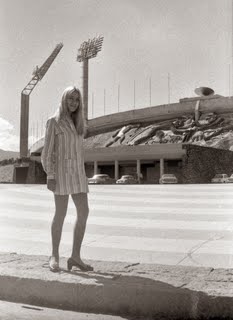
I often hear these days that living through an Olympics is a once-in-a-lifetime experience that one does not forget. I asked Rosemary this morning if she remembered anything. Her answer was a curt, “No.” I remember four events and two more.
I remember the wonderful highway of art that for miles featured beautiful and cutting edge sculpture from all over the world. These sculptures have survived to this day.
I remember going to a Greek play (appropriately performed by a Greek troupe in Greek). It might have been Aristophanes. I am not sure. But I do remember that the play was Greek to me and that every once in a while the actors would utter the word anthropos or nous. These were the only words I recognized.

I remember the Magic Lantern a phenomenal theatre production from former Czechoslovakia that mixed acting on stage with projections. The effects were similar to those old Laurel and Hardy films that had the two of them negotiating recklessly their car through intense traffic.
I remember watching (on TV) and being totally amazed by Bob Beamon’s (US) long jump of 8.90 metres (not broken until 1991).
But there were two events that will always live in my memory. One was the Mexican silver medalist Sargento José Pedraza in the 20km walk. While Mexico was able to win 9 medals in all (3 in each category of gold, silver and bronze) it was the win by this quiet and obviously mestizo soldier, ungainly, almost funny as he walked, who captured the hearts of Mexico. His silver medal soon became gold in my memory and only today was I able to correct it. The shy sergeant, left in picture, below) had won big between two Soviet Union behemoths.
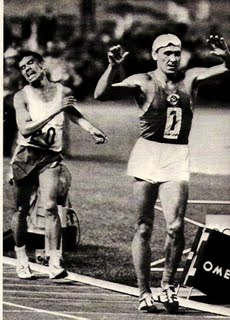
The other moment of note was to watch; American athletes Tommie Smith and John Carlos (first and third place) at the ceremony for the 200m sprint raise their fists in a “Black Panther” salute in protest to racism in America. The TV vision before my eyes was shockingly similar to another in my memory. It was that photograph of Jesse Owens in triumph in the 1938 Berlin Summer Olympics, while the German athlete, a member of the then "superior" race raised his arm in a salute to Hitler and the Japanese athlete quietly minded his own business.

Perhaps at my age and situation I have a good excuse for feeling about the Olympics the way Scrooge felt about Christmas. I might have warmed up a bit to a Summer Olympics but the winter sports leave me literally and figuratively cold. If I had the resources I would be packing for a visit to Mérida in Mexico or Trelew in Patagonia.

But who knows I just might catch that Olympic spirit yet and those words, ¡No queremos olimpiadas, queremos revolución! will fade away.
As I look at these pictures I get fond memories (My! are Rosemary's legs beautiful!) of what seemed to be the simpler times of my youth. As soon as Ale (Alexandra) had been born, my mother had come to visit us at our little apartment on Calle Estrasburgo in the Zona Rosa. "What you need is an English pram,” She told us. She picked up the English language newspaper The News and said, "Here is one. Let me call." The used English pram was made of finely lacquered (dark blue) wood). Soon after, we paraded our daughter on the elegant Paseo de la Reforma. Behind Rosemary and the pram you can see the bulk of the American Embassy. It was about then that Americans began to prepare for a worldwide siege on their embassies. Sargento Pedraza's win marked, in my opinion, a shift in Mexico. The Mexican soccer teams playing in games abroad where now called los Aztecas or el equipo cobre (the copper coloured team). Sargeant Pedraza's win in what was considered then a laughable sport became a symbol of the true amateur winning in a field of highly paid "amateur" athletes. Sargeant Pedraza's win may have marked the first awareness of the Mexican mestizos that they were indeed equal to any other race. They became proud and la Raza movement exploded into the US.
Indeed, good things can come out of the Olympics.
The conquest of Mexico
Columbus' egg
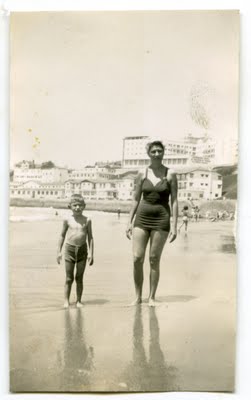
He took off a sweater that was hung over his shoulders and dove in. He had an inexplicable contempt for men who did not hurl themselves into pools. He swam a choppy crawl, breathing either with every stroke or every fourth stroke and counting somewhere well in the back of his mind the one-two one-two of a flutter kick. It was not a serviceable stroke for long distances but the domestication of swimming had saddled the sport with some customs and in his part of the world a crawl was customary. To be embraced and sustained by the light green water was less a pleasure, it seemed, than the resumption of natural condition, and he would have liked to swim without trunks, but this was not possible considering his project. He hoisted himself up on the far curb – he never used the ladder – and started across the lawn. When Lucinda asked where he was going, he said he was going to swim home.
The Swimmer, John Cheever
As I was writing the blog yesterday about my lifelong infatuation with Charlotte Rampling I kept thinking of The Swimming Pool, a 2003 film directed by François Ozon, a spooky but sensual film, equal parts Eric Rohmer and Alfred Hitchcock. That film, in English made me remember another fine Ozon film, in French (also with Charlotte Rampling ) called Under the Sand (2000) which also had some haunting water scenes.
Visions of Rampling poolside competing quite well at her age with the much younger French star Ludivine Sagnier persisted. From The Swimming Pool my thoughts instantly drove me to take out from one of my living room bookshelves, John Cheever’s, The Stories of John Cheever. I went for the index and found that story I had read back in 1979, The Swimmer. It is one of my favourite short stories even though I have never really liked shorts stories. I prefer the longer journey of character development of the novel. I read my share of short stories and particularly science fiction short story compilations in the 50s and in the 60s.
To this day The Swimmer holds up as did the 1968 film version of the story (which I saw years after I read the story). The film was directed by Frank Perry and Sydney Pollack and it features the beautifully athletic body (in swimming trunks for the duration of the film) of Burt Lancaster. The film is depressing as you watch Lancaster become older and older as he transverses the swimming pools of his suburban Connecticut town. There is a beauty, a sensuality, in his performance that I recognized in Rampling’s presence in The Swimming Pool.
I have no idea if Rampling can swim. For sure, Lancaster can and does so in The Swimmer. In some way Lancaster and Rampling combine to project images of my mother, who was the consummate swimmer. Her crawl was flawless and her back stroke never produced even the tiniest of ripples as she swam from one side of a pool to another.
I never saw or remember my father swimming. Yet when I asked his former wife (he had been married before he met my mother) if my father danced the tango I was met by a look of surprise. My mother had often told me how well George danced the tango and how when they danced in the cabarets of Paseo Colón people would stop to stare at them. It seemed so, his former wife said, that George was a beautiful swimmer. “He taught me to swim. We often went swimming.” The swimmer danced the tango and the tango dancer swam, But his women never did catch on that he did both.
Not only did I inherit my mother’s beautiful legs I also inherited her beautiful feet. "Some day you are going to be a fine swimmer," she would tell me. And for years she asserted that I would inherit my father’s talent for tango. For many years both of my mother’s predictions became lead weights in my mind. I was much too shy to dance in my high school years and suffered for it by not having girl friends. Swimming parties were always an embarrassment because my efficient breast stroke could not hide my pitiful crawl.
In 1975 I tried to address my swimming flaws and took stroke improvement classes at the YMCA. My swimming improved just a bit but the breakthrough was that I photographed a French Canadian woman who placed my pictures in the frames of the gift department of Holt Renfrew where she worked. That led to portrait jobs with the wealthy Vancouver Cohen family and an eventual job at Vancouver Magazine via fashion editor Gabriel Levy.
Perhaps some 12 years ago I decided to learn the Argentine tango. I took lessons. I became an efficient dancer, no more and no less.
I have made efforts to swim and tango back into my past to no avail. I can only remember the noise of the waves in Mar del Plata when my grandmother must have taken the snap you see here of my mother with the little boy who would one day grow not to be a swimmer or a tango dancer.

Dirk Bogarde 'The Look'
I remember being surprised, and showing it rather obviously, when Luchino Visconti, reading through the cast of a film which I had just agreed to make with him, said’…and finally I will use the English girl Charlotte Rampling for the young wife who is sent to the concentration camp…’
‘Rampling! But why?’ I remember saying tactlessly. Visconti placed the forefinger and thumb of each hand around his eyes, framing them. ‘For this,’he said. ‘For the Look.’
…Rampling keeps her own sensuality well banked down, but one is constantly aware of the fire below in the lithe walk, the measured tread, the slender length of leg, the curve of the neck and throat and perhaps, most of all, in the meaning and the suggestions which lie behind the Look. Those alone can still a breath. It seems all that is necessary.
Dirk Bogarde, Paris 23.2.87

In 1973 I took my Mexico City private high school 10th graders to the movies. My wife Rosemary accompanied us. The film was called Tis Pity She’s a Whore. It was directed by Giuseppe Patroni Griffi and the female lead (most important) was the dazzling Charlotte Rampling (picture, right, by photographer Angelo Frontoni). I thought I was safe in taking my students to see this “art” film since the screenplay was based on a play by the English Jacobean/Caroline playwright John Ford (1586-1640). The Italian film had the same title as Ford's play.
My students were a good bunch and kept their mouths shut in school the next day. I was given no trouble by the principal who was a member of the John Birch Society. I went home with the visions of Charlotte Rampling wearing nothing on an elaborate bed inside a Venetian palazzo.

In 1987 I made one of my usual trips to Toronto to see magazine art directors. I would show them my portfolio and attempt to get new work. This ploy sometimes worked. What was memorable of that trip is that I went to a huge bookstore, off Yonge Street, and found a book, Charlotte Rampling – With Compliments. It is an autobiographical picture book (from the very beginning and up to 1987) and it has an introduction by Dirk Bogarde. I will not go here into why anybody who reads this should immediately find a DVD version of The Night Porter (with Bogarde and Rampling) or if not in such a daring spirit go for: Luchino Visconti’s tamer The Damned.

While I would place Grace Kelly, Audrey Hepburn, Deborah Kerr or Jean Simmons on a pedestal and admire each one chastely, I might consider leaving Rosemary to cook her own meals while I was off for a weekend with Charlotte Rampling (with or without my camera).

It was in the Rampling book that I saw four photographs of her by Helmut Newton including the one you see here taken in an expensive Paris hotel room. There was Venice and there was Paris. Here I was in Vancouver. What could I possibly do after all that inspiration? The adapted formula became a steady stream of women that faced my camera in the best room that Tony Ricci could muster in his Marble Arch Hotel. I photographed very beautiful women.

I photographed unusually endowed women. I photographed handsome women. Those who frequent this blog have seen quite a few of them. But it has been in the last month that I figured it all out. I will never find a Charlotte Rampling. I have had many failures which are not the fault of the women who posed for me.
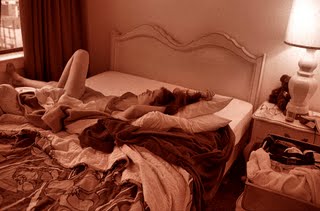
It was a failure of approach. In the beginning I was much too inexperienced and all I wanted was to photograph my subjects without clothing. These pcitures lack the class of Helmut Newton. In the end, the secret to my modest success was the use of clothing to hide and of undergarments that were simple.

This combination produced pictures, particularly those of Claire Love (who did go to Paris) that you see here and are all tinted in red. The other photograph is one of my early attempts. The picture is fine, the woman, Vantana, is beautiful but there is something missing. I take the blame.





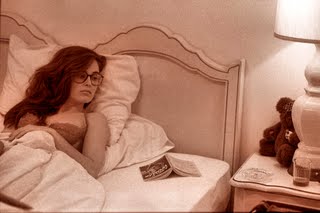


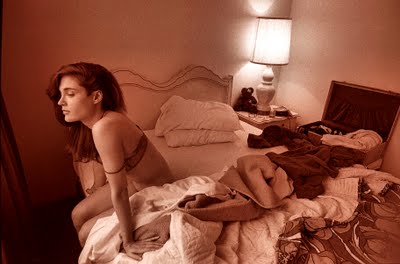

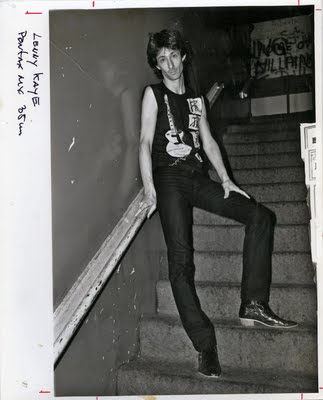
Les Wiseman, Rear Window, The Vancouver Sun, April 20, 2000
This pic was shot early morn, late 1981 on the stairway that led from the stage to the dressing rooms in the legendary Gary Taylor’s Rock Room on Wasserman’s Beat (Hornby between Georgia and Dunsmuir). It was the last night for that venue. Taylor’s was always a great place, featuring an eclectic variety of rock bands from mainstream, to blues to punk. In the main room, the rock crowd could sit in upholstered banquettes and swill with an approximation of nightclub sophistication. Downstairs, at various times, there were strippers and karaoke. Upstairs, in the dressing rooms there was rock’n’roll abandon.
In 1981, Taylor’s had become a mini Manhattan where any given week you could catch Johnny Thunders and the Cosa Nostra, Jane County and the Electric Chairs or the Lenny Kaye Connection.
Kaye had risen to fame first by being one of the gods of rock criticism with Rolling Stone, Creem and Rock Scene, and compiling the essential 1960s garage band album, Nuggets. Thereafter he became friends with punk visionary Patti Smith, while he was working at a record store called Village Oldies in New York. Smith persuaded him to dance in the aisles to The Bristol Stomp by the Dovelles.
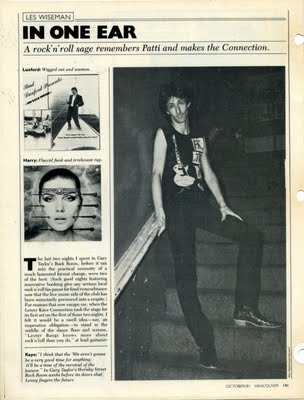 By 1971 he was playing guitar while Smith recited her poetry to 150 people at Saint Mark’s Church. This was the Patti Smith Group birthed. The resultant single, Hey Joe/Piss Factory, produced by Kaye, was the seminal punk recording that led to Horses, the 1975 Smith LP that ushered in the age of punk rock as much as did the rise of The Damned, Ramones, Television and The Sex Pistols. The Smith Group released four albums and had a hit with Bruce Springsteen’s Because the Night. Then Patti Smith retired to married life with husband Fred “Sonic” Smith, Formerly of MC5.
By 1971 he was playing guitar while Smith recited her poetry to 150 people at Saint Mark’s Church. This was the Patti Smith Group birthed. The resultant single, Hey Joe/Piss Factory, produced by Kaye, was the seminal punk recording that led to Horses, the 1975 Smith LP that ushered in the age of punk rock as much as did the rise of The Damned, Ramones, Television and The Sex Pistols. The Smith Group released four albums and had a hit with Bruce Springsteen’s Because the Night. Then Patti Smith retired to married life with husband Fred “Sonic” Smith, Formerly of MC5.
With her husband’s death in 1994, Smith worked through her grief with new albums always featuring the stalwart Kay on lead guitar The Patti Smith Group appears at the Commodore Ballroom on Saturday [April 22, 2000].
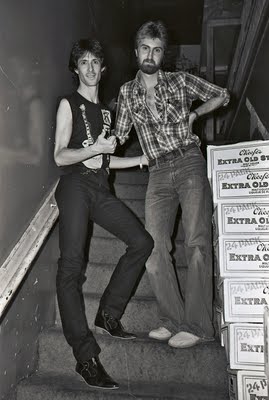 After the original demise of the group, Kaye formed The Connection and released an album. I Got a Right was picked up by the cognoscenti, but was not commercially boffo. After his Vancouver appearance with The Connection I wrote and article on Kay for my Vancouver Magazine In One Ear column. He had left me his address, so I sent the piece off to him and a couple of weeks later received a letter thanking me for writing about him and if I was ever in NYC to look him up. In March of 1983, I called Country Rhythms magazine (Kaye was a contributing editor) from a hotel off Times Square and told them that I was looking for Kaye. Within a half-hour, Kaye called and invited photographer Alex Waterhouse-Hayward and me to the Danceteria for a poetry reading by Jim Carroll that night.
After the original demise of the group, Kaye formed The Connection and released an album. I Got a Right was picked up by the cognoscenti, but was not commercially boffo. After his Vancouver appearance with The Connection I wrote and article on Kay for my Vancouver Magazine In One Ear column. He had left me his address, so I sent the piece off to him and a couple of weeks later received a letter thanking me for writing about him and if I was ever in NYC to look him up. In March of 1983, I called Country Rhythms magazine (Kaye was a contributing editor) from a hotel off Times Square and told them that I was looking for Kaye. Within a half-hour, Kaye called and invited photographer Alex Waterhouse-Hayward and me to the Danceteria for a poetry reading by Jim Carroll that night.
It can hardly be overestimated how cool it was to walk up to the door of the hippest club in Manhattan and tell the doorman, “We’re on Lenny Kaye’s guest list.” Inside we spotted Kaye’s gaunt frame. We introduced ourselves and he introduced us to the two guys he was talking with: Jim Carroll, below left, the author of The Basketball Diaries and leader of The Jim Carroll Band, and David Johansen former lead singer of The New York Dolls, later to become Buster Poindexter. It was rock fan-writer paradise.
 Now Smith and Kaye are back, making music both visceral and cerebral with the new album, Gung Ho. Kaye in 1981 said that the Smith Group was a purely ‘70’s phenomenon.
Now Smith and Kaye are back, making music both visceral and cerebral with the new album, Gung Ho. Kaye in 1981 said that the Smith Group was a purely ‘70’s phenomenon.
“It’s like we did it,” he explained. “And I think Patti, above all people, realizes that once you did it, why bother doing it again? We set out to be a totally idealistic art project, and we maintained it throughout our whole life. And to me, Patti calling a halt to it only vindicates her art.”
Kaye’s statement still stands valid. But time and loss change everything.
Les Wiseman, 2000
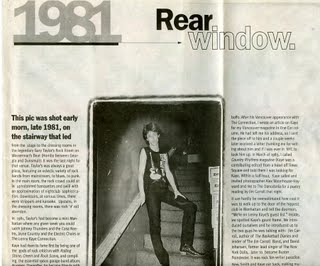
On Sunday I talked with Les Wiseman and former CBC and Sony Records honcho rep Dave Chesney to see what I could possibly tell my students at VanArts on Monday in a class called Editorial Rock Band Photography. I lay on the floor a long stream of 11x14 prints of many of the rock performers I photographed for Les Wisman's Vancouver Magazine column In One Ear. Few if any of the pictures registered any kind of recognition in my class. Few if any were interested in knowing who the people were. I pointed out the NY Times Literary Magazine review of Patti Smith's autobiographical account of her life with photographer Robert Mapplethorpe, Just Kids. Only a couple in class knew who either Patti Smith is or Robert Mapplethorpe was. I would have been wasting my time to recommend the wonders of listening to a recording of Johnny Thunders playing Louie Louie to no avail. I felt a bit sad and disconnected. And then I thought and realized that it was in 1979 that I first experienced Vancouver's Art Bergmann his dazzling and passionate guitar at the Smiling Budhha. I was 37 years old. My students have plenty of time to discover the joy of listening to a fast and furious electric guitar by that master of the whammy bar, Lenny Kaye.
And I remember the words of Les Wiseman, "Our magazine was a give away yet it was a fine magazine. To this day people tell me how they appreciated In One Ear." Or as Lenny Kaye said in Wiseman's piece above, "It's like we did it." I think that should be enough for both of us.

The expense of spirit in a waste of shame
is lust in action; and, till action, lust
is perjured, murderous, bloody, full of blame,
Savage, extreme, rude, cruel, not to trust:
Enjoyed no sooner but despised straight;
Past reason hunted, and no sooner had
Past reason hated as a swallowed bait
On purpose laid to make the taker mad.
Sonnet 129, William Shakespeare 1609

Sometime in spring of 2001 I was approached by Richard Wolfe and Tim Carlson of The Theatre Conspiracy with an offer I could not refuse. They were going to mount a performance of Patrick Marber’s play Closer (June 7-16) and they wanted me to take pictures even before the rehearsals began. Wolfe was the director and Carlson the assistant director. The idea is that our pictures (in collaboration with Argentine painter Nora Patrich) would serve as special promotional photographs, as photographs to be used in the program and the photos and collaborations with Patrich (part sketches and part photographs) would hang the night of the opening in large frames.

The actors Kurt Max Runte (as Larry, seen here in a doctor’s smock) Steve Griffith, Michelle Harrison ( Alice seen here as the stripper) and Sarah Louise Turner ( Anna as the photographer) had not really met. Patrich and I put them into a room of the Marble Arch (we had read the script) and set up the shots. We were in the room for four hours. What was really amazing for me is that I had forgotten that actors can act, particularly on demand with short notice! I would give them instructions and they would do as told. I would only need to shoot one or two frames. Runte and Harrison posed in one of the real stripper booths of the Marble Arch. It felt authentic. The amount of emotion we were able to extract from these four was an experience I will never forget.

I have seen some excellent theatrical pictures in Vancouver through the years but just this time I will beat on my own drum to opine that these pictures are really special.

If you read the plot synopsis here you will understand the gist of the pictures and the reason for the camera, the doctor's smock, the mouse and Steve Griffith (Dan) in drag.
Anna. "She has one address in her address book; ours ... under 'H' for home."
Dan. I've cut that line.
Anna. Why ?
Dan. Too sentimental.


Dan. What do you want ?
Alice. To be loved.
Dan. That simple ?
Alice. It's a big want.


Larry. It's about you, isn't it ?
Alice. Some of me.
Larry. Oh ? What did he leave out ?
Alice. The truth.

Pluto Platters & Wham-O Blowguns
Monday, February 15, 2010

On February 13 I read in my hard copy NY Times:
Walter Fredrick Morrison, who at 17 sent the lid of a popcorn tin skimming through the air of a California backyard and as an adult remade the lid in plastic, in the process inventing the simple, elegant flying disc known today as the Frisbee, died Tuesday at his home in Monroe, Utah. He was 90.
I was not aware that Morrison’s invention before it was bought by the Wham-0 company in 1958 had been called the Flyin’ Cake Pan, the Whirlo-Way the Flyin’-Saucer and finally the Pluto Platter.
I read the obituary with nostalgic interest but I must clarify that I never did master the art of throwing a Frisbee. It may have been sometime around 1959 when the Frisbee arrived to St. Ed’s High School in Austin, Texas. The master of the sailing art was my friend (and now a successful dentist in Houston) Steve Burdick who tried his best to teach me. My expertise with wrist work involved the ping pong paddle. I was one of the best in school in that game. The Frisbee was never my thing and I remember young men throwing them in Kitsilano Beach here in Vancouver in the mid 70s. They often played the game with their dogs. I found the whole exercise kind of silly! My son-in-law Bruce Stewart plays something called Frisbee Golf.
While the Frisbee and I never did get along I had an early relationship with the Wham-O company in 1957 when I was a nerdish freshman at St.Ed’s.
Because I was an Argentine born boy who had lived in Mexico so that my accent was a blend of Argentine and Mexican I was considered an outsider by la Raza (those that were either Mexican of Mexican heritage) while the white Texan/Americans considered me a foreigner (even though I, too was white and spoke English). I was in between and part of neither camps. I was left to my own resources.
 So I took advantage of the efficient American postal system and became a member of a “club” in which I purchased b+w glossies of airplanes including military fighters, vintage WWI and II plus the more recent jet fighters and bombers. The club also had a new section and I began to collect photographs of what they called guided missiles. I remember the BOMARC and the Nike.
So I took advantage of the efficient American postal system and became a member of a “club” in which I purchased b+w glossies of airplanes including military fighters, vintage WWI and II plus the more recent jet fighters and bombers. The club also had a new section and I began to collect photographs of what they called guided missiles. I remember the BOMARC and the Nike. I also constructed gadgets. My source of materials for these gadgets was an army surplus store on Congress Avenue that was very close to the Congress Avenue Bridge (before the bats settled in). It was at that store that I bought a special compass that I could adapt into a flying-saucer-spotter. The compass could be opened so I was able to put two electrodes on either side of North. The electrodes I connected to a buzzer that was battery-powered. At night I would position the device under my bed with the compass pointing north. The idea behind the gadget is that many in those flying saucer sighting days had read (as had I) Major Donald Keyhoe’s The Flying Saucers Are Real and Flying Saucers From Outer Space. We were thus aware that the proximity of a flying saucer would affect the magnetic field. This meant that a nearby compass needle would fluctuate. If I had built my gadget correctly the buzzer would sound!
What I was not aware until Brother Vincent De Paul, CSC punished me for waking up part of the dormitory one night was that large tractor trailers also modified the magnetic field. Brother Vincent commanded me to disconnect my compass.
I shifted my interests to potentially more destructive and dangerous endeavours.
I purchased a Wham-O sling shot. I remember when it arrived in a little brown package. You loaded the leather pouch with steel balls or copper BBs. I was soon practicing by the creek with glass beer bottles.

When I saw an ad for the Wham-0 blowgun I rapidly lost interest in the sling shot. It arrived in a longish box. It was partly collapsible in that you connected the rear part with the hand grips to a front part. It came with steel darts that were five inches long. The weapon was silent and I soon came to realize that it was dangerous and could be deadly. Do you think the Brothers of the Holy Cross would have taken it away from me? Absolutely not, as far as Brother Vincent was concerned my “toys” made no noise at night! For a while I practiced to see how much my darts would pierce plywood. But the weapon was useless with beer bottles.
I visited the army surplus store and bought a co2 cartridge powered air pistol. I also bought a Spanish American War vintage leather holster (used for carrying a .45 caliber automatic). While many of my classmates became members of the National Rifle Association and joined the Rifle Club run by Brother Stanley Repucci I was never tempted. I perhaps did not know then but I might have already been a liberal who believed in gun control and a Canadian type of socialized health care system. I did not have the credentials to ever be a Texan. But I did practice by the creek to see if I could unholster the gun as quickly as Matt Dillon.
Brother Vincent did not take away my air pistol. It was in the summer holidays before I returned to St. Ed’s for Grade 10 that I ran into my first and last incident with my toys. In Nueva Rosita, Coahuila where my mother taught school to the children of the engineers of the American Smelting and Refining Company, we lived close by to a our American bowling alley. I remember spotting the older man who ran it, Juan standing by the door. Without thinking I put a dart into my blowgun and blew. The dart penetrated the door, inches from his face. My mother took away the blow gun. I was too old for an old-fashioned paliza (whipping).
Addendum: My son-in-law, Bruce Stewart has informed me that he does not play Frisbee golf. "It is called disc golf because if you were to try to catch one of these it would break your fingers."
Le Roi Est Mort, Vive Le Roi!
Sunday, February 14, 2010

Le Roi est mort, vive le Roi!
Friday was indeed a sad day. I took Toby to the SPCA. I almost felt that Toby was apologetic when he soiled his plastic cage in the car. When Dr. Peter Lekkas saw Toby and noticed how far he had deteriorated after a previous visit a couple of weeks ago he looked at me and we both agreed on the course of action. I told Dr. Lekkas that while he dealt with Toby I was going to cross to the adoption side to see if some cat would appeal to me. That being the case I was going to adopt the cat, right on the spot, take him home and present Rosemary with a fait accompli. I did find a cat but I was not able to take him home.
The cat I saw was in a sterile quarantine section of the SPCA because many of their cats had suffered from respiratory diseases. They had all been kept apart just in case. In order to see the cats I had to slip into plastic booties and then stand for 30 seconds in a strong disinfectant. There was one cat I immediately noticed. He was a very large gray tabby with almost no markings, with strikingly large eyes of an unearthly yellow green. He was pleasant, low key and affectionate. His name was Kassy which was short for Kassynova [sic]. When I told the woman in charge that I was interested in Kassy she asked me, “Which cat is she?”
The folks at the SPCA told me that Kassy, 6, was a one cat household cat and that he was most definitely a house cat. That he was a house cat was evident as the 18 pound cat was certainly overweight. I was further told that he had never been around children. It seemed it was all stacked against me. I told them I wanted to take the cat anyway but I was denied. There is a new regulation that stipulates that if a person wants to adopt a cat in a two-person household the other person has to be there. Dr. Peter Lekkas tried to “fix” the situation by vouching that we were cat people and that I was not married and had no wife! I went home minus the cat.
Rosemary reluctantly told me that we would go the next day with the girls but she didn’t think she was ready for another cat just yet. I was thinking that as our financial fortunes diminish going from one cat (an eventually to none) might be our ticket if we plan to travel and or live in a small apartment.
Both Rebecca and her mother Hilary said I should get another cat that would be Rosemary’s, as Toby had been. Rebecca was precise, “Abi thinks that Plata (my female cat) is a bitch. She wants a cat of her own.”
So we went to the SPCA and all four of us crowded into the room wearing our plastic booties. Kassy sat on our lap, one at a time. He never hissed or in any way showed any inclination to be aggressive with the girls. I said nothing but Rebecca kept harping to her grandmother that this was indeed the cat that was going to be hers.
We left the SPCA with our cat. Both Lauren and I decided that Kassy would go back to his original name but spelled correctly. He would be Casanova and we would call him Casa for short. He is big as a house so the name fits.
During the whole two days Rosemary was so confused and worried about a possible adoption that she never really stopped to consider that I had returned Friday afternoon with Toby in a box. I opened the box in the garden to find a white towel that was wrapped almost in a ball. I could see Toby’s lovely white front paws sticking out. I had no heart to look any further. I dug the hole and put Toby in it. It began to drizzle as I covered the hole with leaves and dirt. As Rosemary said when I went up the stairs, “Toby is home.”
Plata did not know what to do when we arrived on Saturday with Casa. Casa was a bit shy and would hide under the bed (as cats so expertly manage to be in the exact centre so you cannot reach them). But by today Sunday Casa knows where the litter box is. He is friendly with everybody and allows himself to be picked up (if you are able to!) without any fuss. Rosemary had Casa on her chest while lying in bed. She is not too sure about Casa. She likes the traditional tabby cats with lots of markings on the body and those lovely white paws that Toby had. Rebecca pointed out that Casa is indeed a tabby as he has an M above the eyes.
I have a feeling that Rosemary and Casa, Casa and Plata, will be friends real soon. We will not forget Toby.
Today Rebecca called to say she, Lauren and their Nana wanted to pay us a visit so that Nana could meet Casa. We had hot chocolate and tea. I had the opportunity to take this Fuji instant print so that you can see Casa, at home.
The Cat In The Box
Saturday, February 13, 2010

This blog will have Saturday February 13th as the date but I am writing it today Friday a little past noon. I feel I cannot do anything except anticipate with some dread my drive with Toby at 2:30.
Our 19 year-old cat Toby is going on a one way trip to the SPCA today. I will bring him back in a shoe box and bury him in the garden.
To the end Toby has done his best to be a clean cat. This morning he jumped from our bed and he did his business on a pile of newspapers by the bed. A couple of days before he had rolled down the stairs to reach the kitty litter box in the kitchen. That must have hurt! He has done his best. Last night he wanted to jump off the bed but Rosemary was on the phone and prevented him from doing so. The jump from the bed would have been pain. We had to wash our sheets and Toby himself was a mess. I gave him a warm shampoo bath to clean him up. He did not struggle.
I do believe that Rosemary knows her cat has to go. It will be unpleasant tonight and I will not be able to comfort her. I have always maintained that the quickest cure to a dead cat is a brand new one. I am not sure that we are ready to have another cat. The new cat would have to adapt to our female Plata who is fairly high strung. As our life winds down, having pets at home always puts a pressure on having to find someone to take care of them when we travel, even when it is a two-day stay at Ale’s in Lillooet. But a new cat would help bury some of Rosemary’s grief tonight. I will have a look at the cats at the SPCA. Who knows? Will Toby be the only cat (in a box) as I return home tonight?
Ellen Bry - Olympic Pheromones
Friday, February 12, 2010

It is fascinating how the intention of a meaning can vary with a language. Take for example the Spanish term aguafiestas. It literally means a person who waters down a party. My guess it has to do with the idea of diluting the booze or unspiking the punch bowl In English the term party pooper is self-evident and I wonder if there is a continuity of connection with the American term, “as funny (or as popular) as a turd in a punch bowl”.
I don’t want to be an aguafiestas with these 2010 Olympics. Perhaps I will wake up in a few days to experience that spirit our Vancouver Sun writes about. I certainly don’t want to emulate the spirit of that man that visits Rick Cluff’s Early Edition on CBC Radio 1 on Mondays. The man in question has trivialized and cheapened Bill Vander Zalm’s famous use of the word fantastic. That indefatigably tedious man should be pushed down the Olympic ski jump at Whistler. Fantastic! I have a feeling that Cluff would help me push. But I will stop here before I am accused of ranting.
I don’t want to be an Olympic party pooper. Even I, hope that Canada, my adopted country, reaches the gold medal final for men’s hockey. Of the other sports I will pass, and I will diverge to a holding pattern around pleasant matters. One that I re-discovered by accident last night was a file called Bry, Ellen.

Knowingly I have never seen this American actress (born in 1951) in any film. I never saw a single episode of the cult TV series St Elsewhere and I have avoided any TV programs with pointy eared characters that did not feature Leonard Nimoy as Mr. Spock.
I met Bree only once in 1987 in Whistler. I had gone there with Les Wiseman to report for Vancouver Magazine the goings on of a celebrity ski-a-thon. I don’t think that Wiseman ever did write two lines on any of the 2 or 3 ski-a-thons we attended. He found ways of convincing our editor, Malcolm Parry that this was a worthy pursuit and that we should go. The real reason was that the Whistler organizers promised the presence of Brooke Shields. Wiseman had a thing for her. Shields never did show up so we nursed single malt Scotch and sodas and photographed and interviewed as many other “celebrities” we could find. At the time Wiseman had a column for TV Guide. I guess some of what he wrote found a home there. In my case the one big break was a TV Guide cover of that other St. Elsewhere star, Bruce Greenwood.

When Wiseman and I met Bree, neither of us knew who she was. Wiseman consulted with a PR man who clued him in. The cluing did not come soon enough as it seems that I went up to Bry and told her, “We are a couple of ignorant Canadians. Who are you?”
I have very little memory of what transpired after that. Wiseman says Bry invited us to a party up in the mountain yet the picture here has her in a very nice low cut dress.
What I do remember is that when she faced my camera (At the time I had the silly notion of using Hollywood lighting which made it difficult for her to move. I was also kind of new at it and had little knowledge of what I was doing.) she was with me and with nobody else. I had a sense of a woman who was spraying me with either real pheromones or she was projecting some mental version of them straight into my brain. I don’t think I have ever felt quite like that and I have photographed my fair share of women clothed and otherwise. I felt seduced and attracted to her. I had a similar experience, but not as pleasantly intense, when I photographed German actress Barbara Sukowa.

Today, instead of lingering about the Olympics I will think of Bry and again feel lucky that I am a photographer and not a plumber.
Revolutionary Cola - A Manifesto Of Soft Drinks
Thursday, February 11, 2010

Most of my life I have considered myself a connoiseur of non alcoholic drinks. I don’t drink much of the alcoholic variety. I avoid invitations to most weddings by stipulating, “Unless you serve Moët et Chandon I will not attend.” This ploy failed me once in a most pleasant way! As a little boy I had a fondness for chocolate milk. There was a powdered form called Toddy that sponsored my favourite radio program, Tarzán, El Rey de la Jungla. When I was 8, I forced my mother to take me to a parade in downtown Buenos Aires to see Tarzán. I remember he was sitting on the upper part of a convertible back seat and he had a banner across his wide chest (like the ones worn by Miss Universe) that read Tome Toddy (Drink Toddy).
I have a vivid memory when I was 9 of getting of the train in Belgrano with my mother to walk to school. She taught at the American High School and I walked two blocks more to the American Grammar School. On the way there was a little quiosco (a small covered stand) that sold soft drinks and blender juices. My favourite was banana con agua (water and banana, and the banana had to be slightly green)). On that particular day there was a little sign that read “Nueva y refrescante bebida, Seven-Up”. I insisted and my mother had to buy me my first ever Seven-Up and it was not quite 8:30 in the morning.
Most of us who recognized the real thing would have never tried that inferior Argentine cola drink called Bidú. Sipping one of those was as embarrassing as wearing jeans that were not Lees.
Once in Mexico in the mid 50s my favourite soft drink was the no-gas Delaware Punch (pronounced delláwhere ponch, if you wanted the grocery guy to know what you were asking for). I had the strange habit of drinking 3 or 4 of them (one right after the other) using a macaroni as a straw while watching Boston Blackie on our Zenith TV.
In the early 50s some Mexican politician noticed on a routine trip into the country's interior that there seemed to be lots of very young children walking tipsy in the small towns. He investigated and was told that these towns rarely had good, clean running water so the children drank mild pulque (an un-distilled version of tequila) as this was deemed safer.
The politician reported to the President of Mexico and immediately plans were made to develop a softdrink and beer industry in the country. These businesses would be given tax incentives and government help. By the late 50s there was a dizzying variety of interesting Mexican soft drinks (alas Delaware Punch disappeared) and there was more than coca, orange and pecsi (as real Mexicans pronounced Pepsi). It was in these times that the Mexican beer industry came from nothing to become a one of the leaders which such innovations like bottled beer on tap and early versions of the twist cap. There were some small, tubby uncarbonated drinks called Chaparritas El Naranjo. They came in several flavours but my favourite was mandarina. Chaparrita means short and small in Mexican Spanish. A Spaniard, a Mr. Mundet revolutionized the soft drink industry with a pasteurized apple drink called Sidral Mundet. And then there were the Jarritos. Most of us really liked the tamarind flavour one. As a hip teenager I avoided the very Mexican (it was terrible) Mexicola as much as I had avoided that Bidú in Buenos Aires. Mexicola was hyped by Mexican bantamwheight champion Raúl (Ratón) Macías. My mother really liked Squirt and when I married Rosemary in 1968 she insisted on drinking Squirt, too. One thing we do avoid here in Vancouver, besides now drinking few soft drinks with the exception of ginger ale, is to place a large soft drink bottle on the dinner table. Mexican Coca Cola manufactured a very large glass bottle called a caguama. Caguama is Mexican Spanish for a very large turtle.
My Yorkshire-born friend, Andrew Taylor lived nearby our Arboledas home in Mexico City. He was a student so he still lived with his parents in the fashionable gated community called Fracionamiento La Hacienda. His father Colin, was the comptroller for Coca Cola in Mexico. I loved going to visit Andrew because through his father’s connections they were able to serve Twinnings English Breakfast Tea which was much more palatable that my often reused Lipton Tea bags (when I could get them). On one occasion we were invited for dinner. Mrs Taylor was an excellent cook and Colin sat proudly at the head of the table and served us. I chose that precise moment to tell him that Coca Cola was high in phosphoric acid and that many in the automobile industry used his product to remove rust from chrome bumpers. He was not amused
Rosemary and I both agree that our favourite carbonated water is San Pellegrino. We find it slightly more acidic (better!) than Perrier. Every once in a while I surprise her with a Squirt. Hilary is trying to get off her Coca Cola-in-a-can addiction by drinking only one per day. Rebecca loves Dr. Pepper. I still drink my banana blended with lots of ice and water. And yes that banana has to be green.
On September 1998 the Globe & Mail dispatched me to Langley to photograph Robert Kyle, the president of Bev-Source a beverage company. They had just launched a family of 6 drinks called Revolution with Che Guevara on the beautifully painted label. The promotion included T-shirts (I have two of them) and stickums. I have kept three bottles of my original 6 variety. They are as follows:

Sarsaparilla – Rootbeer with attitude
Brainwash Cola – High caffeine cola
Swamp Water – Soda Fountain Blend
While I don’t remember what the other three were I think one of them was a cream soda that had the name Rebel Red. They were good.
If I would tell any of you readers of this blog about the former excisence of Revolution Cola, you would probably not believe me. But the pictures here are the proof.
Today Rosemary insisted on my going through my photo files from A to D. I was to read her names of people I might want to send my promotional postcards so that we can do a Lazarus on my photography business. It was during that search that I found the file Che Guevara Cola. There was another for which there is no room today. The file read Catch-It (Kitty Litter). Now I was dispatched by….
Gol olímpico & Pissing Against The Wall
Wednesday, February 10, 2010

Since I can remember I was not good at sports. In Buenos Aires I was a so-so player in our gym classes. Since this was Argentina I had no knowledge of baseball or something called American football. We played futbol, the English brand, cricket and rugby. I was much too small and thin for rugby so I gave it up. My neurons could never rise up to the challenge of understanding the rules of cricket. This left me with futbol, a sport I never mastered as my two left feet prevented me from ever excelling at it or in that other Argentine endeavour, the tango.
My failure in futbol did not prevent me from playing the favourite street game of the time (I was 8 and 9) called estampitas. You would buy at the corner grocery store these futbol estampitas which were the size, shape and heft of the carboard stoppers of the milk bottles of the time. Here in North America they would have been called trading cards. Estampitas had portraits of the players of the Argentine futbol league. On purpose, the makers of the estampitas issued fewer portraits of the stars. We traded. We traded as we could also buy a comic book sized publication on which we could stick the pictures. The goal was to have all the blank circles in the pages full. We traded but more often we played a came which consisted in tossing (very carefully) the estampitas against a wall from a few metres away. The deal was to get your estampita as close to the line between the wall and the sidewalk. If you got it that close you won all the other estampitas thrown by your friends. I had two left feet but a very good right hand.
Because I was half English, raised as a snob by my parents (in picture here taken in January 1948 when I was 5) to snub at anything that was popular with the masses I was never taken to a futbol game by my father. My father looked down on our neighbours who would loudly play the speeches by Perón and Eva Perón during the festivities of 25 de mayo and 9 de Julio. He also looked down and considered it awfully gauche when they would listen to such Argentine classic futbol games as the one between Boca Juniors and River Plate (Club Atlético River Plate). As soon as there was the goal the announcer would prolong the goal into something like, “¡Goooooooooooooooooool, gol de Boca Juniors…!"
When possible, and on the sly, I did listen to some games. I was struck by some of the expressions the Argentine announcers used. These were hans (for touching the ball with your hands which was an infraction), or penalty. I also often heard corner for the corner kick. In those days they infrequently used the acceptable erm in Spanish which was mano and penal. The latter was a penalty shot to goal. Expressions such as backs and senteroforaward were often used.
I smiled at the concept of the name of one the worse teams in the league called Newell’s Old Boys founded in 1903 in the city of Rosario and still around today. They are the Argentine answer to the Cleveland Indians.
It was my Jewish/German friend Mario Hertzberg, who lived across the street, who would clue me in as to who the best teams were and who were the stars. One day he told me about el gol olímpico. This was a goal which was a corner kick (called a corner even in Spanish until in more recent times it was re-named tiro de esquina). The ball would somehow curve into the goal (or bounce in) without any other player touching the ball.
Which was the first one? Fifteen minutes into an international game between the Argentine National Team and the Uruguyan played on October 2, 1924, Argentine forward Cesáreo Onzari kicked the ball from his corner position and it produced a goal. The Argentine team won the game 2-1. They called it a gol olímpico to make fun of the fact that the Uruguayans were recent Olympic winners (Paris) in futbol.
There were other players who had done this before but until the IFAB (International Football Association Board meeting of 15 June 1924) authorised it for the following season such goals were disallowed. While Onzari is considered the first for the feat because his teamates called it a gol olímpico the very first gol olímpico ocurred in Scotland on August 21 and it was kicked by Billy Alston.
The gol olímpico remains a rare occurrence, often accomplished by fluke rather than intent, and with the goalkeeper usually blamed for an error. The only Olympic goal in the World Cup finals was scored for Colombia by Marcos Coll, beating legendary goalkeeper Lev Yashin in a 4–4 draw with the Soviet Union in 1962.
One of the few perks of being a conscript in the Argentine navy is that in unform I could attend any futbol game for free. In that uniform I saw a clásico between Boca (Boca Juniors) and River (River Plate). I arrived late. I remember being in a colectivo (bus) on my way to the game played in the Buenos Aires barrio called La Boca. I could hear a loud roar from the inside of the bus. When the bus stopped at the stadium and I got off I was able to understand what the roar was. Half of the stadium (30,000?) was shouting in unison an insult to the refiree. They were shouting "¡hijo de puta, hijo de puta!"(son of a whore!). Once in the stadium I had to stand where those with the cheap tickets stood. This was far from the upper stands called the plateas. One of the singular pleasures of going to football match was to drink a chocalate milk conconcotion called a Vascolet. Those in the upper areas opted for beer in paper cups. Bottles had been banned years before for obvious reasons. I was not prepared to what followed. The fans in those upper reaches would piss in the empty cups and then throw them down to where we were. I had to jump out of the way many times.
Another time I went to a game between River and Santos of Brazil. At the time (1965) Pelé still wore the dazzling white uniform of that team. I watched him make a goal which for me surpasses any gol olímpico. On his way to the Argentine goal he was met up by two River defenders. He kicked the ball with his heel so that it arched up into the air and in front of him. He ran past the two defenders to receive the ball which he kicked into the goal before it even hit the ground. There were shouts of of !Off side!" The goal was allowed. I was thrilled. As I went down the concrete platform of the River Plate stadium I noticed that the floor was very wet. I then noted that hundreds of men were pissing against the wall and the urine was simply following the dictates of gravity.
I have no doubt that when I read about Scottish or English soccer rowdies (hooligans!) trashing trains after a football match, that Argentines inherited not only a love for the game but also the ancillary rules of misbehaviour of the Sceptered Isle.
A note on rules of Spanish Grammar. In Spanish, nationalities, argentino, dates, julio are never capitalized. Thus a goal, an Olypic goal would still be gol olímpico no matter what the IOC or VANOC might opine and dictate.
Forty Two Years Ago
Tuesday, February 09, 2010

Yesterday, Monday, Rosemary requested a specific menu for dinner. On Mondays I pick up Rebecca and Lauren at school at three and I bring them home and cook them a quick lunch. We had quesadillas (I use German Swiss cheese) and made my fresh salsa with tomatoes, cilantro, a serrano chile, Maldon salt and a squeeze of half a lemon. At six I pick up Hilary at work and bring her home and have dinner. Yesterday was different.
Rosemary requested a special menu because it was our 42nd wedding anniversary. We have long ago relinquished the habit of buying presents for each other. Having the family with us is the real delight even though Bruce Stewart (Hilary’s husband always works on Monday) could not come and our eldest daughter Ale has teaching responsibilities in Lillooet.
The menu was roast beef (which I begin on the barbecue and I slather the meat with molasses) with roast potatoes, carrots and onions. I make a special gravy using white wine. Rosemary is in charge of the real treat for everybody which is her excellent Yorkshire Pudding. While the pudding is really good with my gravy Rebecca prefers to eat hers with my homemade cranberry sauce!

After dinner, Hilary and I finished seeing Carlos Saura’s Carmen which we had begun last Monday. I can safely say that this film has ruined for me the desire to ever see the opera again as the film is based more on the original story by Mallarmé than Bizet’s opera. Hilary and I have now seen two of Saura’s Flamenco Trilogy. We saw Amor Brujo and we will finish with Bodas de Sangre (Blood Wedding) next Monday.
I looked through my early photo files to find the pictures of Rosemary with me and with our two girls. The fist picture was taken by my Yorkshire friend, Andrew Taylor at the Nevado de Toluca in the State of Mexico. The mountains in the background are technically not mountains as they are the inside part of the crater of the volcano called Nevado de Toluca. That edge in the background is at 4600 meters. A sinuous dirt road goes up the outer part of the volcano and through a little canyon you are able to drive into the crates where there is a frozen lake called the Lake of the Moon. Some crazy skiers manage to climb the inside of the crater and ski down in a few minutes to then climb back up in what must at least be an hour!

The car was our first car a blue VW beetle. I am wearing an army surplus jacket that I bought in San Francisco in 1967 (this picture is from 1968). I am wearing a red enameled peace symbol. Not seen in the picture is an enormous darned hole in the jacket. It was about the height of my privates. There is no doubt in my mind that the former owner must have had a terrible death or suffered a much diminished manhood. Rosemary’s hair was blonde and straight. To make it straighter she used an iron and placed her hair on an ironing board.

The next picture was a block away from our first house, a little brick house in Arboledas which was on the outskirts of Mexico City. The place of the picture was called the Bebederos as there was a large cement pool where animals from nearby farms or horses drank. The avenue had beautiful eucalypts. I am stiff waiting for the self-timer of my camera to work. That is little Ale perhaps at age 2 so the picture would have been taken in 1970. Rosemary is wearing a beautiful move knit dress that I had bought for her at el Puerto de Liverpool ( a spiffy department store similar to the old Eaton’s). Ale looks to be 2 so the year would be 1970. She is wearing a little dress that my mother had crocheted for her.
In the next picture, also taken at the Bebederos Hilary is 1. I am wearing a metal belt that was in segments linked by black leather. I still have it but, of course it doesn’t fit me.
The last picture is of our little house. I have no memory of the roses. My mother was living with us at the time and she would have hired a gardener to plant them.
We had a pleasant dinner last night. I took the children and my daughter home. On the way I put on Piazzolla’s Buenos Aires- Hora Cero. Rebecca called it psychedelic. It made me extremely nostalgic for my past. I only lived in Argentina for 11 years and then three more in my 20s. But I felt most Argentine and most Latin. The cold damp of Vancouver left me with melancholy and I again had that feeling of not belonging here. It is my wife and my children that keep put in this gray, green, blue land where the water is always cold.
I will never be able to explain to Rosemary or anybody else that I feel love for all the former women of my life. There weren’t many but I never broke up with any of them. Circumstances of geography separated us and I thought of the what ifs and what would have been the ramifications of my life had I bifurcated in some other direction. As I look at these pictures I know that the direction I did take was the best of all the possible ones.
Cabinet Museums & Toby Sleeps
Monday, February 08, 2010
Dubliners call the Natural History Museum "The Dead Zoo" - and they are dead right. If you love animals, you will have an Ace-Ventura-moment of sheer horror when seeing hundreds of what are effectively corpses, albeit conserved by taxidermists. Now called a "museum of a museum" the display is unmistakable Victorian in character and of the "shoot it, stuff it, show it" school.
Ireland Travel

On Thursday I had lunch (he bought) with Tim Bray (a computer language guru who parks his hat via online connections with Sun Microsystems) at Main Street’s Locus Restaurant. We have as I can see three things in common. We are both interested in photography, we both have blogs and we both write into them in a more or less random process. We diverge in that Bray’s ongoing (he is an amateur typographer who insists that the title of his blog should be in lower case) has upwards of 50,000 daily readers.
While my blog may be random in that I rarely know from one day to the next what the subsequent blog will be, once I choose a theme I stick to it even if I diverge a bit within it. Bray’s method is much more flexible. He rarely dates his postings which he calls fragments. He writes his fragments anytime he wants to, be it during the day or at night. He may write his fragments from Vancouver, from Tokyo or from Bremen. He often writes several of his fragments in one day. I find this method much more flexible when I realize I want to write about several disparate themes in one day. Such was the case on Saturday when we went to the Vancouver Aquarium. On the same day Toby our terminally ill cat seem to waver more so into that direction. We could see him fading. I decided to photograph him in the endearing way he sleeps with his head bent down at an angle in what looks like a complete and satisfying calm.

As Rebecca, Lauren Rosemary and I explored the Vancouver Aquarium on Saturday afternoon I remembered reading an essay in one of the Stephen Jay Gould books I have. The one that came to mind was from Dinosaur In A Haystack – Reflections in Natural History (19950). One of the essays is called Cabinet Museums : Alive, Alive, Oh! In it Gould explores the Dublin Museum of Natural History which opened in 1733 and after a royal charter in 1749 from George II, became a museum of the Victorian Age with full and systematic presentation made up of cast ironwork and dark wooden cabinets. In an earlier visit Gould had found the museum full of must and grime. It was an almost abandoned museum that had never quite moved up to Edwardian times. This time around (1993) Gould wrote:
“Not one jot of tittle of any exhibit had been altered, but all the surroundings had been meticulously restored to their original conditions – not just accurately by lovingly as well…The glass ceiling has been cleaned, and the light floods through. The dark wood of the cabinets has been repaired and polished and the glass now shines. The elaborate cast ironwork has been scraped and decorated in colorful patterns reminiscent of the “painted lady” Victorian houses of San Francisco. The ensemble now exudes pride in its own countenance – and I fully understood, viscerally, the coherent and admirable theory behind a classical Victorian “cabinet” museum of natural history.”
Of modern museums Gould writes:
“In choosing to construct a dynamic museums of museums, in asserting the old ideal of displaying nature’s full diversity, in restoring their interior space to Victorian intent in harmonizing architecture with organism, the curators of the Dublin have stood against modern trends in museums of science – where fewer specimens, more emphasis on overt pedagogy, and increasing focus on “interactive” display (meaning good and thoughtful rapport of visitor and object when done well, and glitzy, noisy, pushbutton-activated nonsense when done poorly) have become the norm.”
Gould finishes his essay controversially as he cites that word so difficult to defend in the 21st century. The word is elitism.
“I must therefore end with a point that may seem outstandingly “politically incorrect,” but worthy of strong defense nonetheless. We too often, and tragically, confuse our legitimate dislike of elitism as imposed limitation with an argument for leveling all concentrated excellence to least common denominator of maximal accessibility. A cabinet museum may never “play” to a majority of children. True majorities, in a TV-dominated and anti-intellectual age, may need sound bites and flashing lights - and I am not against supplying such lures if they draw children into even a transient concern with science. But every classroom has one Sacks [Oliver], Korn [Erik], or one Miller [Jonathan], usually a lonely child with a passionate curiosity about nature, and a zeal that overcomes pressures for conformity. Do not one in fifty deserve their institutions as well – magic places, like cabinet museums, that can spark the rare flame of genius?
Elitism is repulsive when based upon external and artificial limitations like race, gender or social class. Repulsive and utterly false – for that spark of genius is randomly distributed across al the cruel barriers of our social prejudice. We therefore must grant access – and encouragement – to everyone; and must be unceasingly vigilant, and tirelessly attentive, in providing such opportunities to all children. We will have no justice until this kind of equality can be attained. But if only a small minority respond, and these are our best and brightest of all races, classes, and genders, shall we deny them the pinnacle of their soul’s striving because al their colleagues prefer passivity and flashing lights? Let them lift their eyes to hills of books, and at least a few museums that display the full image of nature’s variety. What is wrong with this truly democratic form of elitism?”
My thoughts on Stephen Jay Gould’s defense of the cabinet museum came to mind when I compared the obvious delight of my granddaughters at the Vancouver Aquarium with the failure on our part to engage our two teenage daughters into being interested in the displays of the London Museum, the Prado in Madrid and the Louvre in Paris. This was back around 1984. I failed to interest my daughters in the original manuscript of Lewis Carroll’s Alice’s Adventures in Wonderland. I could not understand (I do so now) why they were not impressed by the letters from Admiral Horatio Nelson to his paramour Lady Hamilton; there, was his signature after a most un-heroic sounding, “yours, affectionately…”! Fortunately, both girls (grownup now) remember the magic of the special room at the Prado that houses Diego Velázquez’ Las Meninas.

In 2003 when we took Rebecca (she was 5) to Washington DC I changed my museum viewing tactics. In my living room I showed Rebecca a 4 Goyas. One David, one Da Vinci, one Winslow Homer ( Right and Left) and Degas’Little Dancer Aged Fourteen. That is all we saw. This worked as Rebecca has not been turned off to the joys of museum going. We subsequently visited museums in Buenos Aires, Guanajuato, Mérida and Morelia to her delight.

I can now add the Vancouver Aquarium to the list of museums that both our granddaughters enjoy.
My suspicions were confirmed when I looked up the origin of the word museum. As I had guessed it does have all to do with the nine muses. The word museum is from the Latin museum and this word from the Greek μουσεῖον (museion) which means the house of the muses.
Caliope: Epic Poetry
Clio: History
Erato: Lyric Poetry
Euterpe: Music
Melpomene: Tragedy
Polyhymnia: Pantomine
Thalia: Comedy
Terpsichore: Dance
Urania: Astronomy
Nightingale's Vancouver Aquarium - The Real Thing
Sunday, February 07, 2010

In 1975 when we arrived to Vancouver from Mexico one of the most ubiquitous bumper sticker and car rear window adornments featured a beautifully stylized killer whale in black, white, blue and silver. I immediately purchased my own and took Rosemary and my two daughters Ale and Hilary to the Vancouver Aquarium. In 1975 I smoked cigars and a pipe, thought women in high heel shoes were sexy and bought Playboy almost on a monthly basis.
The Planetarium was another Vancouver icon which we visited with regularity. I was in love with a city which featured mountains, water, bridges and what seemed to be booming museums. At the Maritime Museum I was thrilled by a tour of the RCMP ship the St Roch.
I had had enough of baroque churches and Mexican museums that smelled of antiquity. I was ready for the new, the modern. I was ready for Vancouver.
Slowly over the years I gave up smoking, thought high heeled shoes as devices that made women look ungainly and unbalanced and (yes) unsexy. I stopped reading Playboy. I became blind to the mountains, the water and the bridges except on those sunny days after weeks of gray and rain. I must admit (and this may be the real problem behind the low popularity of the Maritime Museum) that I never feel I am near the sea. I don’t hear or see waves nor do I smell the ubiquitous salt air of a port city such as Veracruz where lived for some years. I became a Vancouverite.
Ale and Hilary, Rosemary and I all enjoyed the thrill of the killer whale show at the Vancouver Aquarium. We never thought of them as being caged animals. It is only of late that I have come to understand (and almost sympathize) with the public relations problem that John Nightingale, the director of the Vancouver Aquarium has and seems to have reduced with a good measure of dogged effort on his part.
In some way I am proud (or at the very least find it significant) that my Rebecca “suffered” the pleasure of being splashed by the huge tail of a killer whale at the Vancouver Aquarium. We went to see one of the last shows before the whales were released or sent to other aquariums. The staid presence of the belugas now seems like watching clowns with painted white faces performing in slow motion in comparison to the excitement of the killer whales.
Is it only a matter of time before the pushed-into-a-corner Nightingale will have to defend the dolphin show. My granddaugther Lauren, 7, declared the dolphin show her favourite experience at the aquarium. Considering that, if anything, dolphins may be smarter than orcas and the presence of the two very cute sea otters who must be every much as intelligent as the pacific octopus I see trouble ahead. Will the aquarium some day feature, and, only feature small tropical fish and sea urchins with one or two sharks that people still manage to hate/love but without anthropomorphizing them into cuteness?
As an idealistic 21 year-old I remember believing that all in the world was black or white and could be reduced to either of both extremes. A slightly older and wiser friend told me that the world was mostly gray. Like my wise friend I see few things now as either black or white.
In a couple of early William Gibson novels, Gibson has a father and son entering a mall where the sons asks something like, “Dad what’s that?” and points to a display on a pedestal. The father replies, “That’s a stuffed horse.” It would seem that Gibson is predicting that someday we will no longer have horses and our memory of them will only be refreshed by the presence of a stuffed specimen.
Three years ago Rebecca, Rosemary and I visited Mexico’s largest zoo which is in Morelia in the state of Michoacán in Mexico. Because of its size, most animals seem to have space to move. When Rebecca spotted a raccoon in a small cage she noted that the animal was turning back in forth with the obsessive movement of an animal that is really caged. She grew angry and felt sad for the animal. Moments later we witnessed in a large compound full of African ostriches, two giraffes running one after the other. It was sheer ballet movement. The grace of these animals was a sight to relish, their necks seemed to follow the pattern of sine waves, with a slight out of phase but similar movement from their legs. When they finally stopped running around after what seemed like a long time, we looked at each other and realized we had experienced something unique.
The question I have for which I do not have a black and white answer is: Can we justify having a couple of cute sea otters in an aquarium so that their image for my granddaughters will not only be the image on a computer monitor? Do they have to experience a real zebra to experience a real zebra? I think I would now answer that affirmatively.
At age 12 Rebecca seemed to know more about the fish and sea animals at the aquarium than Rosemary and I did. She knew all about the belugas and their two offspring (even their names). Rebecca noted how rare this was and how lucky we were to have this happen in Vancouver. Her information has come from the net, school textbooks, magazines, good documentaries and a very important and well organized class trip to the aquarioum. Is all that enough?
My initial response is no. You need the real thing. But then the Vancouver Aquarium at the very least has specimens that are living. They are the real thing from the tiny little red frog that wowed Rebecca to the dolphins that delighted Lauren.
Because I was raised as a Roman Catholic, I can assert that up to about 20 years or so ago I would have told anyone that I had no doubt about the relationship that we humans had with the "lower orders". God had put the animals, the fishes (and even those mosquitoes) for us to lord over and to do with them as we saw fit. We were the humans. We have a soul.
It is only in the last few years that more and more of us (or at least this sort of former Roman Catholic) have modified that ever so selfish opinion that we were the kings of the earthly castle to the idea that we are on this planet together, including those pesky slugs and cutworms that eat my hostas.

It was Brother Edwin who told us in our St. Ed’s High School theology class that even if Hitler were deemed to be a monster we still had to respect his humanity simply by the fact that he had been chosen by God to be born as a man. “There is an inherent human dignity in all of us,” Brother Edwin would often tell us. I have now modified that and extend it even to those garden pests. We are all in this together.
It was with all the above contradictions that I gingerly entered the Vancouver Aquarium yesterday. Our guide was Rebecca who pretty well directed us from here to there with a luxury of relevant information on what we saw. She seemed to know a lot about the frogs. I had to remind her that one sight that would be absent was a South American (I believe that it was South American.) baby alligator that we had seen when she was 4 and 5. The alligator was a startling cream, yellow and brown. For close to a year when Rebecca would misbehave I would make or threaten to make phone calls to the señor crocodilo as Rebecca called the cocodrilo (Spanish for crocodile). Rebecca smiled and smiled again when she pointed to the entrance to the 4-D film. These are BBC 3-D Planet Earth documentaries in which you are gently misted with water (when whales splash) or feel vibrations under your seat when certain sea animals discharge electricity, etc. This was a thrilling experience. All in all, the aquarium seemed less a museum, less an aquatic zoo, and more an experience that caught the attention of even the most special-effects-blasé kid. This experience might even push a few of these children into more exploration; an exploration into the real thing, perhaps?
It would seem to me that under the tutelage of John Nightingale, our Vancouver Aquarium is relevant in a most active way and I can only applaud the man who has stayed, through thick and thin, when others would have moved on.
Rhapsody In Blue
Saturday, February 06, 2010
Orpheum
Vancouver Syphony Orchestra
Conductor / Performers
Bramwell Tovey conductor
Larry Knopp Trumpet
Repertoire
Gershwin
Strike Up the Band
Grofe
Grand Canyon Suite: On the Trail
Scott Good
Between the Rooms for Trumpet and Orchestra*
Shelley Marwood
In Pursuit (VSO Olympic Commission)
Gershwin
Rhapsody in Blue
Gershwin
Porgy & Bess: Suite
While being told by my dental hygenist on Tuesday that I had a terrible cavity that would necessitate an expensive crown (“Off with the tooth,” I say) I heard a radio ad for a Vancouver Symphony Orchestra concert for today Saturday that features Gershwin’s Rhapsody in Blue.
The concert is a popular one as when I attempted to find four tickets together yesterday I found none except some very cheap one up in the gallinero (chickencoop and as Argentines call the upper reaches of their venerable Teatro Colón) of the Orpheum. I bought the tickets. I will be attending the concert with my daughter Hilary and her two daughters Rebecca and Lauren. We will be sure to bring a couple of binoculars so we can watch Maestro Bramwell Tovey play the piano part of the Rhapsody in Blue.
One would have to be sonically brain dead to not get thrills with the beginning of the Rhapsody in Blue with that vamping and swirling clarinet.
The granddaughters had a sleepover with us last night. Rebecca, intelligently turned me down when I offered to play a recording of Gershwin’s singular concerto. After all I will be watching both girls as they experience that thrill that one can only experience once in one’s life which is to listen to a beautiful composition for the first time.
I prepped up last night by listening to Miles Davis-Porgy and Bess with an orchestra directed by Gil Evans, anticipating tonight’s Porgy & Bess Suite. This led to Miles Davis’ Milestones and then to one of my faves, his Round About Midnight.
My guess is that to the girls upstairs the music sounded like grandfather music. The will hear some more tonight. It is my hope that it will surprise them, delight them and make them more curious to see what else I may have in my living room music library.
A Belgian Eccentric & Toby The Cat
Friday, February 05, 2010

I first met Doctor Peter Lekkas (above with Rebecca) about 10 years ago. We are both members of the Vancouver Rose Society. Lekkas has a delightful French accent and has been known to wear 19th century pith helmets. If you mention his accent as being French he will correct you, like that famous detective, “I am not French. I am Belgian.”
Today I asked him, “Have you ever been to Waterloo?” His answer was immediate and with a smile on his face he said, “My brother lives nearby and we have played in Waterloo many times.”
If Lekkas were British he would be considered an English eccentric. But since he is Belgian he is an excentric that drives a shiny red Citroën Deux Chevaux when he wants to drive. He bikes around town in most cases. I would never consider myself to be an eccentric as I am neither British nor Belgian but I must disclose that both Lekkas and I share a love and both own an unusual rose called Rosa ‘Ghislaine de Féligonde’.
Rosemary and I have two cats. One, 19 years old, is the male cat Toby. Toby is Rosemary’s cat. My cat, Plata is 11 and a female.
For some time I have known that the best cure for a dead cat is an instant new cat. Mosca, Rosemary’s black male cat died 6 years ago. At the time Rosemary was confined to her bed as she had had a brutal foot operation. I left Rosemary and Mosca in the morning. Both were watching Hitchcock’s Vertigo. When I returned some hours later the scene was the same. Mosca (right on the fridge) was at the foot of the bed asleep. Minutes later Rosemary screamed that Mosca was not moving and that he might be dead. I ran up and when I picked him up he was as stiff as a board.
 He had been dead for hours. Mosca’s replacement (after I broke my spade handle burying him in the garden) was a beautiful male tabby we called Niño. Within a month Niño died of cancer. Rosemary went to the SPCA in search of a male cat that would share our house with my female white, Polilla (moth in Spanish). We saw Toby and immediately fell for him. He was 14 years old so we decided not to. I returned a few months later and I spotted Plata a beautiful snow leopard like female. I noticed that Toby was still there. I brought Plata home. Plata and Polilla instantly began to fight. Polilla was defending her turf. Then one day I found Polilla outside, eviscerated by a raccoon. She was not a pretty sight. I buried her in the garden, and like clockwork I broke another spade handle.
He had been dead for hours. Mosca’s replacement (after I broke my spade handle burying him in the garden) was a beautiful male tabby we called Niño. Within a month Niño died of cancer. Rosemary went to the SPCA in search of a male cat that would share our house with my female white, Polilla (moth in Spanish). We saw Toby and immediately fell for him. He was 14 years old so we decided not to. I returned a few months later and I spotted Plata a beautiful snow leopard like female. I noticed that Toby was still there. I brought Plata home. Plata and Polilla instantly began to fight. Polilla was defending her turf. Then one day I found Polilla outside, eviscerated by a raccoon. She was not a pretty sight. I buried her in the garden, and like clockwork I broke another spade handle. Rebecca and I returned to the SPCA. When Rebecca saw Toby she said, “Papi we have to bring Toby home because if we don’t he will be euthanized. We brought Toby home. It didn’t take Rosemary long to fall in love with Toby and for Plata (Plata is in front in picture below with Toby) and Toby to get along just fine. The situation was idyllic.

It all changed when Toby developed a thyroid problem. Doctor Margie from Cats Only prescribed some special pills we have forced into Toby’s mouth twice a day. Toby stabilized. Doctor Margie retired. We needed a new vet. Where was I going to find a new vet that I liked that was personal?
To my delight I remembered that Lekkas was a veterinarian and that he had told me that he worked at the SPCA. We have been taking Toby to see him since.
So we talk cats and roses and of Wellington and Napoleon. It has been pleasant. Then Toby began to lose weight. When Lekkas saw him, two weeks ago, he determined that not only was there a problem with the thyroid but also with the kidneys (a normal situation with a cat of Toby’s age). He told us to inject Toby with water every two days as he was dehydrated. He told us to feed Toby as often as he wanted to eat.
Toby got worse. He pooped in our bedroom. He had always been a clean cat. He moved around as if he had feline dementia. Our daughter Hilary and granddaughter Rebecca said we should put him out of his misery. Hilary went as far as to tell her mother that she was selfish in wanting to keep the cat as he was.
On Tuesday when Rosemary arrived from school she was surprised to find Toby at home. “I thought he would no longer be here.” I told her that you simply did not go to the SPCA and tell them to put down the cat. “You need to make an appointment first.” I called and made the date to see Peter Lekkas today. I didn’t think Rosemary would want to come, after all she thought that Toby’s trip to the vet might just be a one way trip. I explained to Rosemary that Lekkas would tell us what to do. “ He didn’t, but he did one better. He helped us make a good decision. Indeed the decision was a Wellingtonian close run thing.

Lekkas looked at Toby and informed us he had lost a kilo in two weeks. But he also said, “Dr. Margie does not believe in euthanizing cats just like that. I don’t think Toby will be around in 6 months. You would be selfish if you wanted to get rid of a cat that is suddenly doing stuff on your carpets.”
With that kind, reassuring smile of his (a Belgian smile, perhaps?) we left for home with Toby. We were both at peace. When we arrived Toby was spunky and ate and ate. I injected him with water and I watched how he licked himself clean, a sure sign that Toby’s demise may not be immediately forthcoming.
Our Olympic Baby, Calm Amidst A Storm
Thursday, February 04, 2010

When our first daughter Alexandra Elizabeth was born August 27, 1968 we immediately dubbed her our Olympic baby. We were living in Mexico City at the time. The city and the nation were living with the anticipation and excitement of the Summer Olympics (officially called the Games of the XIX Olympiad) which were to open on October 12th, universally known in Latin America as “el Día de La Raza”. Latin Americans know that for better or for worse, Columbus Day marked the beginning of the mestizo race.
Mexico City was a city of unrest. The Mexican government and its president Gustavo Díaz Ordaz had invested a massive $150 million in preparations for the Olympics, (equal to roughly $7.5 billion dollars by today’s terms) a huge amount considering the poverty that was present then in Mexico. There were student protests all over the country. There were shouts of ¡No queremos olimpiadas, queremos revolución! ("We don't want Olympic Games, we want revolution!"). Finally in September, Ordaz ordered the occupation of the National Autonomous University by the army. In Mexico the often Hollywoodesque concept that a criminal can seek sancturay in a church really applies to a university. The autonomous part of the name reflects a Mexican university’s traditional independence. They have always guarded this right/privilege. It is sacrosanct in Mexico. The rector of the university Javier Barros Sierra resigned in protest on September 23 when students were beaten and arrested indiscriminately.

The stage was set for what was called the Tlatelolco Massacre which happened on October 2. At the time there were a few radio stations in Mexico in English that had a direct radio feed from the CBS network in the US. I often listened to the station as I had affection for liberal radio columnist Nicholas Von Hoffman’s corrosive but funny comments (“If you really want to have a kid, adopt a baby goat.”) and Dan Rather's quiet spoken almost gentle Texas accent. CBS radio news was on at the top of every hour. That late afternoon broadcast began something like this, “There have been reports of army shootings at students at the Plaza of Three Cultures (Aztec, Spanish, Mestizo). We take you to our correspondent, live from Tlatelolco in Mexico City, ‘The army has been shooting at students who have gathered here. I see many dead…’
 I could hear the gunshots and the shouts. Suddenly I heard a click and an announcer began, “The baseball scores for today are as follows: From the National League…” I switched the dial around and all I could hear was music. The Mexican government censors had taken care of all that after that small lapse in efficiency. It was quite a few years later that subsequent investigations on the massacre determined that snipers of the Presidential Guard had done much of the shooting and that at least 200 students had been killed.
I could hear the gunshots and the shouts. Suddenly I heard a click and an announcer began, “The baseball scores for today are as follows: From the National League…” I switched the dial around and all I could hear was music. The Mexican government censors had taken care of all that after that small lapse in efficiency. It was quite a few years later that subsequent investigations on the massacre determined that snipers of the Presidential Guard had done much of the shooting and that at least 200 students had been killed. Amidst all this I managed to drive our blue VW beetle to the University where the Estadio Olímpico was being readied for the opening ceremonies. As you can see from the picture here which I must have taken sometime in September, there was no indication of the army or of any activity. It seemed to be dead. But the army was there. I had been stopped by a soldier who told me I could not go any further. I remember teling him that we had an Olympic baby and we wanted to take a picture by the stadium. The soldier laughed and said, "Pase señor." And then he took the picture for us.

I often hear these days that living through an Olympics is a once-in-a-lifetime experience that one does not forget. I asked Rosemary this morning if she remembered anything. Her answer was a curt, “No.” I remember four events and two more.
I remember the wonderful highway of art that for miles featured beautiful and cutting edge sculpture from all over the world. These sculptures have survived to this day.
I remember going to a Greek play (appropriately performed by a Greek troupe in Greek). It might have been Aristophanes. I am not sure. But I do remember that the play was Greek to me and that every once in a while the actors would utter the word anthropos or nous. These were the only words I recognized.

I remember the Magic Lantern a phenomenal theatre production from former Czechoslovakia that mixed acting on stage with projections. The effects were similar to those old Laurel and Hardy films that had the two of them negotiating recklessly their car through intense traffic.
I remember watching (on TV) and being totally amazed by Bob Beamon’s (US) long jump of 8.90 metres (not broken until 1991).
But there were two events that will always live in my memory. One was the Mexican silver medalist Sargento José Pedraza in the 20km walk. While Mexico was able to win 9 medals in all (3 in each category of gold, silver and bronze) it was the win by this quiet and obviously mestizo soldier, ungainly, almost funny as he walked, who captured the hearts of Mexico. His silver medal soon became gold in my memory and only today was I able to correct it. The shy sergeant, left in picture, below) had won big between two Soviet Union behemoths.

The other moment of note was to watch; American athletes Tommie Smith and John Carlos (first and third place) at the ceremony for the 200m sprint raise their fists in a “Black Panther” salute in protest to racism in America. The TV vision before my eyes was shockingly similar to another in my memory. It was that photograph of Jesse Owens in triumph in the 1938 Berlin Summer Olympics, while the German athlete, a member of the then "superior" race raised his arm in a salute to Hitler and the Japanese athlete quietly minded his own business.

Perhaps at my age and situation I have a good excuse for feeling about the Olympics the way Scrooge felt about Christmas. I might have warmed up a bit to a Summer Olympics but the winter sports leave me literally and figuratively cold. If I had the resources I would be packing for a visit to Mérida in Mexico or Trelew in Patagonia.

But who knows I just might catch that Olympic spirit yet and those words, ¡No queremos olimpiadas, queremos revolución! will fade away.
As I look at these pictures I get fond memories (My! are Rosemary's legs beautiful!) of what seemed to be the simpler times of my youth. As soon as Ale (Alexandra) had been born, my mother had come to visit us at our little apartment on Calle Estrasburgo in the Zona Rosa. "What you need is an English pram,” She told us. She picked up the English language newspaper The News and said, "Here is one. Let me call." The used English pram was made of finely lacquered (dark blue) wood). Soon after, we paraded our daughter on the elegant Paseo de la Reforma. Behind Rosemary and the pram you can see the bulk of the American Embassy. It was about then that Americans began to prepare for a worldwide siege on their embassies. Sargento Pedraza's win marked, in my opinion, a shift in Mexico. The Mexican soccer teams playing in games abroad where now called los Aztecas or el equipo cobre (the copper coloured team). Sargeant Pedraza's win in what was considered then a laughable sport became a symbol of the true amateur winning in a field of highly paid "amateur" athletes. Sargeant Pedraza's win may have marked the first awareness of the Mexican mestizos that they were indeed equal to any other race. They became proud and la Raza movement exploded into the US.
Indeed, good things can come out of the Olympics.
The conquest of Mexico
Columbus' egg
The Swimmer - Not
Wednesday, February 03, 2010

He took off a sweater that was hung over his shoulders and dove in. He had an inexplicable contempt for men who did not hurl themselves into pools. He swam a choppy crawl, breathing either with every stroke or every fourth stroke and counting somewhere well in the back of his mind the one-two one-two of a flutter kick. It was not a serviceable stroke for long distances but the domestication of swimming had saddled the sport with some customs and in his part of the world a crawl was customary. To be embraced and sustained by the light green water was less a pleasure, it seemed, than the resumption of natural condition, and he would have liked to swim without trunks, but this was not possible considering his project. He hoisted himself up on the far curb – he never used the ladder – and started across the lawn. When Lucinda asked where he was going, he said he was going to swim home.
The Swimmer, John Cheever
As I was writing the blog yesterday about my lifelong infatuation with Charlotte Rampling I kept thinking of The Swimming Pool, a 2003 film directed by François Ozon, a spooky but sensual film, equal parts Eric Rohmer and Alfred Hitchcock. That film, in English made me remember another fine Ozon film, in French (also with Charlotte Rampling ) called Under the Sand (2000) which also had some haunting water scenes.
Visions of Rampling poolside competing quite well at her age with the much younger French star Ludivine Sagnier persisted. From The Swimming Pool my thoughts instantly drove me to take out from one of my living room bookshelves, John Cheever’s, The Stories of John Cheever. I went for the index and found that story I had read back in 1979, The Swimmer. It is one of my favourite short stories even though I have never really liked shorts stories. I prefer the longer journey of character development of the novel. I read my share of short stories and particularly science fiction short story compilations in the 50s and in the 60s.
To this day The Swimmer holds up as did the 1968 film version of the story (which I saw years after I read the story). The film was directed by Frank Perry and Sydney Pollack and it features the beautifully athletic body (in swimming trunks for the duration of the film) of Burt Lancaster. The film is depressing as you watch Lancaster become older and older as he transverses the swimming pools of his suburban Connecticut town. There is a beauty, a sensuality, in his performance that I recognized in Rampling’s presence in The Swimming Pool.
I have no idea if Rampling can swim. For sure, Lancaster can and does so in The Swimmer. In some way Lancaster and Rampling combine to project images of my mother, who was the consummate swimmer. Her crawl was flawless and her back stroke never produced even the tiniest of ripples as she swam from one side of a pool to another.
I never saw or remember my father swimming. Yet when I asked his former wife (he had been married before he met my mother) if my father danced the tango I was met by a look of surprise. My mother had often told me how well George danced the tango and how when they danced in the cabarets of Paseo Colón people would stop to stare at them. It seemed so, his former wife said, that George was a beautiful swimmer. “He taught me to swim. We often went swimming.” The swimmer danced the tango and the tango dancer swam, But his women never did catch on that he did both.
Not only did I inherit my mother’s beautiful legs I also inherited her beautiful feet. "Some day you are going to be a fine swimmer," she would tell me. And for years she asserted that I would inherit my father’s talent for tango. For many years both of my mother’s predictions became lead weights in my mind. I was much too shy to dance in my high school years and suffered for it by not having girl friends. Swimming parties were always an embarrassment because my efficient breast stroke could not hide my pitiful crawl.
In 1975 I tried to address my swimming flaws and took stroke improvement classes at the YMCA. My swimming improved just a bit but the breakthrough was that I photographed a French Canadian woman who placed my pictures in the frames of the gift department of Holt Renfrew where she worked. That led to portrait jobs with the wealthy Vancouver Cohen family and an eventual job at Vancouver Magazine via fashion editor Gabriel Levy.
Perhaps some 12 years ago I decided to learn the Argentine tango. I took lessons. I became an efficient dancer, no more and no less.
I have made efforts to swim and tango back into my past to no avail. I can only remember the noise of the waves in Mar del Plata when my grandmother must have taken the snap you see here of my mother with the little boy who would one day grow not to be a swimmer or a tango dancer.
Tis Pity She's A Whore
Tuesday, February 02, 2010

Dirk Bogarde 'The Look'
I remember being surprised, and showing it rather obviously, when Luchino Visconti, reading through the cast of a film which I had just agreed to make with him, said’…and finally I will use the English girl Charlotte Rampling for the young wife who is sent to the concentration camp…’
‘Rampling! But why?’ I remember saying tactlessly. Visconti placed the forefinger and thumb of each hand around his eyes, framing them. ‘For this,’he said. ‘For the Look.’
…Rampling keeps her own sensuality well banked down, but one is constantly aware of the fire below in the lithe walk, the measured tread, the slender length of leg, the curve of the neck and throat and perhaps, most of all, in the meaning and the suggestions which lie behind the Look. Those alone can still a breath. It seems all that is necessary.
Dirk Bogarde, Paris 23.2.87

In 1973 I took my Mexico City private high school 10th graders to the movies. My wife Rosemary accompanied us. The film was called Tis Pity She’s a Whore. It was directed by Giuseppe Patroni Griffi and the female lead (most important) was the dazzling Charlotte Rampling (picture, right, by photographer Angelo Frontoni). I thought I was safe in taking my students to see this “art” film since the screenplay was based on a play by the English Jacobean/Caroline playwright John Ford (1586-1640). The Italian film had the same title as Ford's play.
My students were a good bunch and kept their mouths shut in school the next day. I was given no trouble by the principal who was a member of the John Birch Society. I went home with the visions of Charlotte Rampling wearing nothing on an elaborate bed inside a Venetian palazzo.

In 1987 I made one of my usual trips to Toronto to see magazine art directors. I would show them my portfolio and attempt to get new work. This ploy sometimes worked. What was memorable of that trip is that I went to a huge bookstore, off Yonge Street, and found a book, Charlotte Rampling – With Compliments. It is an autobiographical picture book (from the very beginning and up to 1987) and it has an introduction by Dirk Bogarde. I will not go here into why anybody who reads this should immediately find a DVD version of The Night Porter (with Bogarde and Rampling) or if not in such a daring spirit go for: Luchino Visconti’s tamer The Damned.

While I would place Grace Kelly, Audrey Hepburn, Deborah Kerr or Jean Simmons on a pedestal and admire each one chastely, I might consider leaving Rosemary to cook her own meals while I was off for a weekend with Charlotte Rampling (with or without my camera).

It was in the Rampling book that I saw four photographs of her by Helmut Newton including the one you see here taken in an expensive Paris hotel room. There was Venice and there was Paris. Here I was in Vancouver. What could I possibly do after all that inspiration? The adapted formula became a steady stream of women that faced my camera in the best room that Tony Ricci could muster in his Marble Arch Hotel. I photographed very beautiful women.

I photographed unusually endowed women. I photographed handsome women. Those who frequent this blog have seen quite a few of them. But it has been in the last month that I figured it all out. I will never find a Charlotte Rampling. I have had many failures which are not the fault of the women who posed for me.

It was a failure of approach. In the beginning I was much too inexperienced and all I wanted was to photograph my subjects without clothing. These pcitures lack the class of Helmut Newton. In the end, the secret to my modest success was the use of clothing to hide and of undergarments that were simple.

This combination produced pictures, particularly those of Claire Love (who did go to Paris) that you see here and are all tinted in red. The other photograph is one of my early attempts. The picture is fine, the woman, Vantana, is beautiful but there is something missing. I take the blame.










Visceral & Cerebral
Monday, February 01, 2010

Les Wiseman, Rear Window, The Vancouver Sun, April 20, 2000
This pic was shot early morn, late 1981 on the stairway that led from the stage to the dressing rooms in the legendary Gary Taylor’s Rock Room on Wasserman’s Beat (Hornby between Georgia and Dunsmuir). It was the last night for that venue. Taylor’s was always a great place, featuring an eclectic variety of rock bands from mainstream, to blues to punk. In the main room, the rock crowd could sit in upholstered banquettes and swill with an approximation of nightclub sophistication. Downstairs, at various times, there were strippers and karaoke. Upstairs, in the dressing rooms there was rock’n’roll abandon.
In 1981, Taylor’s had become a mini Manhattan where any given week you could catch Johnny Thunders and the Cosa Nostra, Jane County and the Electric Chairs or the Lenny Kaye Connection.
Kaye had risen to fame first by being one of the gods of rock criticism with Rolling Stone, Creem and Rock Scene, and compiling the essential 1960s garage band album, Nuggets. Thereafter he became friends with punk visionary Patti Smith, while he was working at a record store called Village Oldies in New York. Smith persuaded him to dance in the aisles to The Bristol Stomp by the Dovelles.
 By 1971 he was playing guitar while Smith recited her poetry to 150 people at Saint Mark’s Church. This was the Patti Smith Group birthed. The resultant single, Hey Joe/Piss Factory, produced by Kaye, was the seminal punk recording that led to Horses, the 1975 Smith LP that ushered in the age of punk rock as much as did the rise of The Damned, Ramones, Television and The Sex Pistols. The Smith Group released four albums and had a hit with Bruce Springsteen’s Because the Night. Then Patti Smith retired to married life with husband Fred “Sonic” Smith, Formerly of MC5.
By 1971 he was playing guitar while Smith recited her poetry to 150 people at Saint Mark’s Church. This was the Patti Smith Group birthed. The resultant single, Hey Joe/Piss Factory, produced by Kaye, was the seminal punk recording that led to Horses, the 1975 Smith LP that ushered in the age of punk rock as much as did the rise of The Damned, Ramones, Television and The Sex Pistols. The Smith Group released four albums and had a hit with Bruce Springsteen’s Because the Night. Then Patti Smith retired to married life with husband Fred “Sonic” Smith, Formerly of MC5.With her husband’s death in 1994, Smith worked through her grief with new albums always featuring the stalwart Kay on lead guitar The Patti Smith Group appears at the Commodore Ballroom on Saturday [April 22, 2000].
 After the original demise of the group, Kaye formed The Connection and released an album. I Got a Right was picked up by the cognoscenti, but was not commercially boffo. After his Vancouver appearance with The Connection I wrote and article on Kay for my Vancouver Magazine In One Ear column. He had left me his address, so I sent the piece off to him and a couple of weeks later received a letter thanking me for writing about him and if I was ever in NYC to look him up. In March of 1983, I called Country Rhythms magazine (Kaye was a contributing editor) from a hotel off Times Square and told them that I was looking for Kaye. Within a half-hour, Kaye called and invited photographer Alex Waterhouse-Hayward and me to the Danceteria for a poetry reading by Jim Carroll that night.
After the original demise of the group, Kaye formed The Connection and released an album. I Got a Right was picked up by the cognoscenti, but was not commercially boffo. After his Vancouver appearance with The Connection I wrote and article on Kay for my Vancouver Magazine In One Ear column. He had left me his address, so I sent the piece off to him and a couple of weeks later received a letter thanking me for writing about him and if I was ever in NYC to look him up. In March of 1983, I called Country Rhythms magazine (Kaye was a contributing editor) from a hotel off Times Square and told them that I was looking for Kaye. Within a half-hour, Kaye called and invited photographer Alex Waterhouse-Hayward and me to the Danceteria for a poetry reading by Jim Carroll that night.It can hardly be overestimated how cool it was to walk up to the door of the hippest club in Manhattan and tell the doorman, “We’re on Lenny Kaye’s guest list.” Inside we spotted Kaye’s gaunt frame. We introduced ourselves and he introduced us to the two guys he was talking with: Jim Carroll, below left, the author of The Basketball Diaries and leader of The Jim Carroll Band, and David Johansen former lead singer of The New York Dolls, later to become Buster Poindexter. It was rock fan-writer paradise.
 Now Smith and Kaye are back, making music both visceral and cerebral with the new album, Gung Ho. Kaye in 1981 said that the Smith Group was a purely ‘70’s phenomenon.
Now Smith and Kaye are back, making music both visceral and cerebral with the new album, Gung Ho. Kaye in 1981 said that the Smith Group was a purely ‘70’s phenomenon.“It’s like we did it,” he explained. “And I think Patti, above all people, realizes that once you did it, why bother doing it again? We set out to be a totally idealistic art project, and we maintained it throughout our whole life. And to me, Patti calling a halt to it only vindicates her art.”
Kaye’s statement still stands valid. But time and loss change everything.
Les Wiseman, 2000

On Sunday I talked with Les Wiseman and former CBC and Sony Records honcho rep Dave Chesney to see what I could possibly tell my students at VanArts on Monday in a class called Editorial Rock Band Photography. I lay on the floor a long stream of 11x14 prints of many of the rock performers I photographed for Les Wisman's Vancouver Magazine column In One Ear. Few if any of the pictures registered any kind of recognition in my class. Few if any were interested in knowing who the people were. I pointed out the NY Times Literary Magazine review of Patti Smith's autobiographical account of her life with photographer Robert Mapplethorpe, Just Kids. Only a couple in class knew who either Patti Smith is or Robert Mapplethorpe was. I would have been wasting my time to recommend the wonders of listening to a recording of Johnny Thunders playing Louie Louie to no avail. I felt a bit sad and disconnected. And then I thought and realized that it was in 1979 that I first experienced Vancouver's Art Bergmann his dazzling and passionate guitar at the Smiling Budhha. I was 37 years old. My students have plenty of time to discover the joy of listening to a fast and furious electric guitar by that master of the whammy bar, Lenny Kaye.
And I remember the words of Les Wiseman, "Our magazine was a give away yet it was a fine magazine. To this day people tell me how they appreciated In One Ear." Or as Lenny Kaye said in Wiseman's piece above, "It's like we did it." I think that should be enough for both of us.






